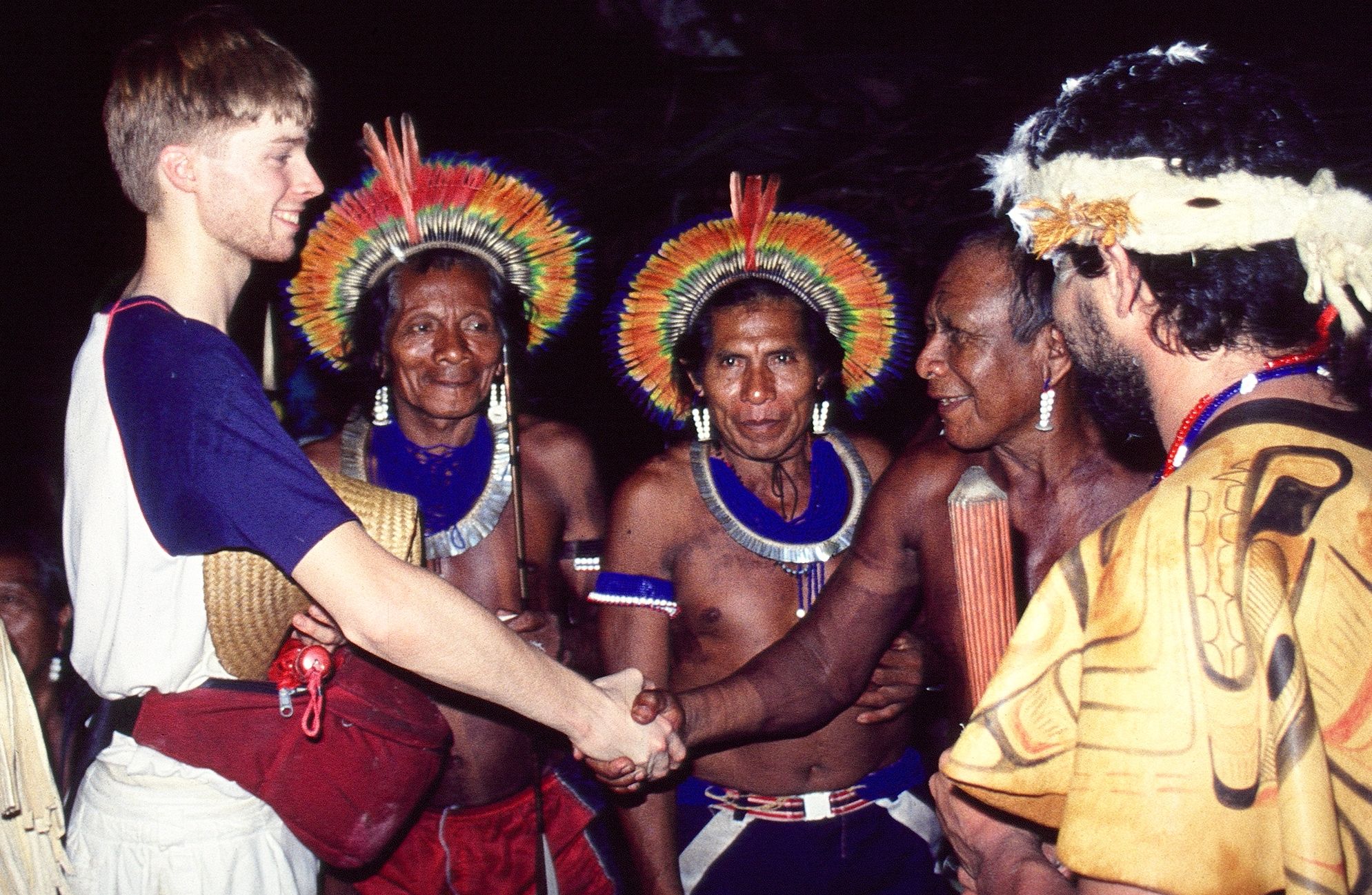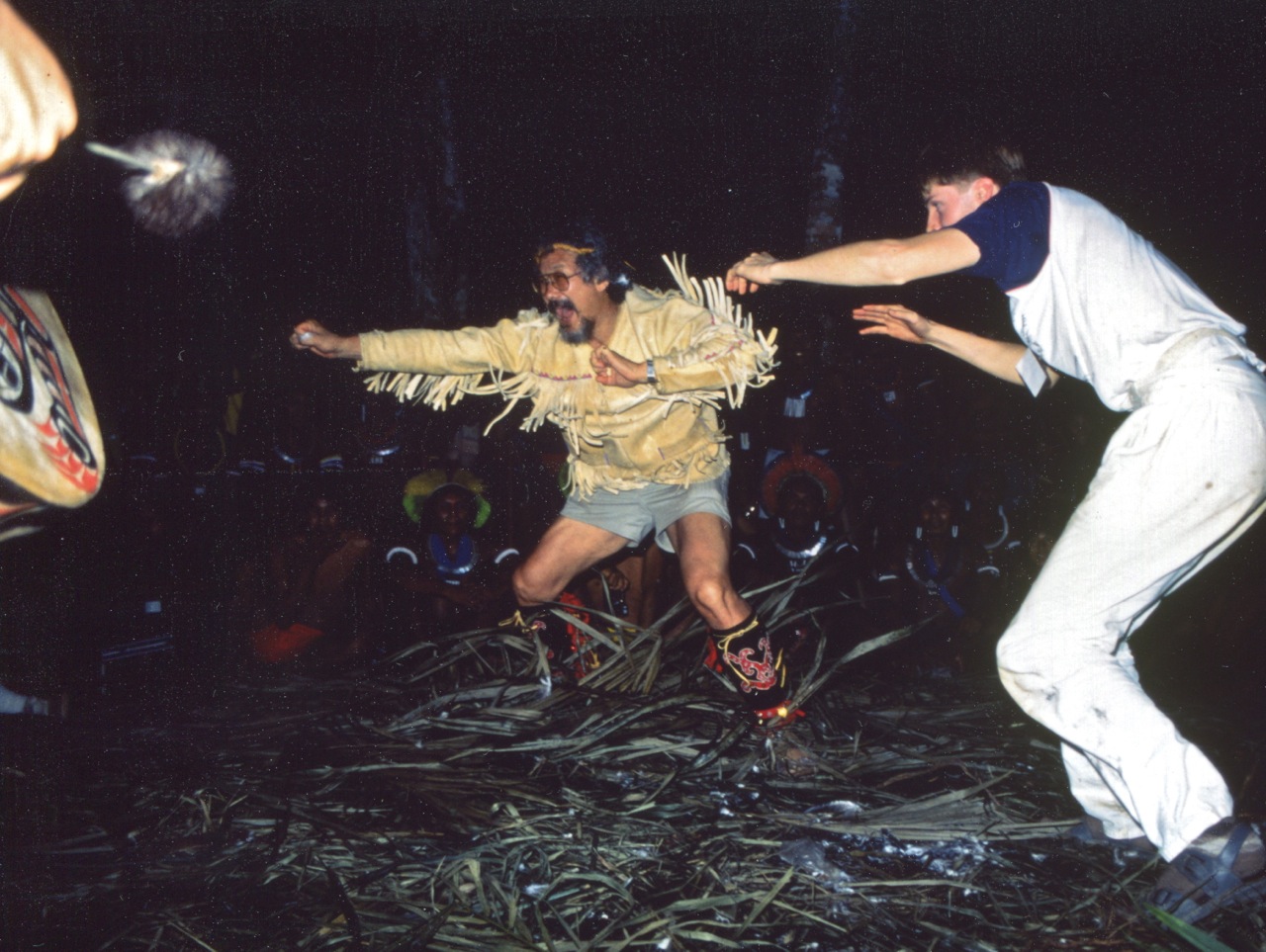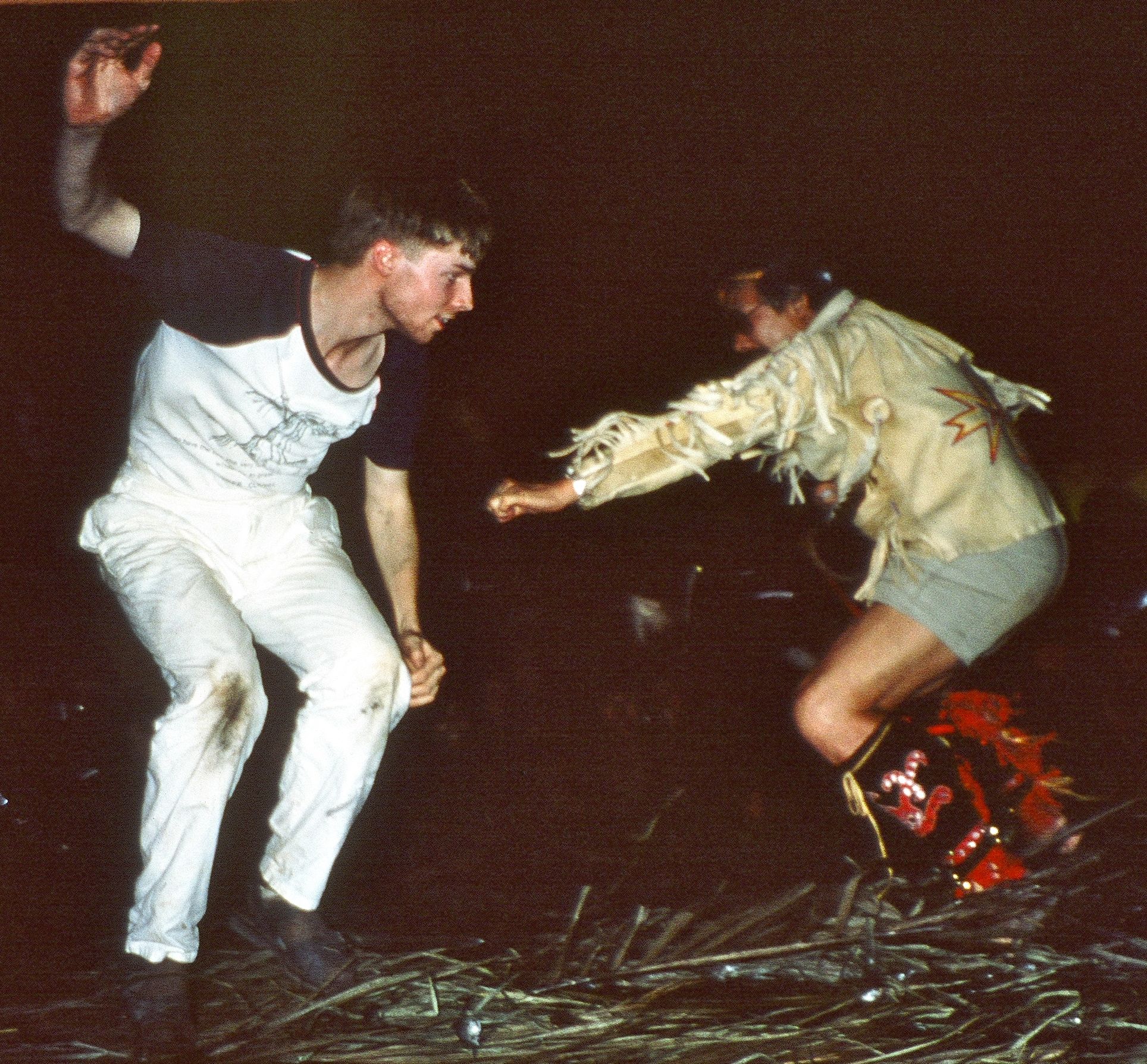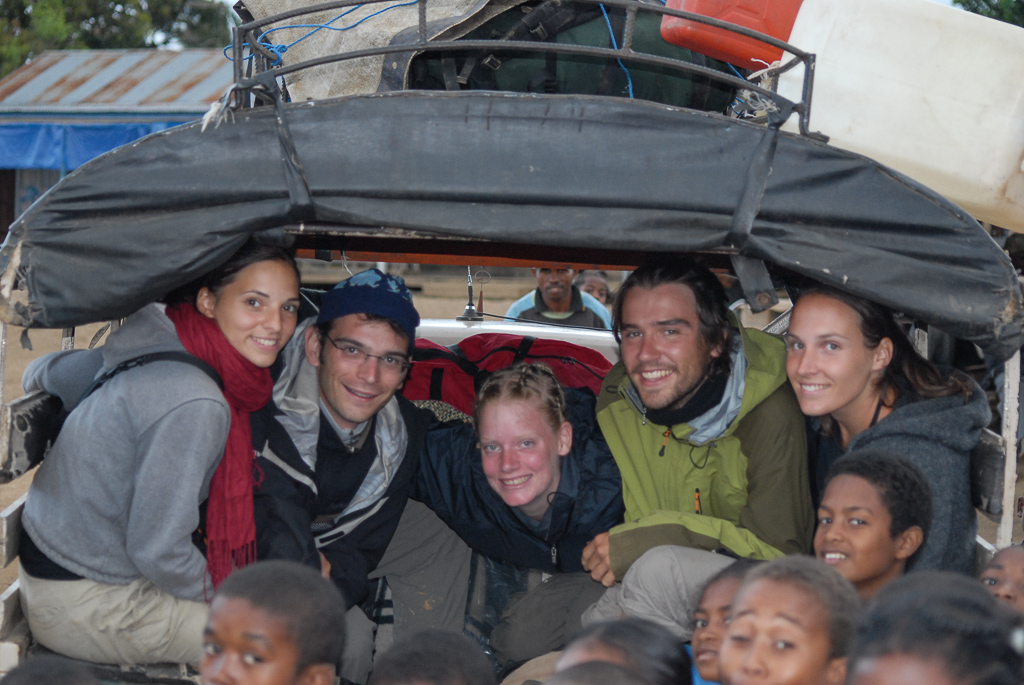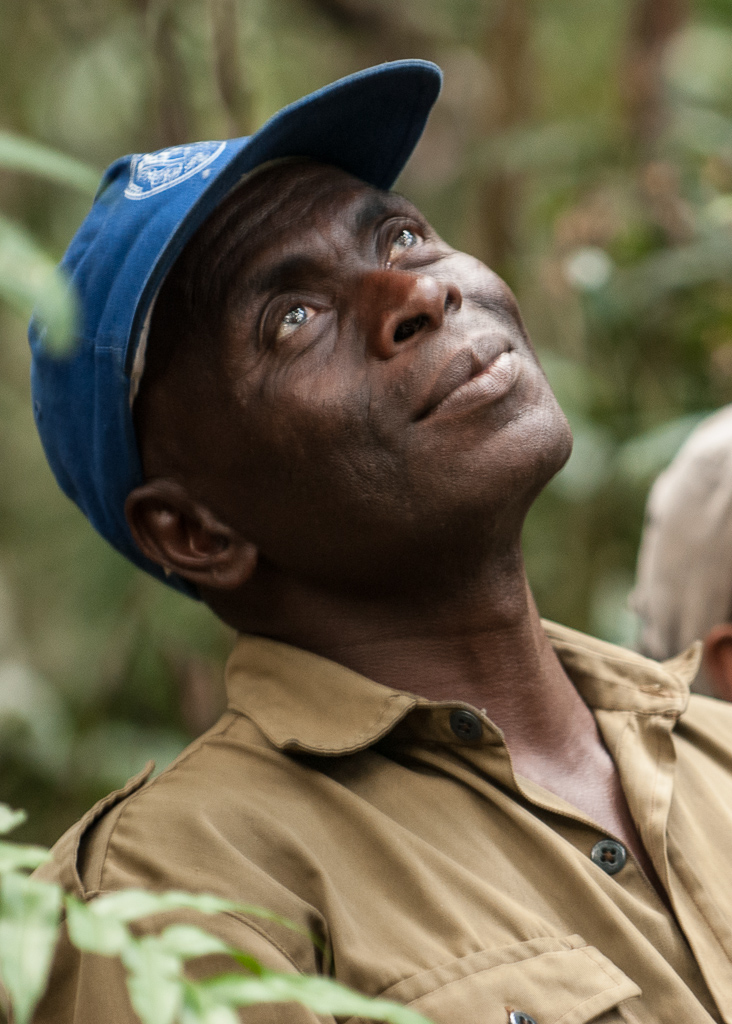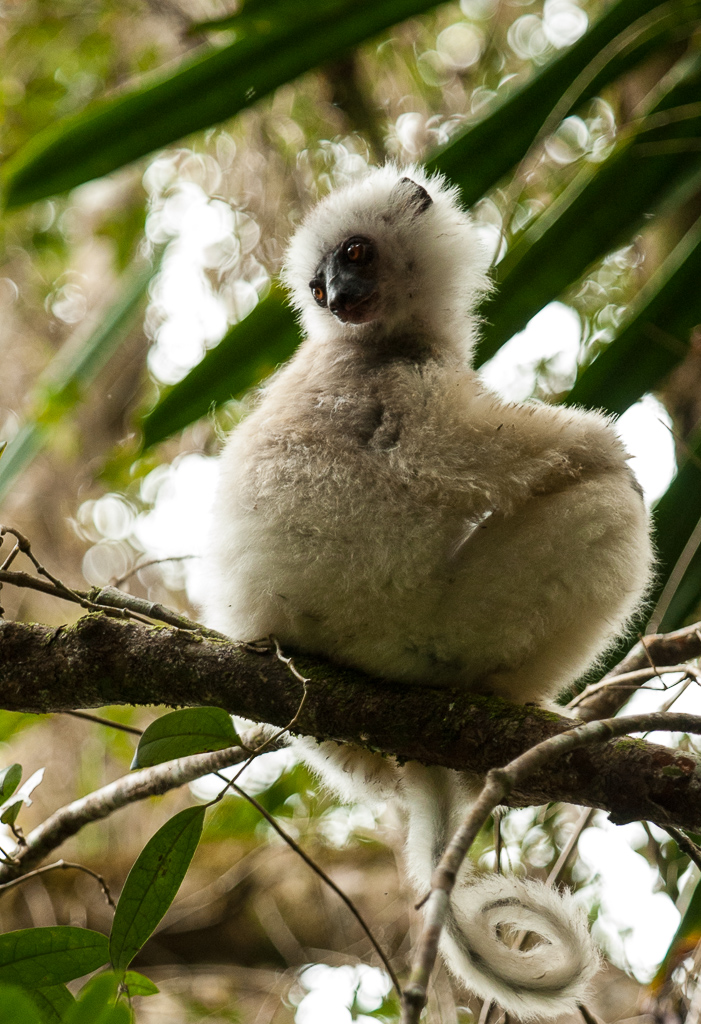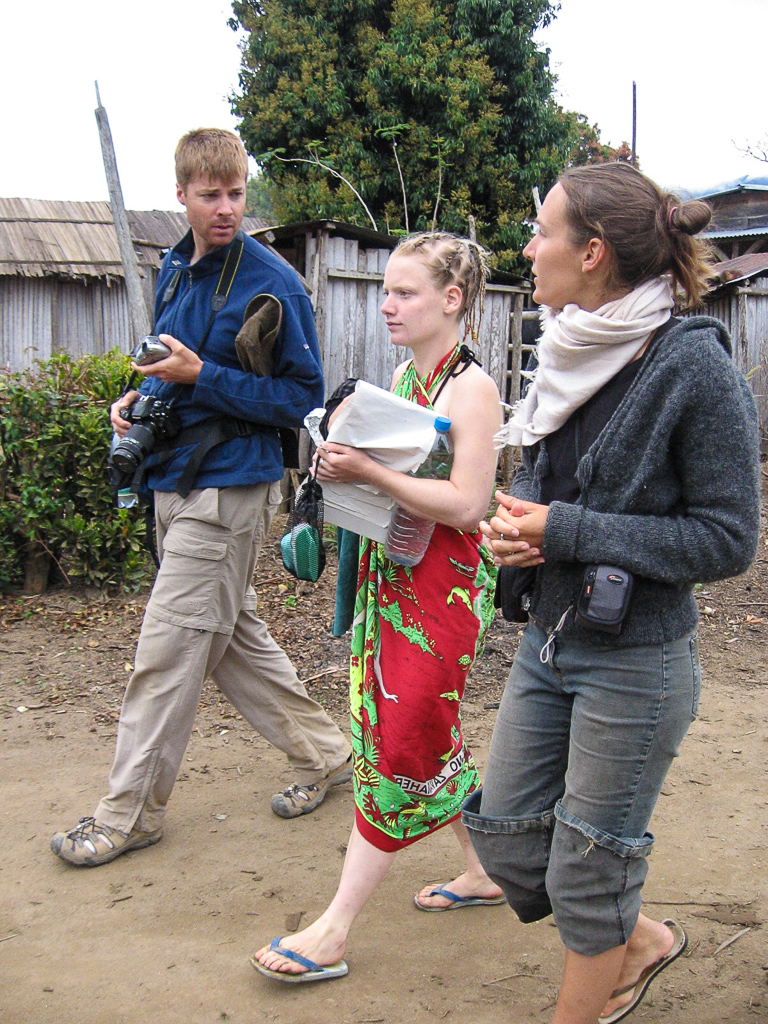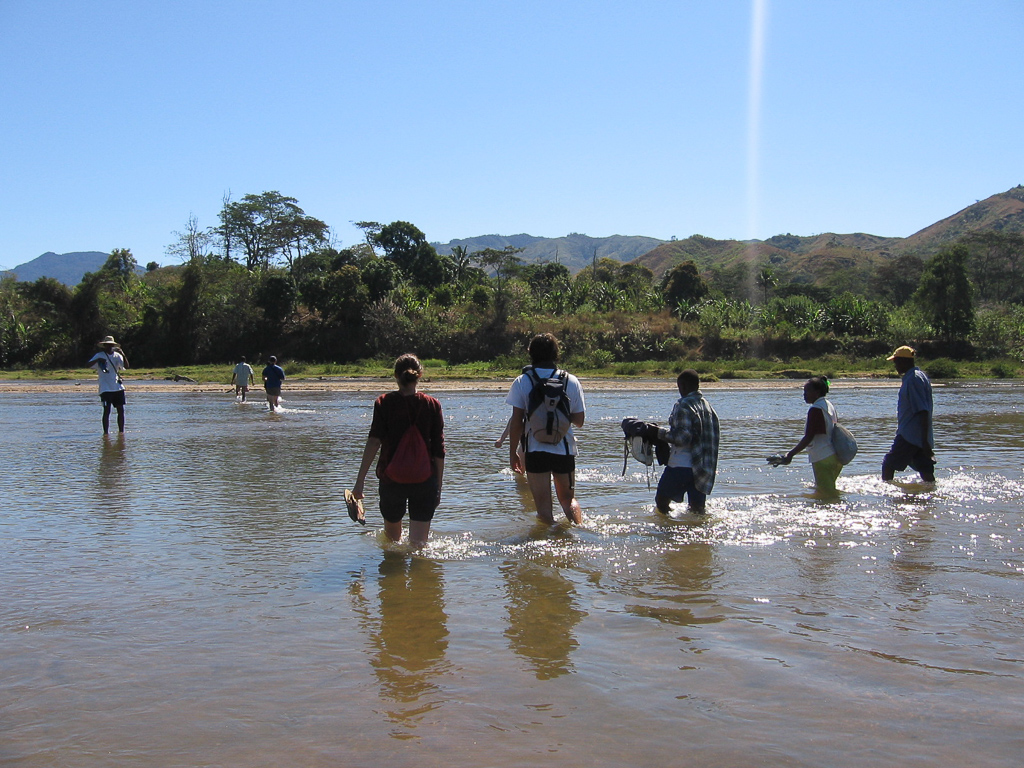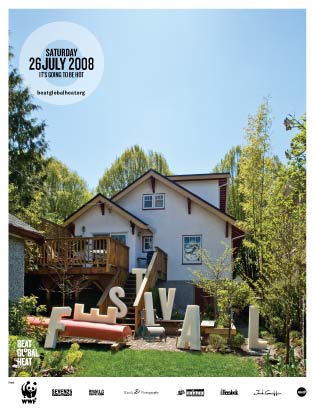






The Epiphany
The Epiphany
“In a way, I never returned from my first journey to Haida Gwaii, for it had changed me forever.”
Jeffrey standing in a former forest
Journey to Haida Gwaii
Jeffrey (also known as Jeff) grew up in Vancouver, Canada in a family of modest means with a politically conservative worldview. At age 16, he had a pivotal life experience when he joined a high school field trip to Haida Gwaii, a remote and rugged archipelago located in the North Pacific Ocean (found off Canada's northwest coast and just below Southeast Alaska). While traveling in the wild southern reaches of the islands — now called Gwaii Haanas but formerly referred to as South Moresby — he encountered a “biological Disneyland”, as he then wrote in his journal. Vast verdant forests contained enormous trees that were over a thousand years old and carpeted with deep moss of every hue of green. The stench of rotting fish hung in the damp air near streams where scores of spawning salmon had recently returned to lay their eggs and die. Dozens of species of birds, often in sizeable flocks, made the forests and seas their home. He sighted the world’s largest black bear species roaming the shoreline overturning heavy rocks looking for crabs to eat. Low tide revealed a fecund marine world in which every available space was occupied by fantastic forms of life. Gwaii Haanas means “place of wonder and beauty”, and it is felicitously named.
This was a life altering journey for a city kid who had grown up in an environment where everything was man-made and tamed. He began to understand that there was a vast web of life that wraps around the Earth; one to which he was somehow connected. It was an epiphany — a realization that there was something much grander and more important than himself but which at the same time included him.
He was horrified to see that the primeval temperate rainforests of Gwaii Haanas were being devastated by clear-cut logging. The landscape was destroyed on such a vast scale that at first he thought it must be a bomb test site for the military. The loss of nature he had come to love hit him in an unexpectedly personal way — he felt a visceral pain in seeing the scarred land. Although he was a shy kid, he knew he had to do something.
Joining the struggle
Immediately upon returning to school, Jeffrey formed a student campaign group at his high school in Vancouver in order to help secure the protection of Gwaii Haanas. The group was called Teenagers’ Response to Endangered Ecosystems (TREE Club). Their first action was to contact politicians directly by writing to every Member of Parliament in Canada and all the Members of the Legislative Assembly of British Columbia (over 400 hand-written letters) — citing their personal experience of Gwaii Haanas and imploring the politicians to prevent its destruction. Next they created an elaborate musical slide show called WildVision about their Gwaii Haanas experience. Not an ordinary slide show, WildVision was billed as "a sight and sound extravaganza" and involved six projectors and three screens, with actors and musicians on stage interacting with the images. Word of mouth spread and WildVision toured to packed theatres, raising awareness and funds for the cause.
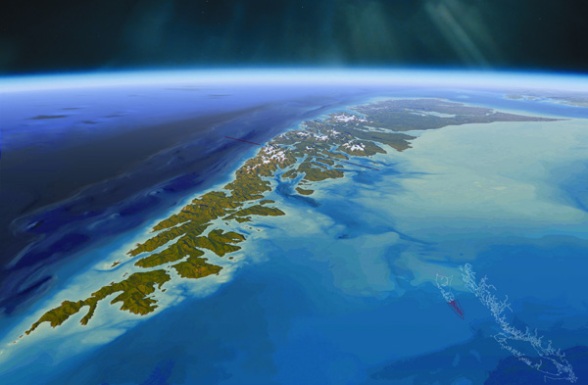
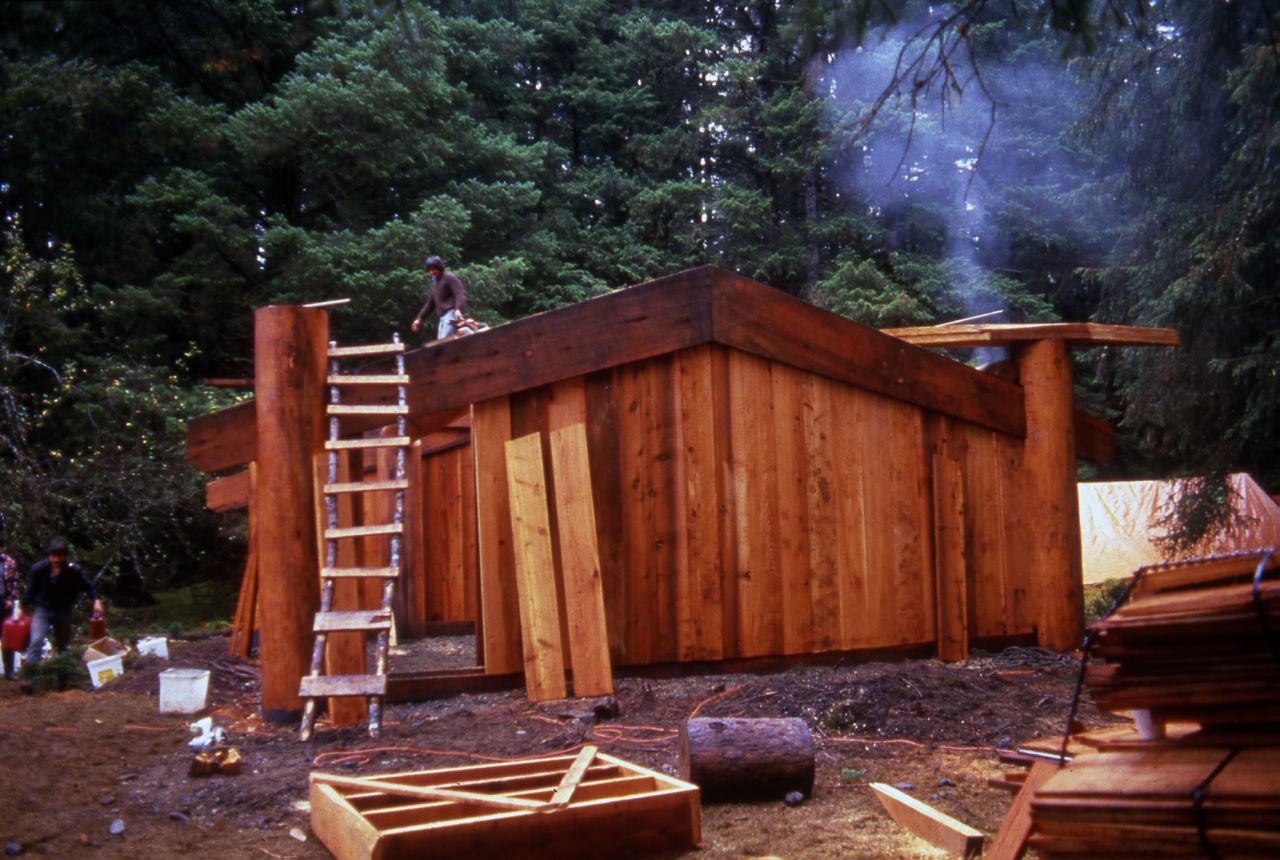
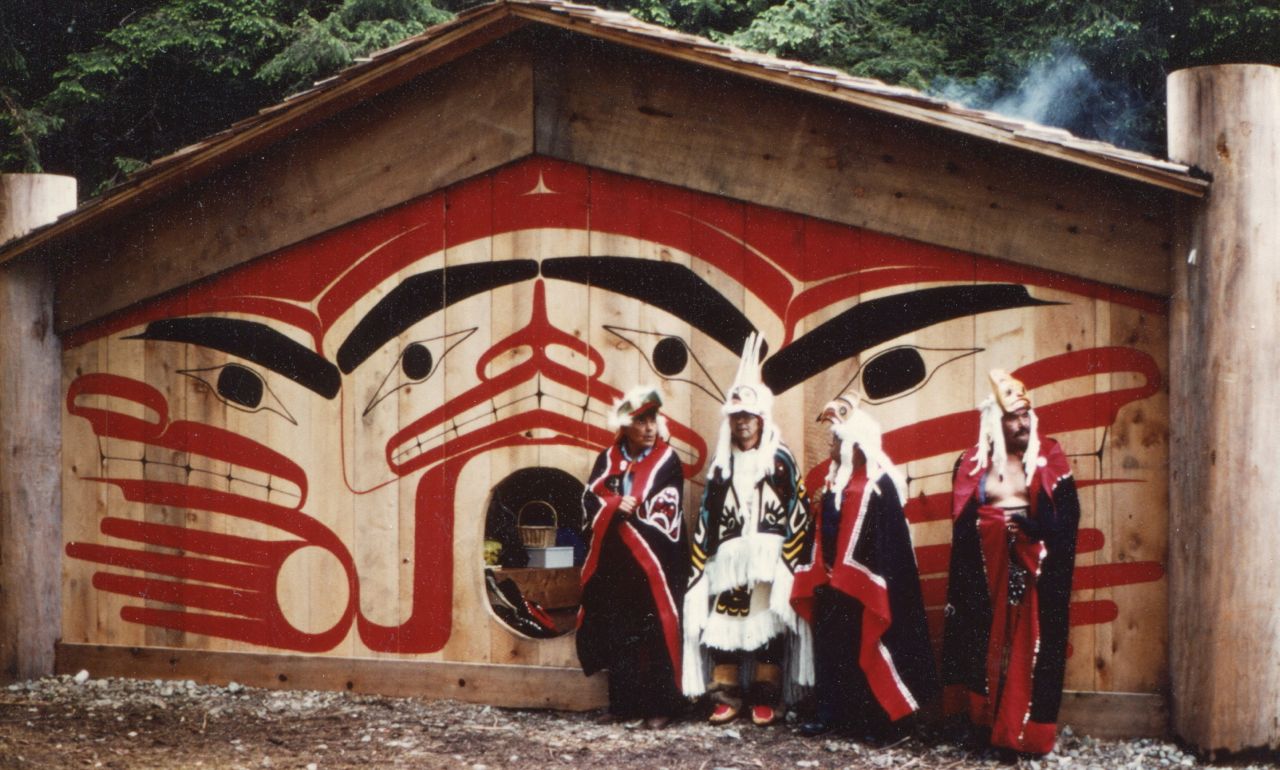
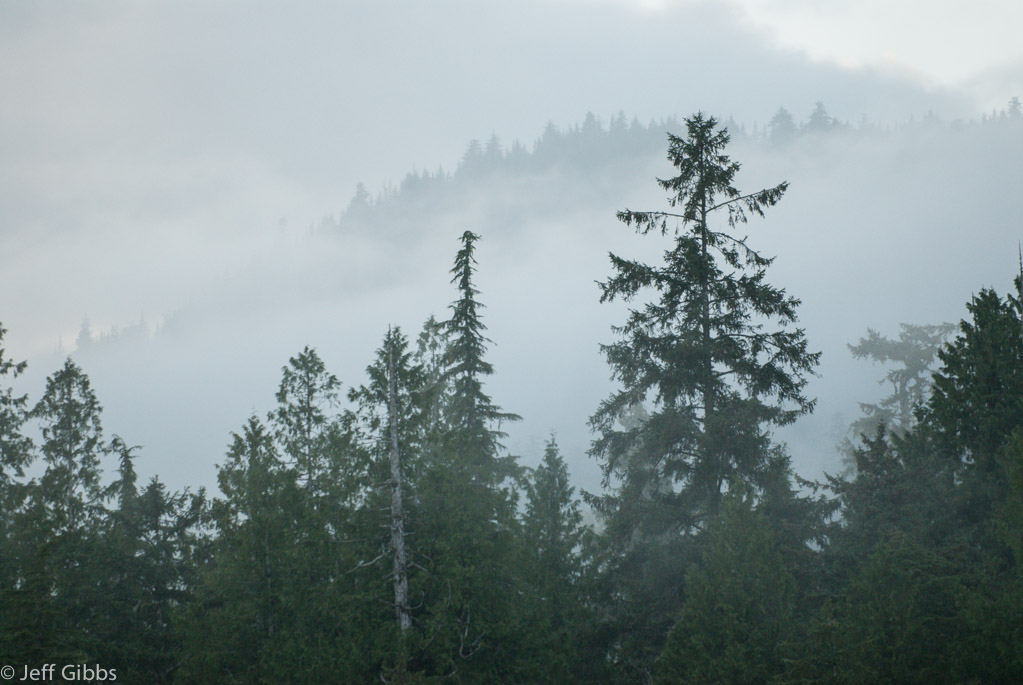

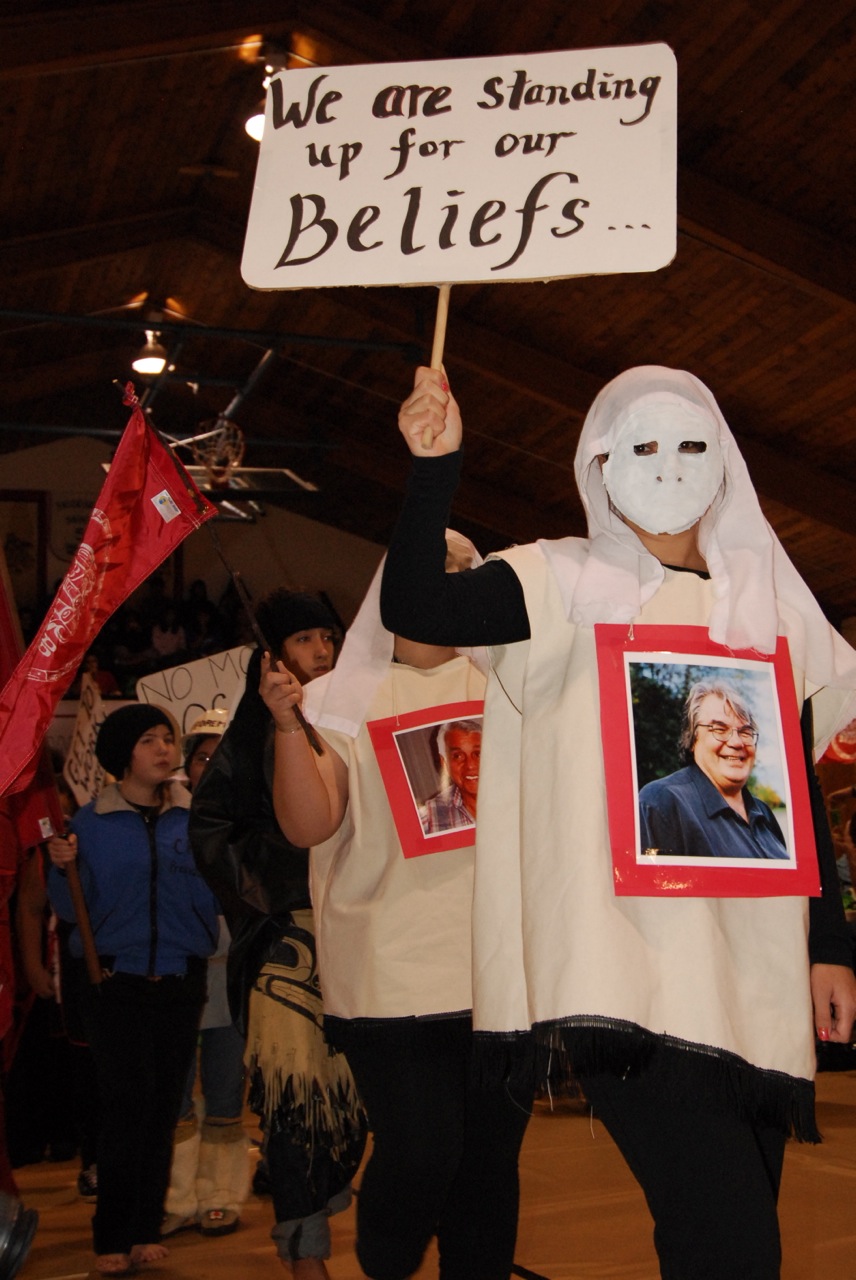

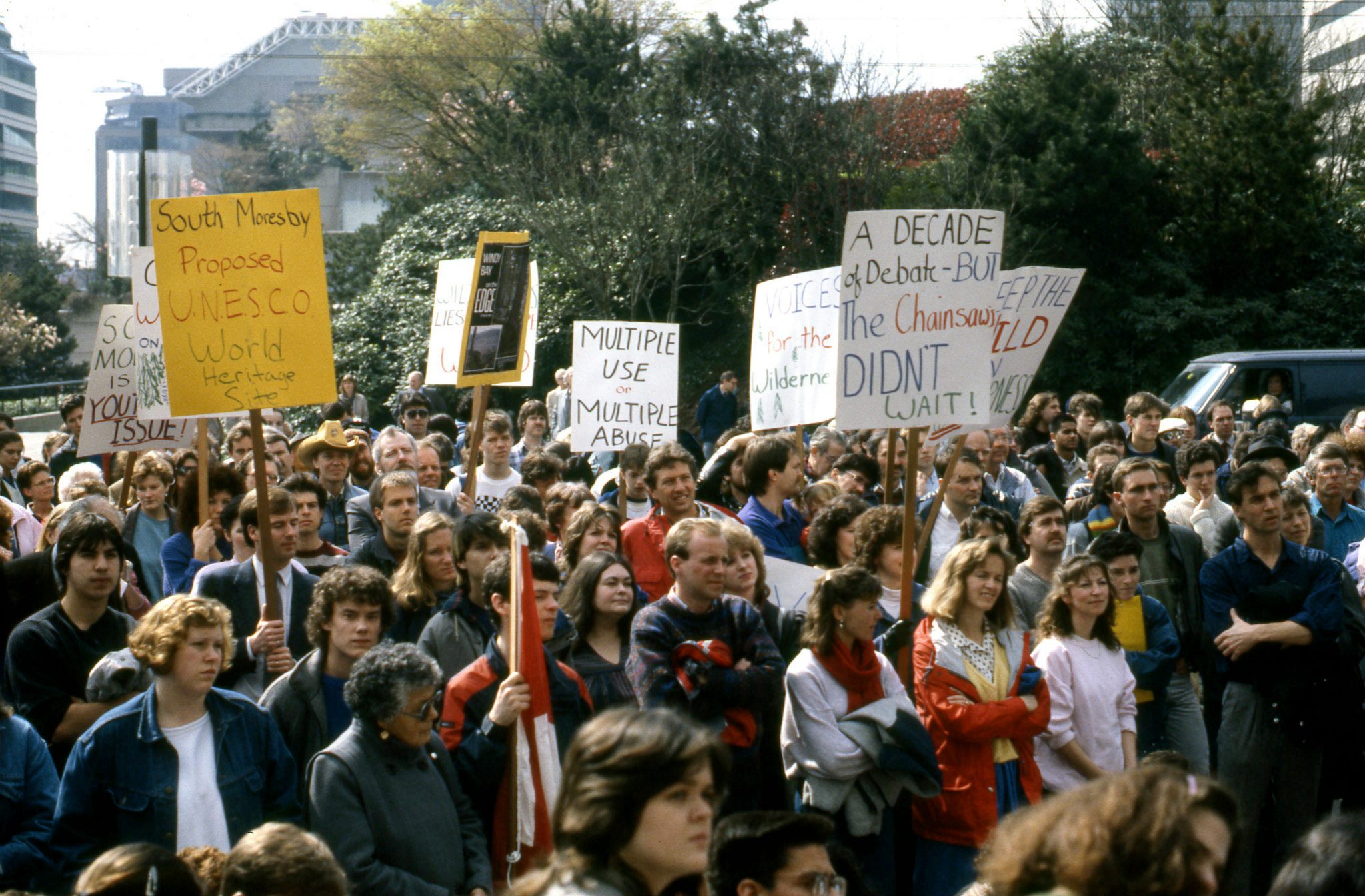

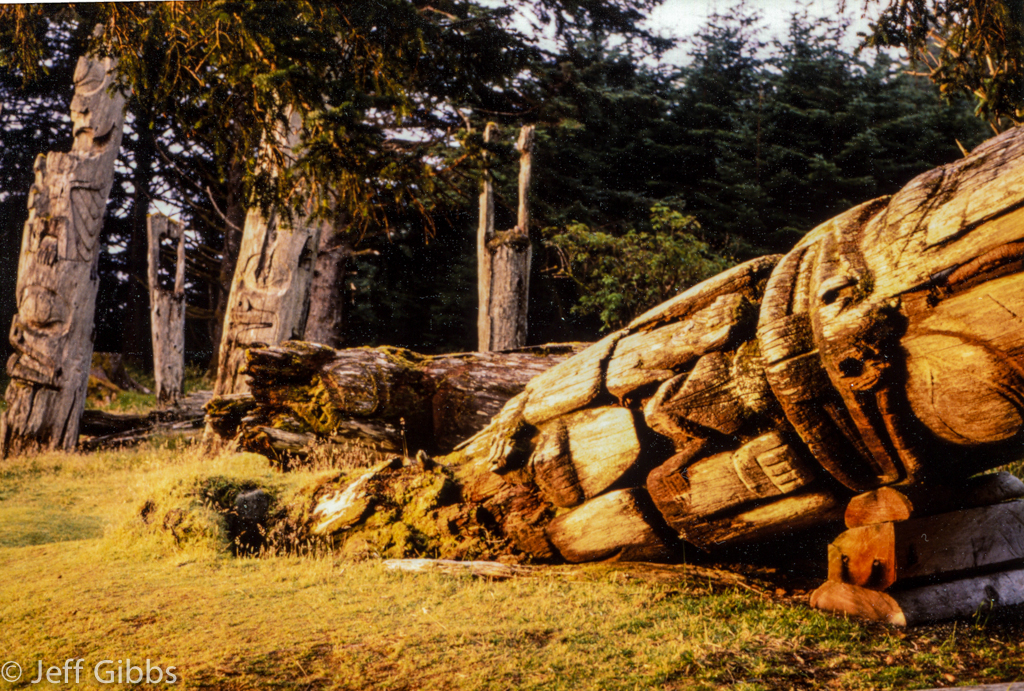
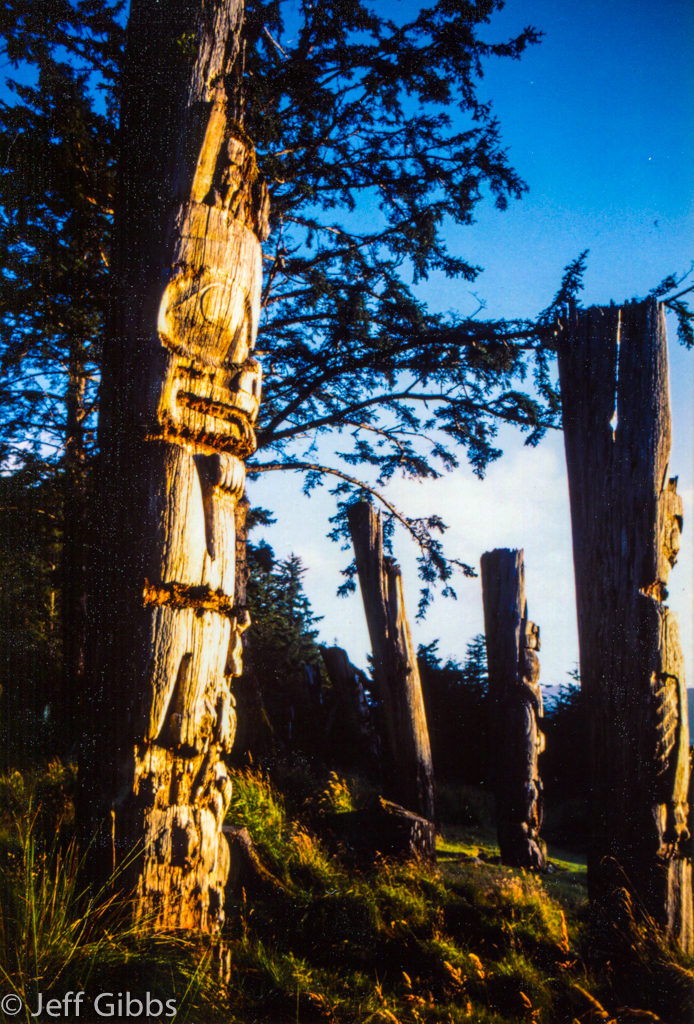

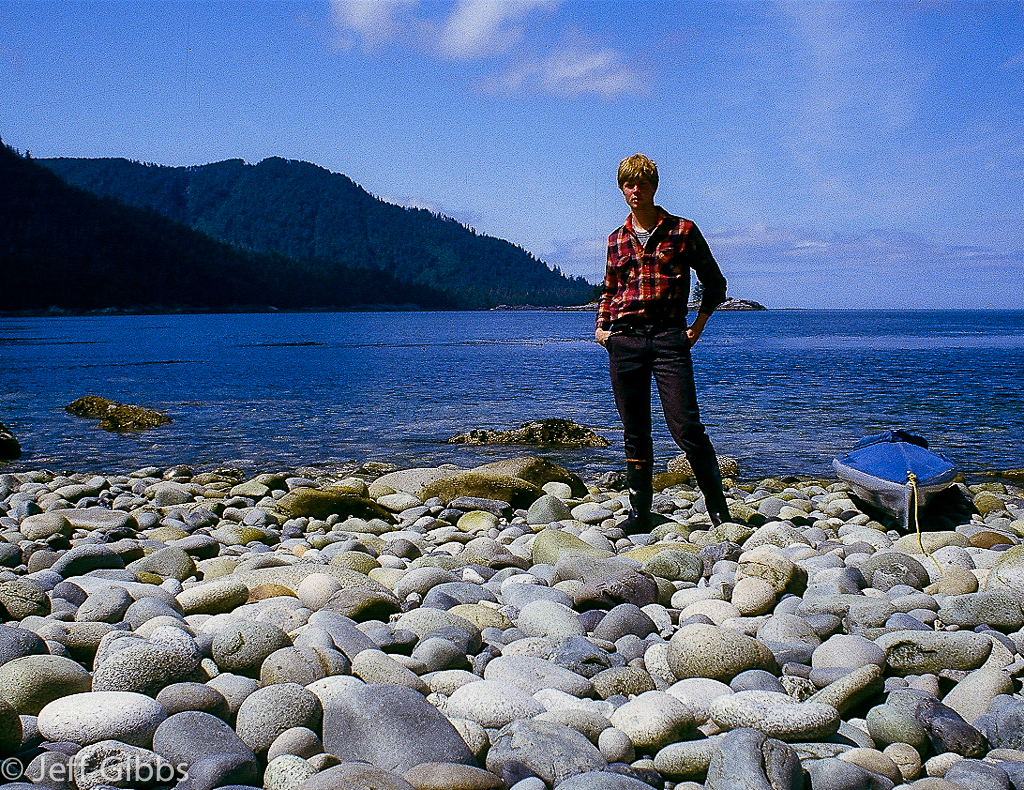
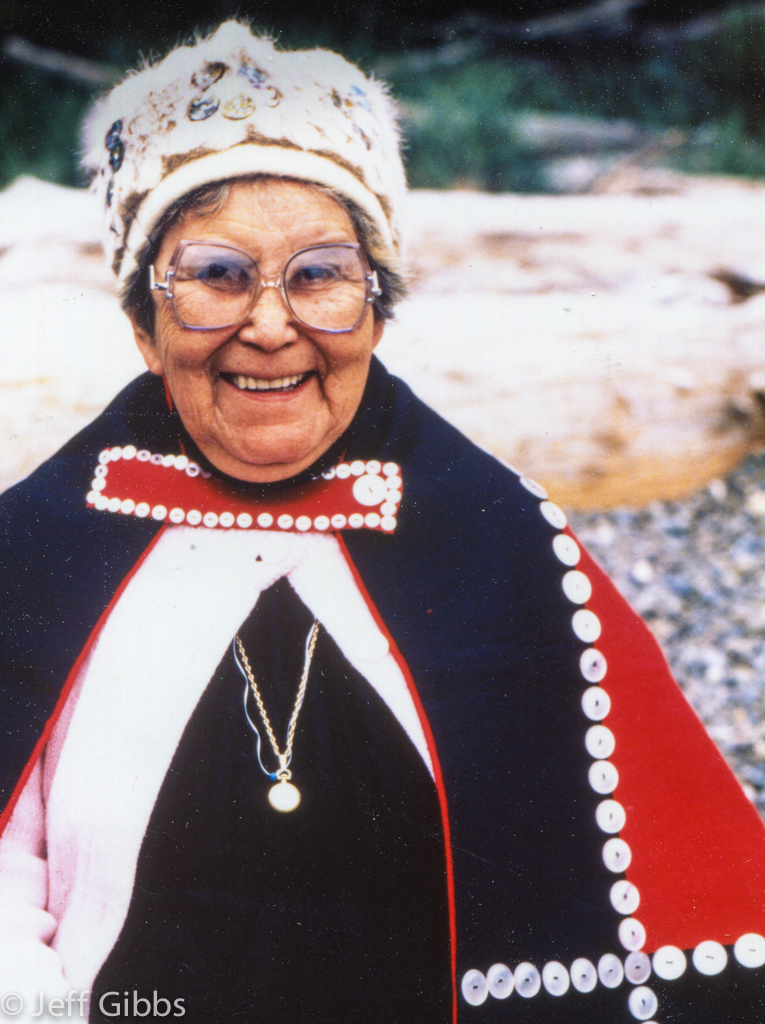
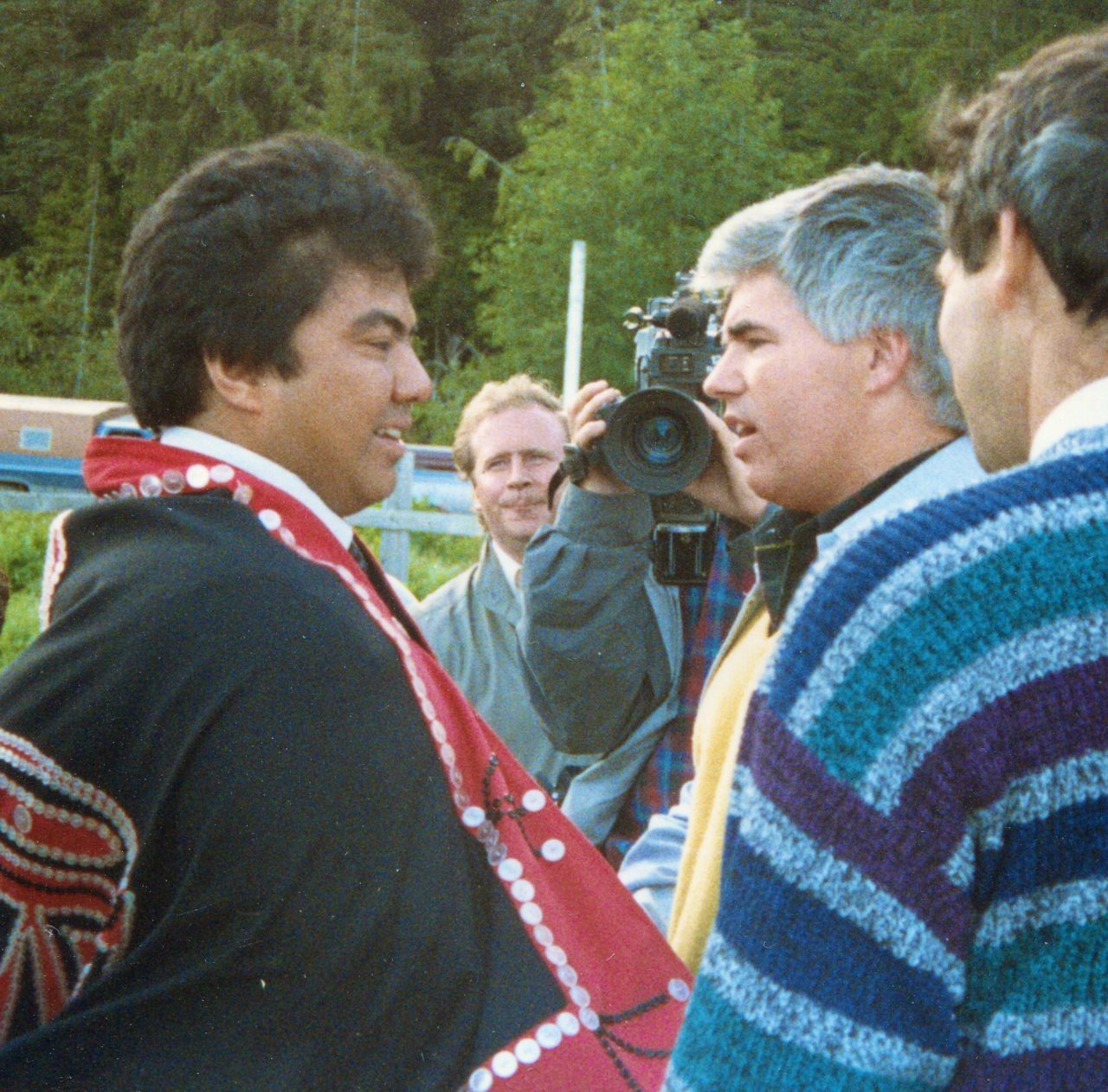
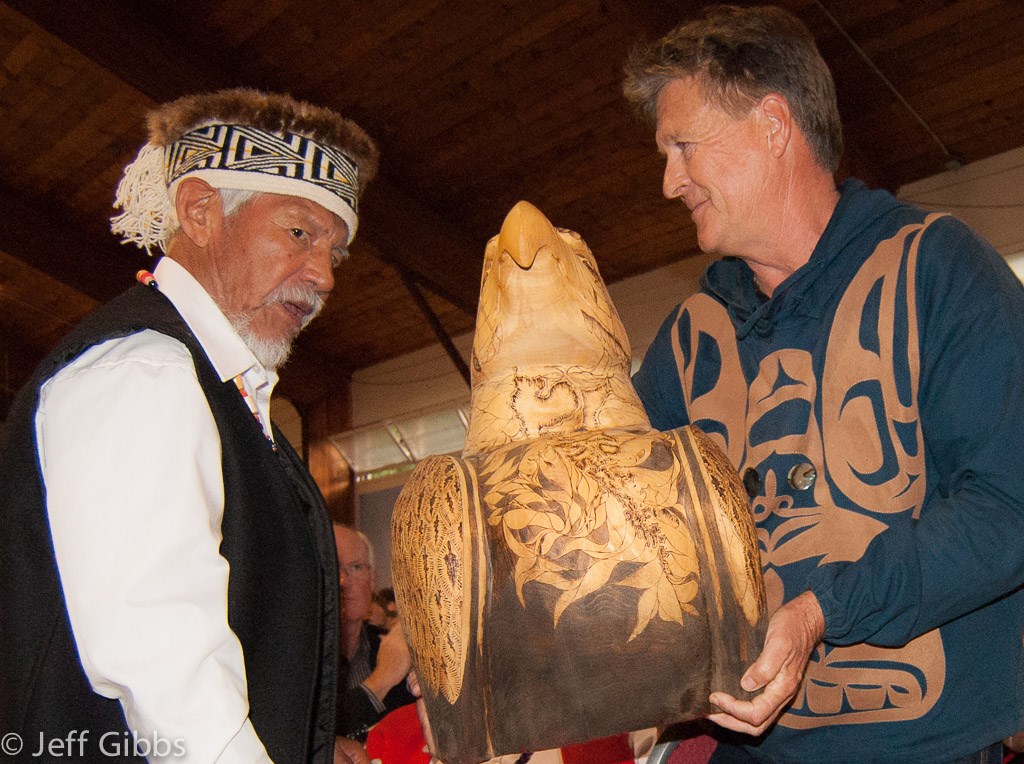
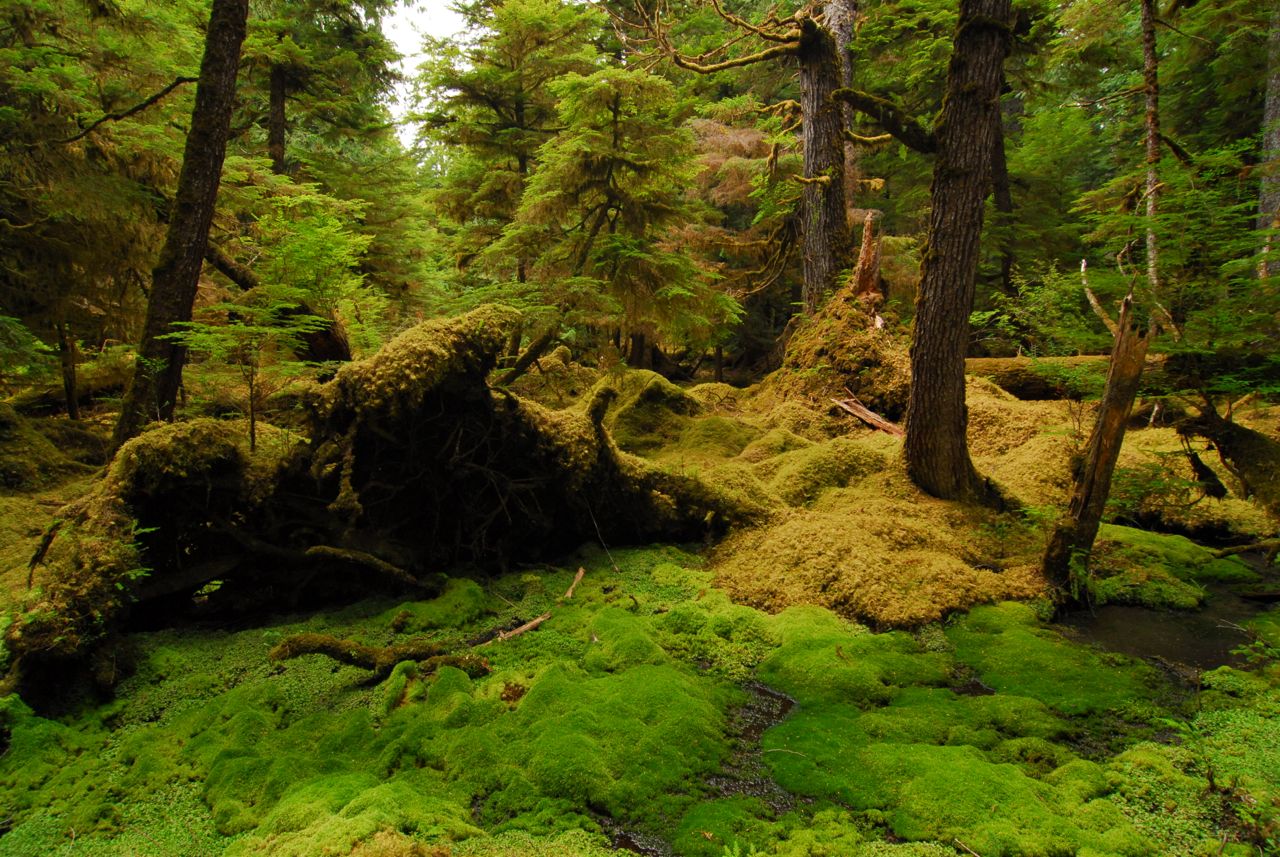

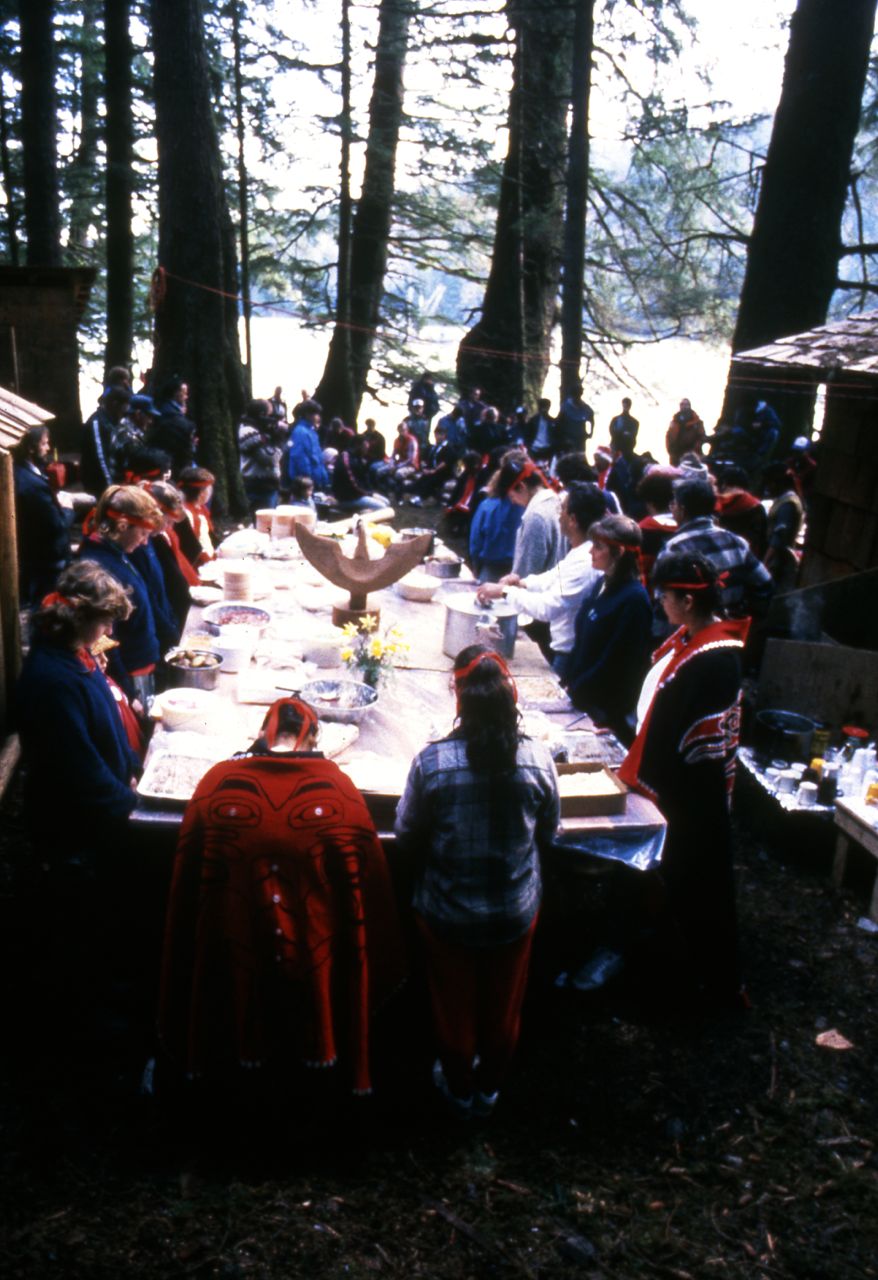
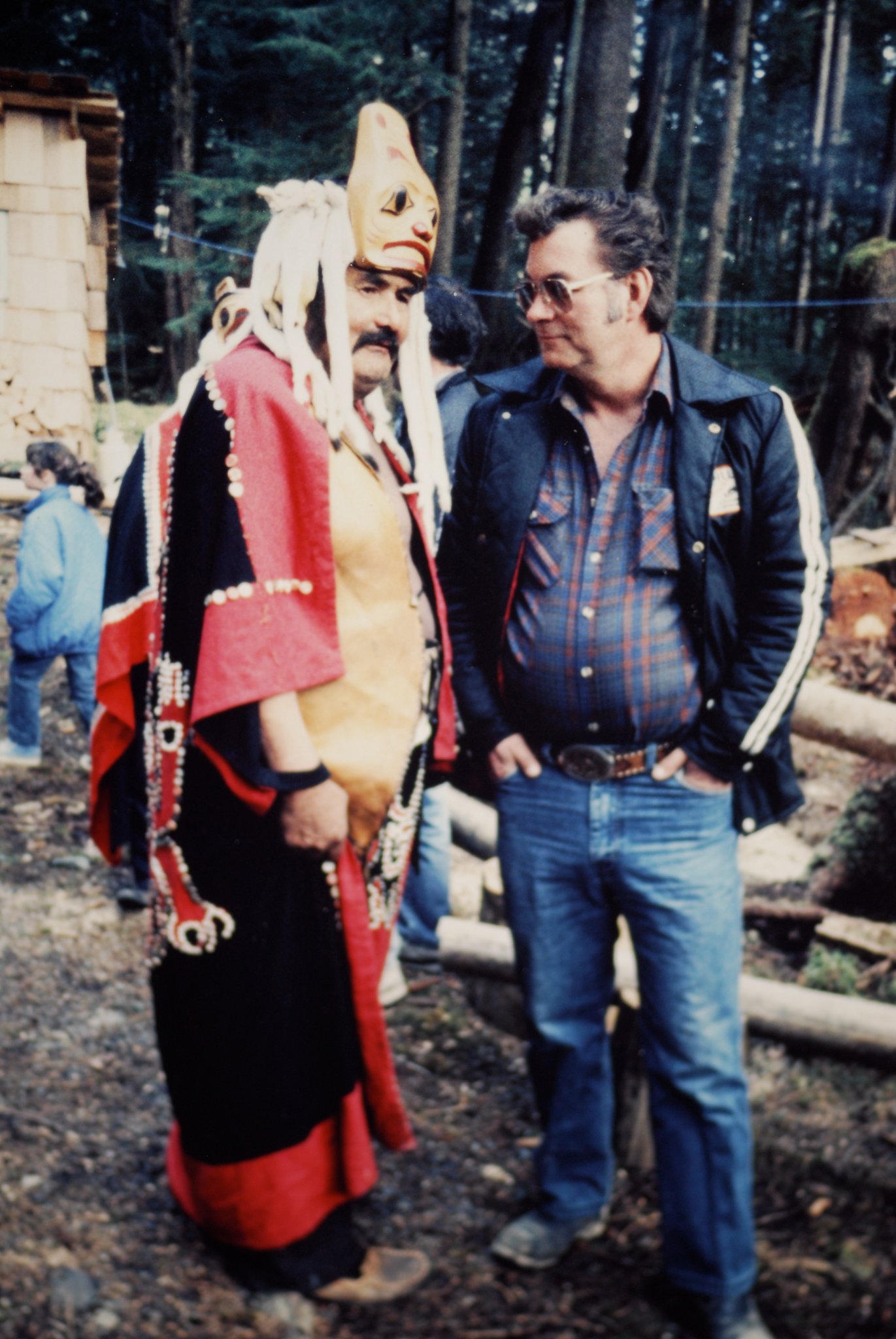
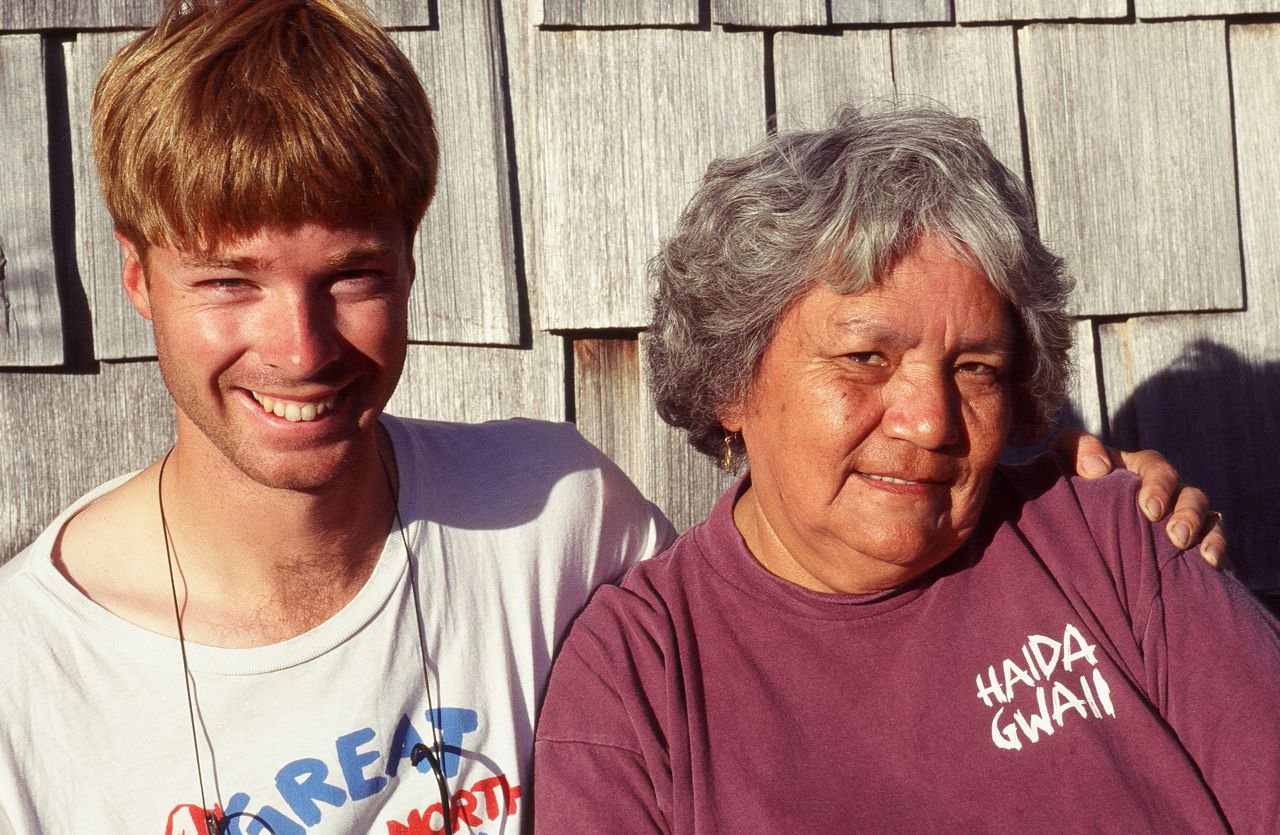
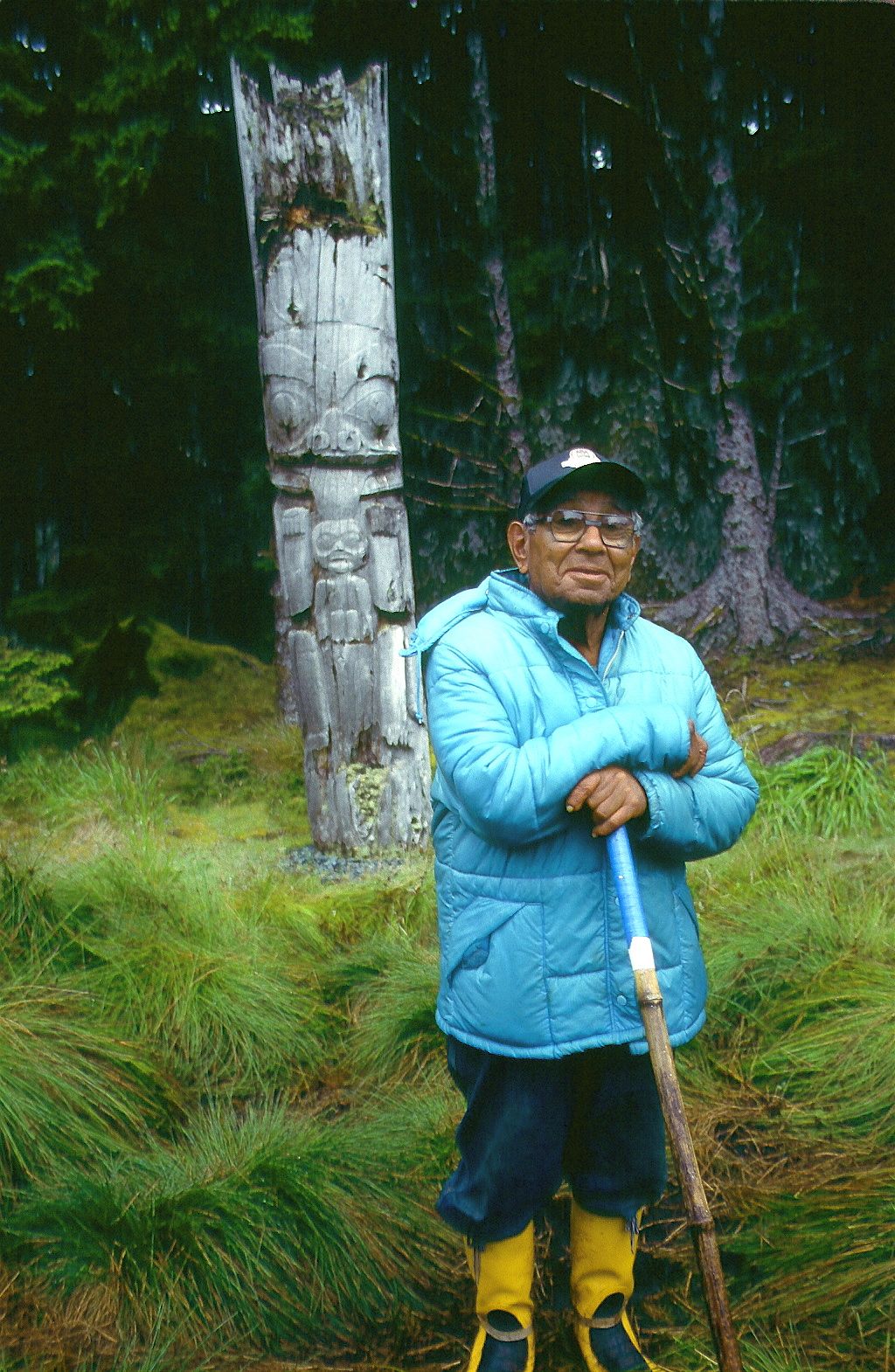

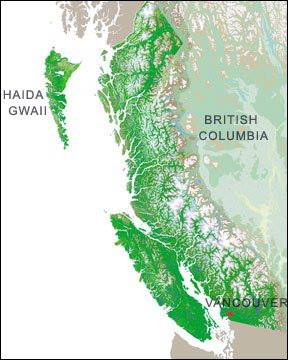

He then organized his friends to go door-to-door in neighbourhoods across Vancouver in order to engage citizens in conversations about the value of Gwaii Haanas and, most importantly, how to influence politicians to protect it. Over 5,000 households were reached by these teenagers! Later, he met with the Premier of British Columbia, both the BC and Federal Ministers of Environment, and the Leader of the Official Opposition in Canada's House of Commons. He also testified along with one of his friends at a high profile government commission set up to find solutions to the conflict in Gwaii Haanas and other contentious wilderness areas. During this time, he contacted his hero Dr. David Suzuki to involve him in the TREE Club's efforts. Dr. Suzuki is a scientist, author, and TV host, and one of the most esteemed and well-known environmentalists globally. Together with humanitarian and conservationist Dr. Tara Cullis (Suzuki's wife) they collaborated on numerous campaign activities for Gwaii Haanas and other threatened places.
“When, or if, we should decide that subduing is not the only, or even most desirable way of making our way through the world, these shining islands may be the signposts that point the way to a renewed harmonious relationship with this, the only world we’re ever going to have.”
Haida citizens peacefully blocking the logging road on Athlii Gwaii (Lyell Island). located in the Gwaii Haanas region.
Jeffrey visited Haida Gwaii regularly during his teenaged years and came to know the Haida, the indigenous people who have lived on the archipelago for millennia. The Haida taught him that there are entire societies — the world's indigenous peoples — who are defined by their connection to the natural world. In fact, the clear-cut logging in Gwaii Haanas was illegal according to Haida Nation law because they had previously designated the region as a Haida Heritage Site, which banned industrial activity there. Seventy-two Haidas, including three elders, were arrested by Canadian police for peacefully using their bodies to blockade the foreign corporation's logging trucks operating in Gwaii Haanas. Their stand garnered international media attention.
Intro sequence from TV documentary about Jeffrey's connection to Haida Gwaii.
Jeffrey became friends with several Haida people, most notably with Guujaaw, a charismatic and worldly Haida artist and political leader who was a key figure in the campaign to protect Gwaii Haanas. Guujaaw invited him to join a late autumn trip to Hlk'yah (Windy Bay), the most ecologically significant watershed in Gwaii Haanas, where a team of Haidas were building a traditional cedar longhouse at the site of an ancient Haida village amid the immense spruce trees. The longhouse was being constructed in order to assert the Haida Nation's sovereignty of the area and dissuade its imminent destruction by logging. He also traveled with an elderly Haida medicine man to the far-flung and mysterious small island of SG̱ang Gwaay Llnagaay (aka Ninstints) to be caretakers of the remnants of an ancient Haida village that is a UNESCO World Heritage Site. He then undertook an ambitious and foolhardy solo kayak trip through Gwaii Haanas that almost claimed his life when a fierce gale blew him far from shore and into towering, frothy seas. Later, after spending a month in Gwaii Haanas with two elder Haida matriarchs (who were among those arrested at the blockades), they bestowed on him the Haida name Kuuyaa (Precious).
Haida Village, 1878
Understanding the layers of oppression
Jeffrey’s exposure to Haida society during his teenaged years represented his introductory education about the catastrophic result for indigenous societies when Europeans first arrived in, then occupied, their lands. Listening to his Haida friends, he learned that during the 1880s, as a result of contact with European traders, smallpox and other diseases were introduced to Haida Gwaii with devastating consequences for the Haida Nation. In a few short years they lost about 95% of their population to the plagues. From 20,000 or more people, only about six hundred survivors remained. In the aftermath of that unprecedented calamity, Haida society began to be overwhelmed by the values and laws of the newcomers. The disease survivors were huddled by government and church organizations into tiny communities called “reserves” that represented less than one percent of Haida Gwaii’s land base. The newly formed state of Canada illegally assumed control of Haida Gwaii and encouraged settlement by people of European decent (despite the fact that the Haida Nation had not relinquished its sovereignty or ownership of Haida Gwaii nor signed treaties with Canada). Totem poles, artefacts, and remains of over 500 deceased Haidas were stolen and shipped off to museums and storage facilities around the world. By the 1950s, the Haida had almost no influence over their lives because the new power of Canada had implemented its own laws and policies for all aspects of life. With the Haida in this vulnerable state, industrial exploitation was able to engulf Haida Gwaii’s ancient forests.
Haida Shamans. Photograph by Edward Dossetter, 1881
This crucible of oppression experienced by the Haida was also visited upon indigenous nations throughout Canada. The potlatch ceremony, which is the central legal and cultural practice of a functioning Haida society (as well as to other West Coast and interior native nations), was outlawed from 1884 to 1951. The federal Indian Act, which is still in force today, made indigenous people wards of the state who could not even own land in their own communities. Indigenous people in Canada could not vote in federal elections until 1960.
From 1840 to 1996, the Government of Canada, in partnership with Christian church organizations, took indigenous children far away from their communities to the innocuously-termed "residential schools" where severe abuse was commonplace and the children were not permitted to use their own language — an act that was tantamount to cultural genocide according to the Chief Justice of Canada's Supreme Court. In the case of Haida children, they were sent as far away as Alberta, often not returning home for years. The Haida today are making great efforts to recover their traditional language.
This history of oppression stretching over a century is the context for the Haida roadblocks on Lyell Island. Their heroic and bold action was a turning point in which the Haida Nation came together as a united force and were able to begin to reassert control over their lives and lands, and rejuvenate their society and culture; a process which continues to this day.
Sphenia Jones
"I am now 73 years old. I was at Indian residential school from age 11-15. I had to work in the infirmary, where there were many sick and hungry children. I’d steal food like peanut butter and bread to feed them. A lot of kids died there. I had to handle the dead children — wrapping them to be buried. Once I got caught speaking my native language. I wasn’t aware my language was different. My punishment was having four fingernails pulled out. At residential school we all received numbers. I was known as #702. But my name is Sphenia. It’s an Ojibwa name that means ‘on my way’. For many years now I’ve worked as an advocate for abused children. I started a school for indigenous kids in Vancouver called Spirit Rising Cultural Survival School." — Sphenia Jones, Haida elder, 2017.
None of this history of the Haida and other indigenous peoples had been taught to Jeffrey during his entire time in the Canadian school system, nor was it a subject that was discussed in the news media or explored in popular culture (films, TV shows, etc). He only learned of it by asking his Haida friends many questions, and by taking the time to just listen and process the profound truth they were speaking.
Pictured here left to right are Thom "Huck" Henley, Kevin McNamee, Jeffrey Gibbs, Vicky Husband, John Fraser (MP and Speaker of the House), John Broadhead, Colleen McCrory, Tara Cullis, Elizabeth May, David Suzuki, Greg Sheehy and Terry Husband (no relation). Photo taken in Hlk'yah (Windy Bay).
The Save South Moresby Caravan arrives in Vancouver.
An unprecedented grassroots movement
While the campaign for Gwaii Haanas was a key moment for Haida society (in their standing up to face down colonialism), it was also a pivotal issue in the evolution of the environmental movement in Canada. Campaign efforts, led in the early years by a tiny rag-tag volunteer group of local environmentalists, scientists, and Haidas, grew steadily over a period of more than ten years to become a large and diverse national coalition of organizations and individuals representing hundreds of thousands of people working together to protect Gwaii Haanas. There were seemingly countless newsletters to be written and distributed, community meetings to be organized, benefit concerts to be staged, and government hearings to participate in over the course of more than a decade. Meanwhile, pioneering eco tourism operators set up shop in Gwaii Haanas and enabled thousands of people, many of them influential ones, to connect with its magic directly. Three nationally-aired television documentaries hosted by David Suzuki brought hundreds of thousands of Canadians to support the cause. In neighbourhoods across Canada, citizens began to organize their own awareness-raising and fundraising events for Gwaii Haanas. These events had no central direction or control. It was a grassroots phenomenon. In many ways, the movement to save Gwaii Haanas was to Canada’s environmental movement what the campaign to protect Yosemite was to the environmental movement in the USA: a flagship issue that engaged so many people that the wider environmental movement was greatly strengthened in the process. Thousands of Canadians wrote letters to their elected officials demanding that Gwaii Haanas be spared the axe. In fact, Canada’s national government received more letters in support of Gwaii Haanas’ protection than all other environmental issues combined. Visionary environmentalist Thom Henley led an East Coast-to-West Coast train journey dubbed “The Save South Moresby Caravan” that carried campaign leaders and supporters from Halifax to Vancouver. The three-week rail journey linked and invigorated the Canada-wide grassroots movement to save Gwaii Haanas through events hosted in cities and whistle stops en route, culminating in series of public gatherings in Vancouver which Jeffrey assisted in organizing.
John Broadhead (left) and Thom "Huck" Henley were two essential leaders in the Gwaii Haanas campaign. They are pictured here with their seminal book Islands at the Edge, which eloquently promoted the protection of Gwaii Haanas. It became a Canadian bestseller. Broadhead and Henley were also key mentors of Jeffrey.
A Magnificent Victory
The TREE Club was but a small part of this grassroots movement that stretched right across Canada. A highlight of the TREE Club's three-year lifespan happened when Jeffrey spearheaded a large public demonstration in downtown Vancouver. He recruited several high profile people (including David Suzuki and esteemed artists Bill Reid and Robert Davidson) to speak at the rally, contacted media outlets, and organized brigades to make colourful signs. The rally attracted a large crowd and was a top story in the news media. Shortly thereafter, the Haida Nation invited Jeffrey and his TREE Club cohort to travel to the archipelago to witness the Haidas' peacefully standing on a road blockading a clear-cut logging operation — an experience that was at once humbling and electrifying. Four months later, the federal and provincial governments bowed to public pressure and announced a permanent halt to industrial logging in Gwaii Haanas while generously compensating the timber companies and their workers. Jeffrey had the privilege of informing David Suzuki of the news, who wept with joy upon hearing it. It was a victory for the ages that galvanized the renaissance of the Haida Nation while securing one of Canada’s most important ecological treasures. While Jeffrey’s role in this magnificent outcome was very modest, he still felt a tremendous sense of empowerment from the experience. He believed that even the biggest dreams could come true.
Kilslaay Kaajii Sding (Miles Richardson), the remarkable President of the Haida Nation during the eventful period of the Haidas’ stand for Gwaii Haanas and the formative years thereafter.
An Innovative solution
Canada and the Haida Nation remain in conflict regarding the ownership and sovereignty of Haida Gwaii. Canada does not accept Haida sovereignty and ownership of the archipelago nor does the Haida Nation recognize Canada's claim to Haida Gwaii or the authority of Canadian law there. Nevertheless, both nations have agreed to co-operate in managing Gwaii Haanas as a terrestrial and marine protected area. The Haida Nation, through its laws, has enacted Haida Heritage Site conservation status for Gwaii Haanas, while Canada, through its laws, has designated the region a National Park Reserve and a National Marine Conservation Area. In effect, there are two separate national governments with independent conservation designations that cover the same place. They cooperate in managing Gwaii Haanas through a unique instrument called the Archipelago Management Board, which has equal representation of both parties and operates on consensus decision making. Gwaii Haanas now ranks as one of the world's best managed protected areas and greatest travel experiences. Each year, visitors from around the world journey to its distant shores to experience its superlative splendours. Eco-tourism has become a major part of Haida Gwaii’s economy.
Since the achievement in Gwaii Haanas, the Haida Nation have successfully negotiated the protection of many other primary forests on Haida Gwaii. Today more than 50% of the land base is officially protected from industrial development — placing Haida Gwaii equal to the top countries on the global list ranked based on the percentage of their lands set aside for nature conservation (just 14.8% of the world's land surface enjoys protected area status).
Intro sequence from BBC film on Haida Gwaii.
The Story Continues
The work to protect Haida Gwaii's forests is not finished. Outside of the protected areas, destructive clear-cut logging still occurs on Haida Gwaii at a breakneck speed that is removing the remaining ancient forests with a gold rush mentality. Every week, scores of logs are shipped offshore to distant mills; there is virtually no manufacturing of wood products on Haida Gwaii. There is no publicly-accessible information on how many ancient trees still stand in the last places slated for logging. Whether or not there will be any remaining monumental cedar trees available to future generations of Haida carvers is an unanswered question. Furthermore, there is not a sufficient plan to save the Northern Goshawk, which depends on ancient forests for its survival and has been reduced to only 50 individuals. A grassroots movement is forming to once again to unite the Haida Nation and residents of Haida Gwaii to reform these logging practices.
To be continued...

Amazon Encounter
Amazon Encounter
The Historic Altamira Gathering
Jeffrey's first visit to the Amazon jungle came as a result of a grave threat to one of its major rivers. The Brazilian Government planned to construct a series of mammoth hydroelectric dams across the Amazon rainforest without consulting the tribal people who lived there. If built, the flood-waters caused by the dams would have inundated many of the tribes’ villages, rivers, and food gathering areas. Worst still, the vast network of roads and transmission line rights-of-way associated with the enormous dams would have led to a cascade of forest destruction across the Brazilian Amazon as migrant farmers, large agro-businesses, industrial logging, and miners invaded areas of jungle made accessible. Among the Kayapo tribe, there were visionary chiefs (particularly one named Paiakon) who decided to address the crisis by organizing an unprecedented meeting of the affected tribes in order to plan their future together and forge a united voice in opposition to the dams. The Altamira Gathering, as it came to be known, was the first-ever large meeting of tribal groups from the Eastern Brazilian Amazon. It brought together hundreds of representatives of 26 distinct tribal societies. Many of these tribes had not met previously and were unaware of each other's existence, while some were traditional enemies. They had languages as different from one another as Japanese and English.
The meeting was held in the frontier town of Altamira, located on the banks of the mighty Xingu River near the site of the first proposed colossal dam. At large portion of the logistical costs of the gathering were paid for from the proceeds of a fundraising event in Toronto organized by Dr. Tara Cullis several months prior. In a stroke of genius, the Kayapo organizers of the Altamira Gathering invited the Brazilian and international news media to attend, resulting in there being as many journalists present as tribal people. It was front page news worldwide and ignited a movement to protect the Amazon jungle and its indigenous peoples. The global news media impact of the Altamira Gathering signaled the emergence of the indigenous people of the Amazon as a force to be reckoned with.
Jeffrey's involvement in the successful campaign in Haida Gwaii led him to being invited as an observer of the historic Altamira Gathering. He was the lone young person among a cadre of witnesses that included esteemed scientist David Suzuki, adept campaigner Dr. Tara Cullis, Haida leader Guujaaw, renowned activist Captain Paul Watson, and internationally-renown musician Sting. The three weeks he spent in the Amazon had a profound effect on him. He was astounded by the throbbing pulse of life in the rainforest and boggled by the Amazon's veritable immensity. Furthermore, he was awestruck, and somewhat intimidated, sitting on grass mats amid the hundreds of indigenous people dressed in feathers, beads, and body paint — and brandishing arrows, machetes, and deadly ironwood clubs. More importantly, he felt deeply inspired by how the tribal people had transcended their cultural and historical differences to form a united front against the industrialization of the Amazon. The tribal people were clearly elated to meet each other and they danced and sang together in an indomitable chorus every day. He was completely swept up in the jubilation of the extraordinary gathering.
Upon returning home, he created a slide show featuring photographs and audio recordings he had made on his journey. He dedicated a year to presenting it to over 75,000 students in schools across Canada. His slide show was met with roars of approval, tears, and ovations from audiences. In turn, he motivated students to write letters to the World Bank urging them not to fund the construction of the dams. This letter writing campaign was but a part of a much larger international effort led by human rights and environmental organizations along with Sting. He was elated when the dams were cancelled. It reinforced his belief that grassroots people-power can overcome the strength of large institutions and powerful individuals. He has since made two additional visits to the Amazon and continues to be involved in activities to protect it. Support the Kayapo in their ongoing efforts to protect the Amazon.
TV news story about the growth of the Environmental Youth Alliance (EYA)





Environmental Youth Alliance
While touring schools with his Amazon slide show, Jeffrey encouraged students to form campaign groups similar to the TREE Club. After seeing many of these youth groups sprout up, he took inspiration from the Altamira Gathering and worked to form a coalition of these groups. He founded a pioneering national organization in Canada called the Environmental Youth Alliance (EYA) which swiftly swelled to link five hundred high school student groups across the country, representing thousands of teenagers. EYA united members through conferences, field trips, newsletters, and Jeff's constant slide show tours to schools throughout Canada, USA, Australia, and England. The EYA was also active in campaigns to support indigenous peoples and protect forests in Canada, the Amazon, and Borneo.
Prior to the EYA, there were no organizations of that scale run by young people that were focused on protecting the natural world and humanity. Merely belonging to the EYA made young people feel empowered. He also went Down Under to help young people there launch EYA Australia. This was a heady time for him, as he suddenly found himself featured in teen magazines, receiving fan mail, being invited to gatherings hosted by Hollywood celebrities, and giving keynote addresses at international conferences.
During this period he received several awards and distinctions including the international Giraffe Hero award, the John Gibbard Memorial Award, the Canadian government's national Environmental Achievement Award, and the United Nations prestigious Global 500 Roll of Honour — whose laureates include Dr. Jane Goodall, Sir David Attenborough, Robert Redford, Wangari Maathai, Chico Mendes, Jimmy Carter, and Jacques Cousteau.
“Always remember you are braver than you believe, stronger than you seem, and smarter than you think.”

The Trials of Borneo
The Trials of Borneo
A few months after returning from the Amazon, Jeffrey joined a small group — that included ethnobotanist and author, Dr. Wade Davis — on a fact-finding expedition in the jungles of Sarawak, a Malaysian state on the island of Borneo. His role on the team was that of a photographer. They searched for and met with the Penan indigenous tribe, one of the world's last forest-dwelling nomadic peoples (brought to international attention by the work of Bruno Manser). Interviews with the Penan revealed their exceptional knowledge and intimacy with the rainforest and riverine environments. More than just a source of food and medicine, the forests and rivers were integral to their cultural and spiritual beliefs. At the time, the rainforest homeland of the Penan, Kelabit, and other tribes in Sarawak was experiencing the world's fastest rate of deforestation. The landscape was being completely transformed by epic-scale industrial logging, which in turn was destroying the culture and way of life of the peaceful indigenous tribes. In effect, the tribal societies were being colonized by the foreign power of Malaysia and, more specifically, one Malaysian family.
In 2011, leaked US embassy cables revealed that the US government viewed Chief Minister Taib Mahmud (Sarawak's then reigning strongman for thirty-three years) to be "highly corrupt" and that he and his family "were widely thought to have extracted a percentage from most major commercial contracts – including those for logging – awarded in the state (Sarawak)". In 2012, the Swiss charity, Bruno Manser Fonds, released a report, The Taib Timber Mafia, that estimated Taib Mahmud had amassed at least 15 billion US dollars, although he only had a modest government salary during his three-decade tenure as Chief Minister. Clearly his wealth came from liquidating the rainforests — and doing so against the will of the people who have depended upon those forests for thousands of years. In 2012, The Economist magazine reported that ninety percent of Sarawak's primary rainforest had been logged. Palm oil plantations and large dams have followed the logging. Visit Sarawak Report to learn more about the ongoing vast political corruption and human rights tragedies in Sarawak.
Stacks of dead trees, waiting to be shipped to Asian markets, formed an unbroken wall that stretched for tens of kilometers on both sides of the river; the ancient homeland of the Penan about to become disposable chopsticks and concrete forms in Japan.
“Working to protect our threatened planet can sometimes be emotionally overwhelming, even heartbreaking, but it’s important to remember that there are millions of us on the same journey. We have each other.”
After returning from his visit to Borneo, Jeffrey participated in three years of campaign activity (in conjunction with his efforts coordinating the EYA) to help Sarawak's indigenous peoples secure at least part of their homeland from the chainsaws and bulldozers. He was significantly naïve as to what the tribal peoples were up against. Central to his activities was helping to organize and escort Penan and Kelabit tribesmen on three tours across North America. They gave presentations at public events, appeared on television talk shows, and gained a meeting with the Secretary-General of United Nations in New York City — gathering significant attention and support for their cause to the utter dismay of the Malaysian oligarchy. Two of the three tribal delegates had never been in an urbanized environment prior to the first tour and they provided many comical and insightful observations on North American culture (for instance, they were astonished to see that there were thousands of homeless people on the streets of New York. When they figured out that the high rise office towers were empty at night, they proposed an idea to help the homeless people: have them spend the night in the empty offices).
When the tribesman returned to Sarawak, the authorities arrested the leader of the three and placed him in jail in solitary confinement on trumped-up charges. Meanwhile, the deforestation continued unabated. Jeffrey and his campaigner allies from Western developed nations blundered in applying the same tactics they used at home to the campaign in Sarawak. They failed to understand that the vast political corruption in Sarawak made protecting its rainforests and supporting the rights of its tribal inhabitants almost impossible. The Chief Minister and his family were grasping the opportunity before them to become multi-billionaires from illegal logging and other industrialization schemes. There were no institutions in Sarawak or Malaysia (e.g. a free press or proper governance structures) in place to stop them. Who cares what some small foreign human rights groups say, or a bit of bad press in Europe and the USA, if you're becoming a billionaire many times over? Furthermore, indigenous people blocking the bulldozers with their bodies (as happened frequently) is also not enough to stop such a force of greed.
Jeffrey realized that the quest to protect the ancient homeland and cultural bedrock of the indigenous people was lost, and along with it a tremendous biological wealth of the rainforest. This great blow came at the same time that Jeffrey endured a wrenching breakup with a woman he considered the love of his life. He was grief stricken and withdrew from human rights and environmental campaigning entirely for a year. Although just 25 years old, he was already a nine-year veteran of activism, and was disillusioned, heartbroken, and exhausted.

Getting A LIFE
Getting A LIFE
“This experience will change them forever. As future leaders they’ll make the right decisions.”
A Journey to a New Horizon
Video documenting the smallest of the six Flotillas.
In the wake of the failures in his personal life and in the Borneo rainforest protection campaign, Jeffrey decided to refocus his energies on what had originally inspired him to protect the living planet and humanity — travel in beautiful natural areas with extraordinary people who are working to protect those places. He decided that he wanted to provide young people with the type of formative experiences he had enjoyed on his visits to Haida Gwaii during his teenaged years. He also believed that being close to the energies of young people inspired by such experiences would help him rejuvenate his feelings of hope for the world. He formed Leadership Initiative For Earth (LIFE) and over the next eight years more than 1,400 young people participated in LIFE’s inventive programs.
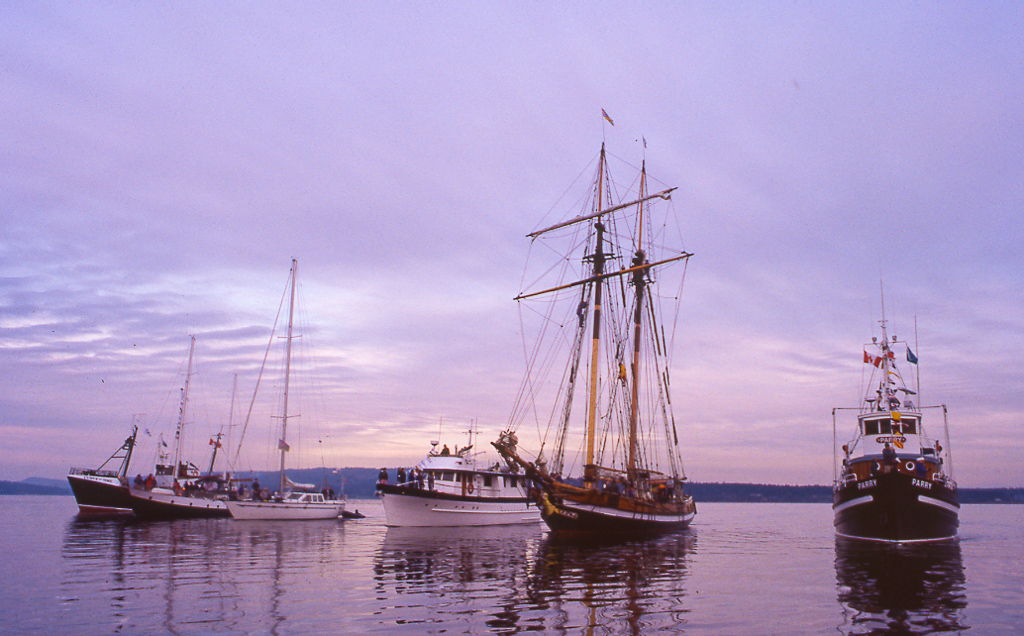
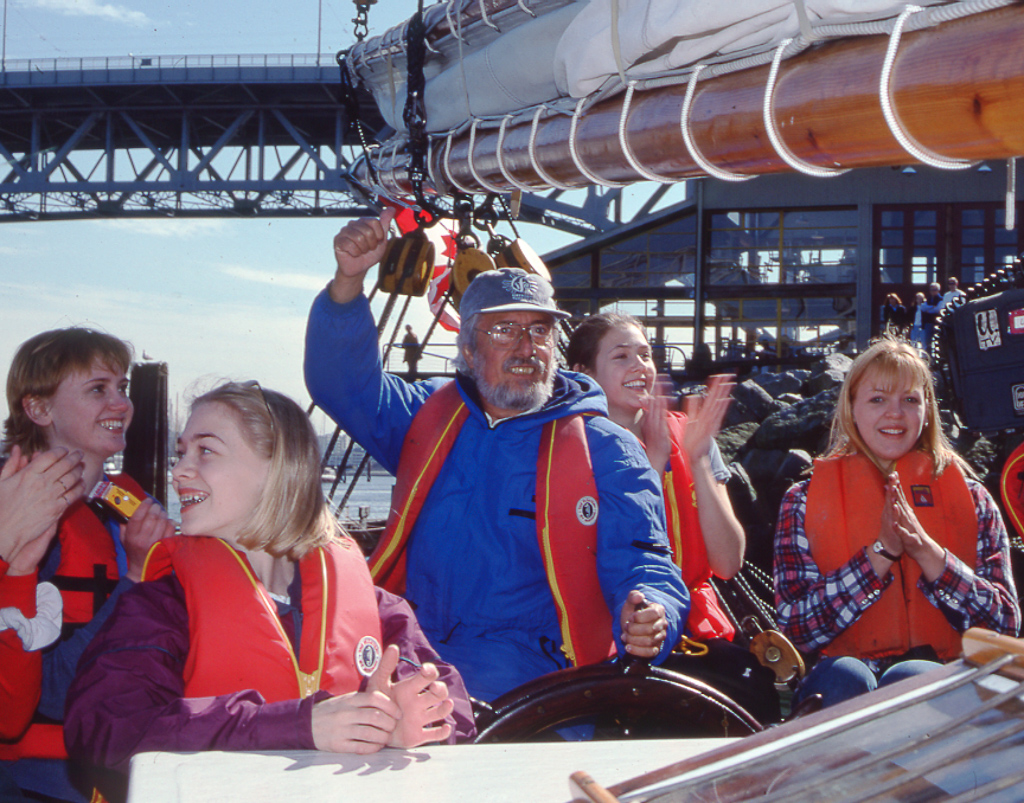

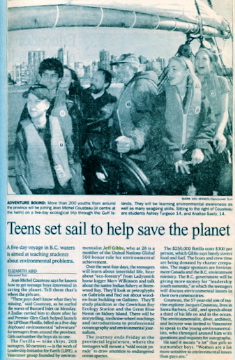
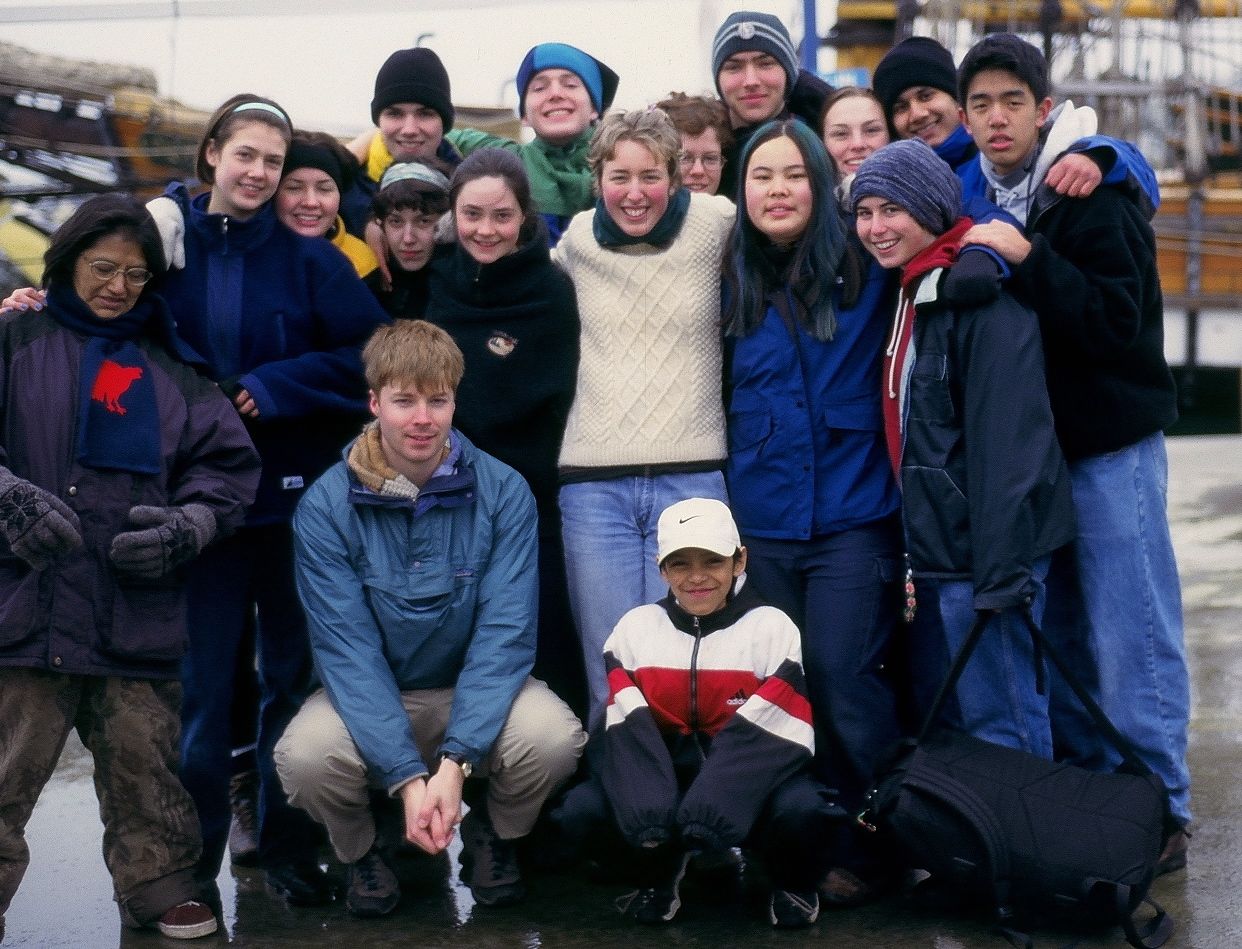
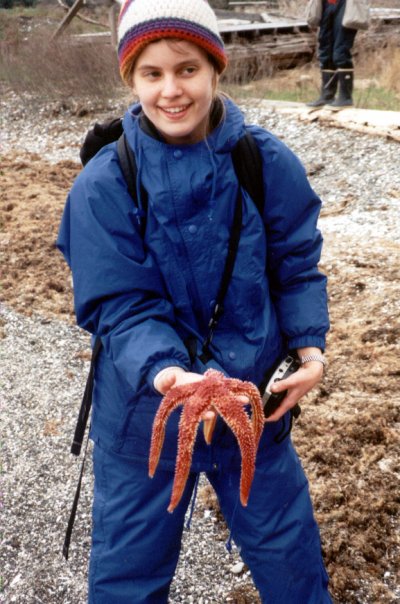
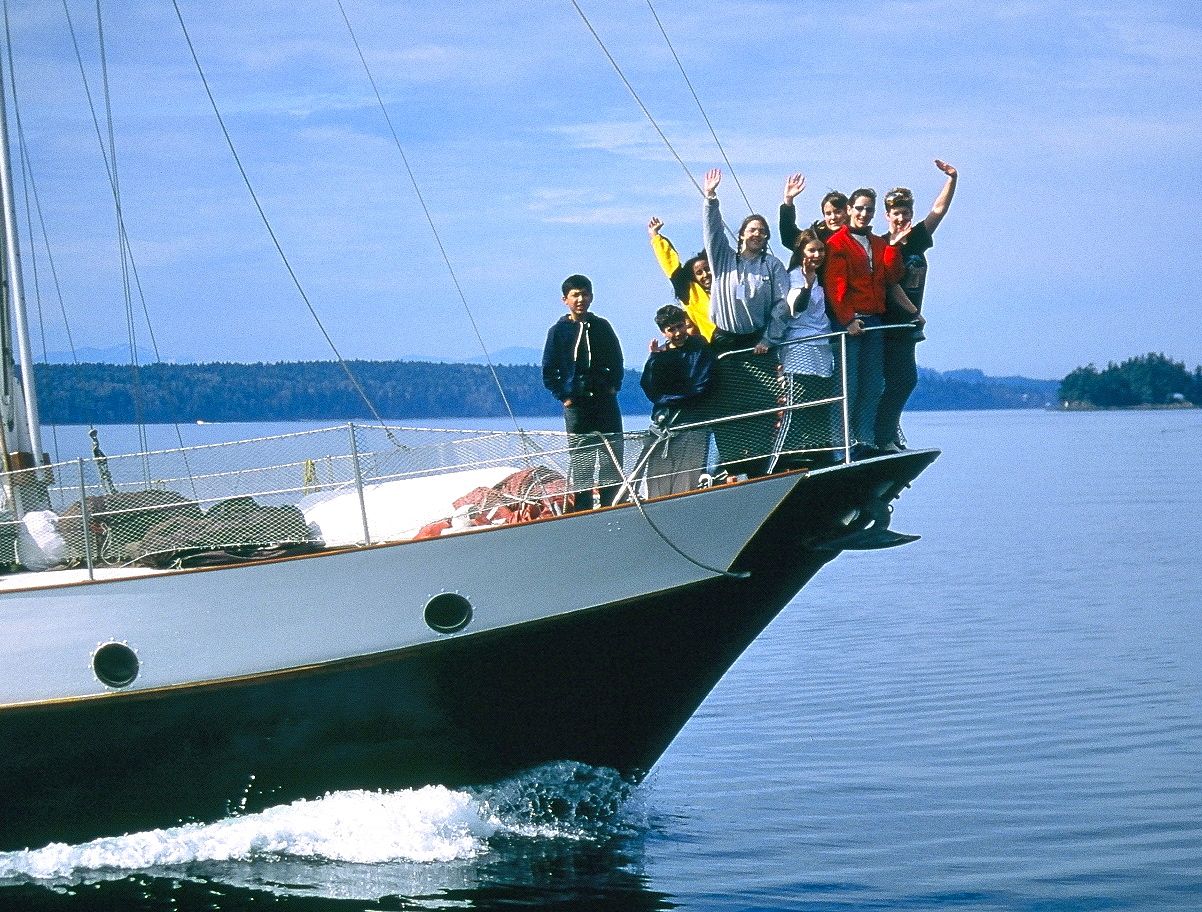
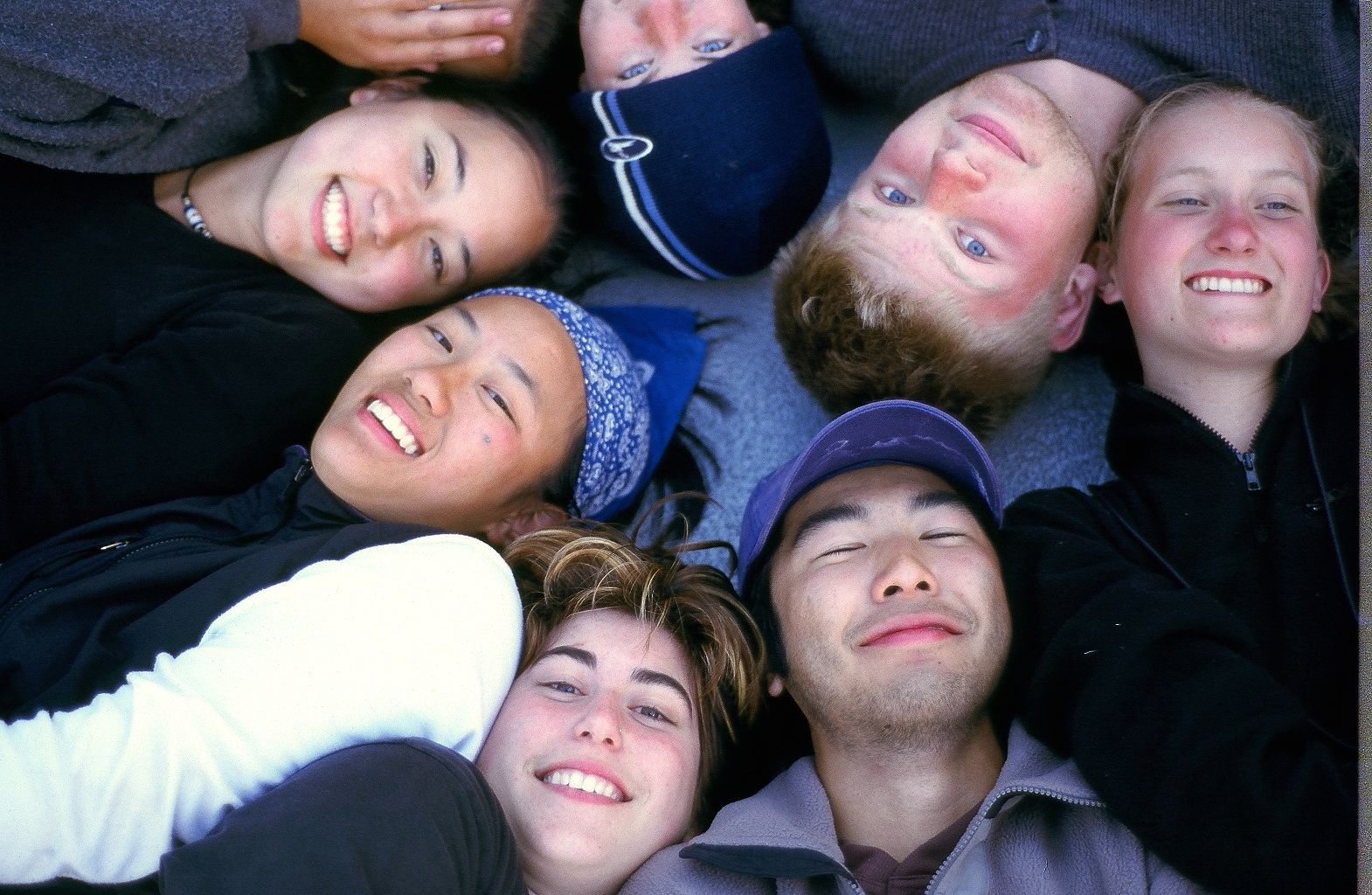

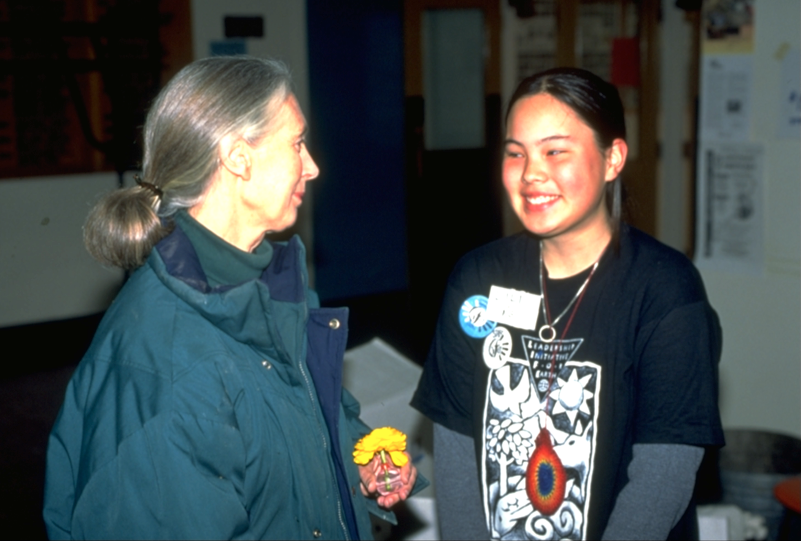

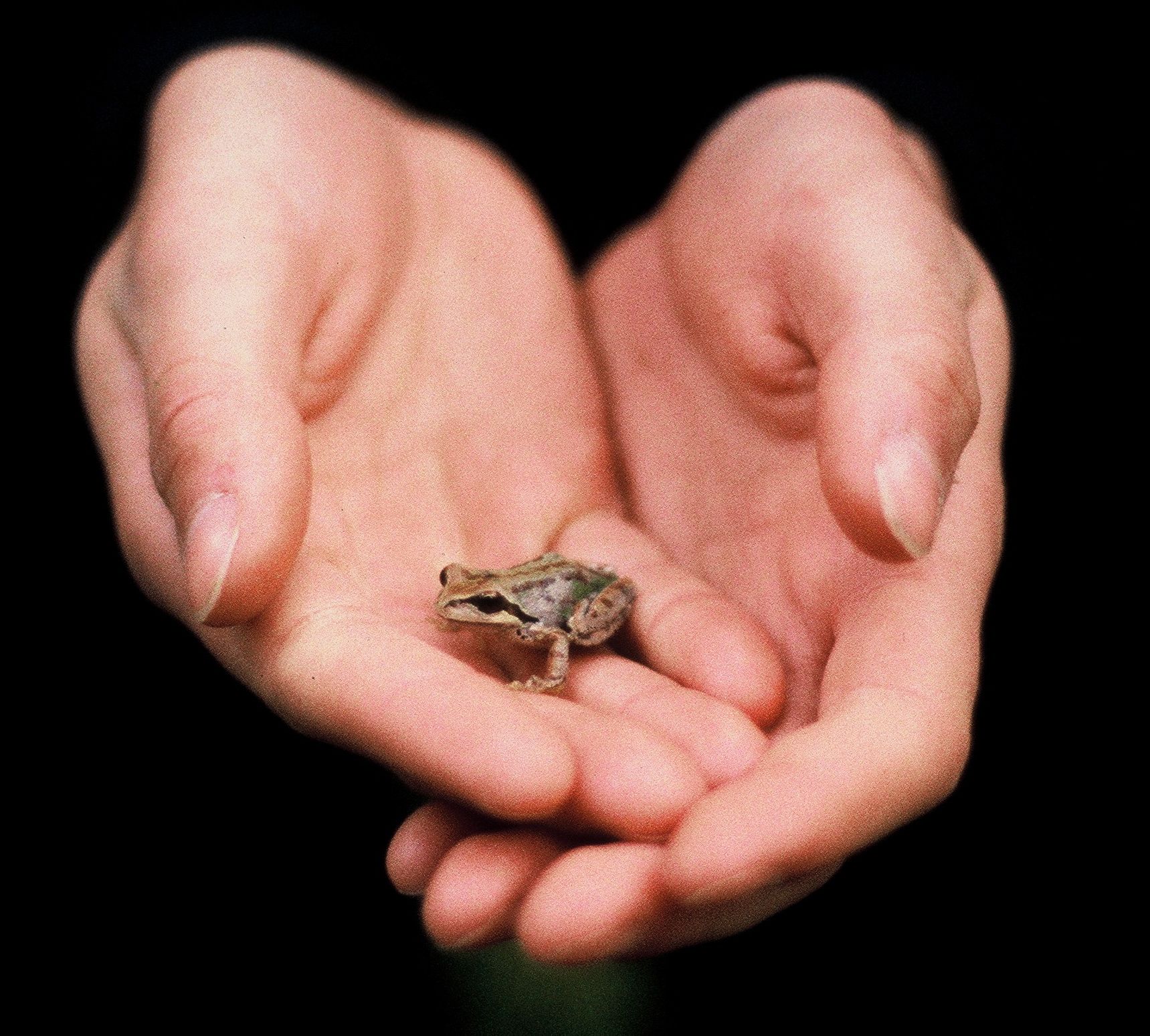

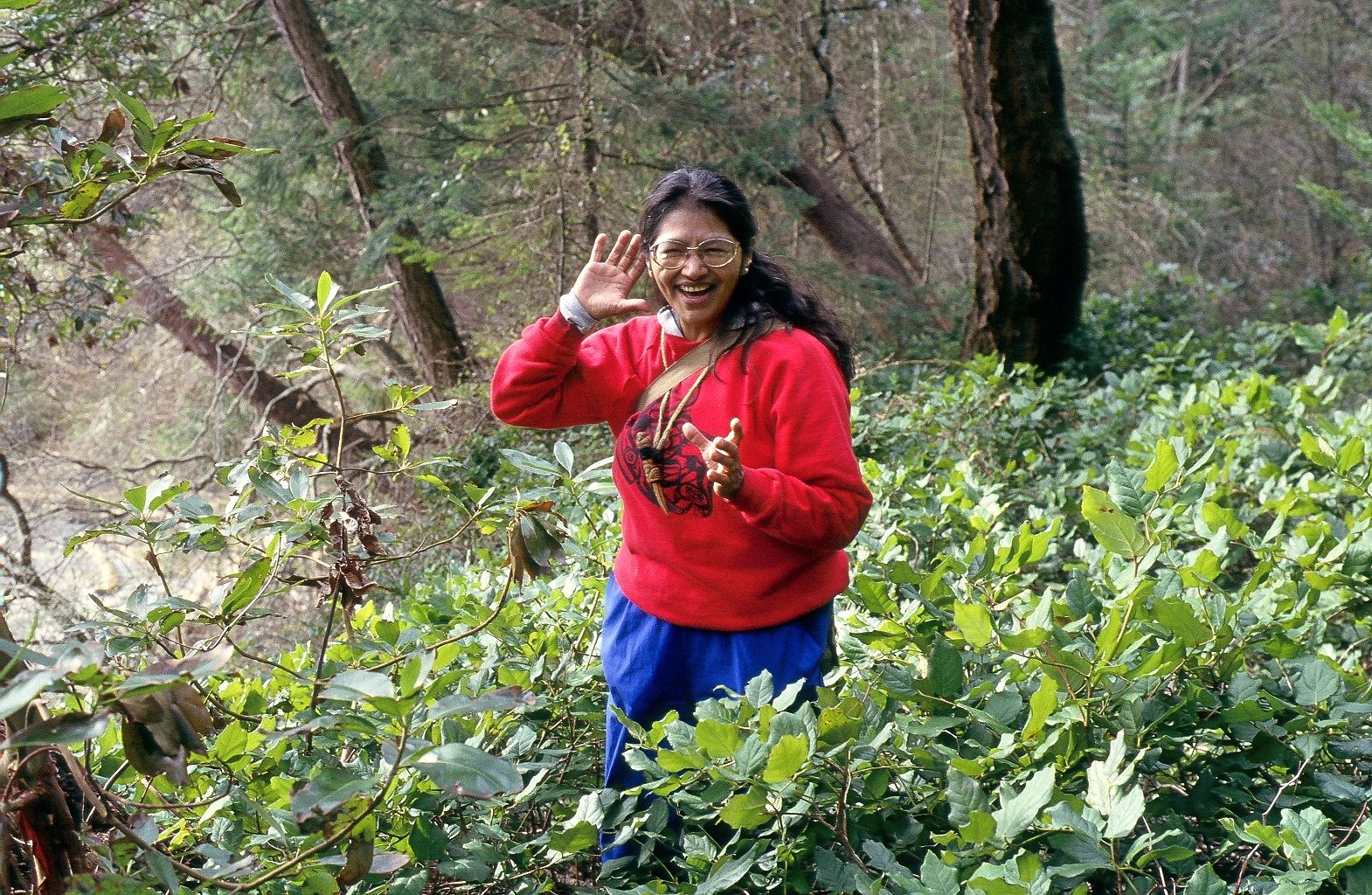

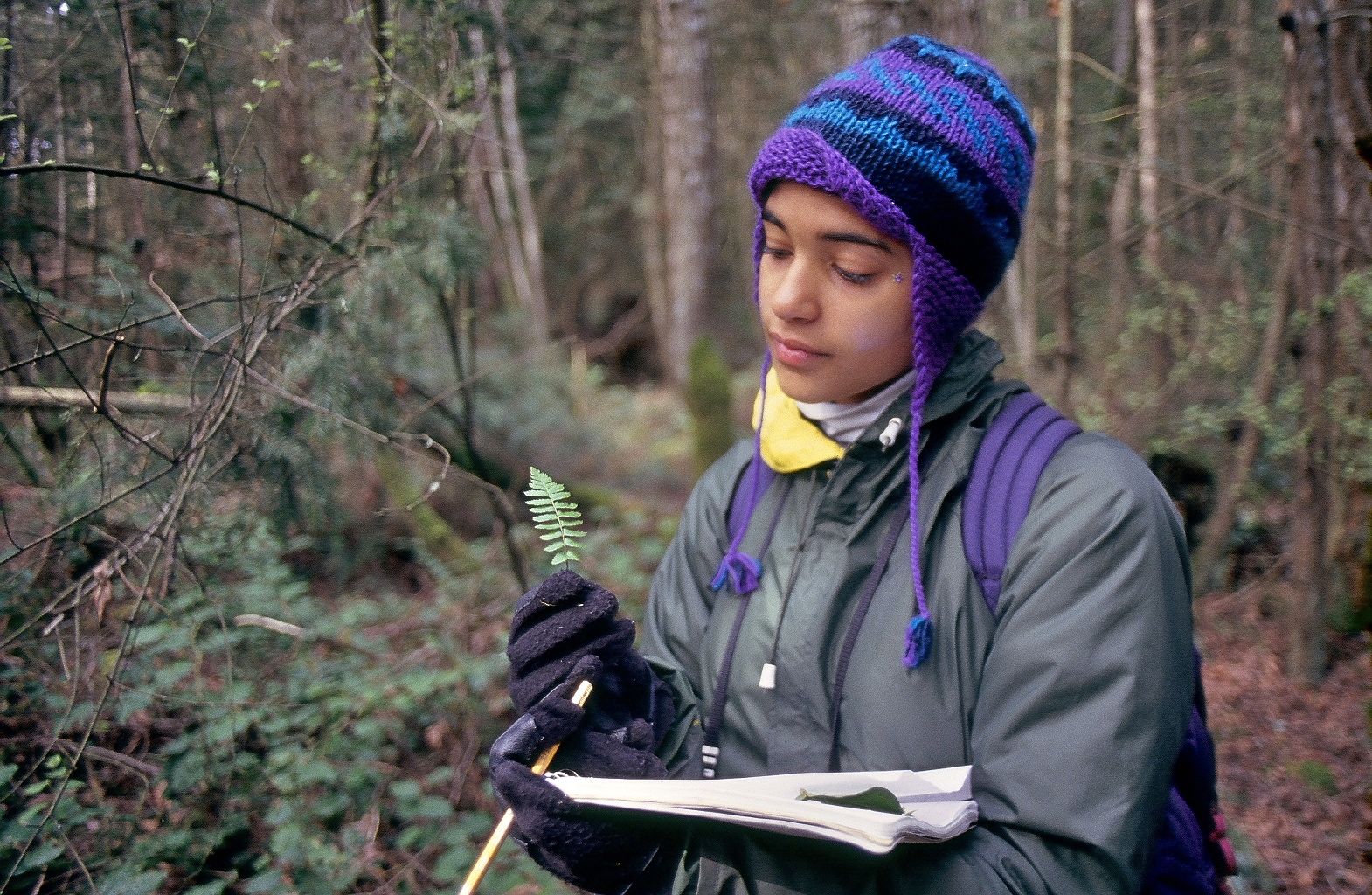
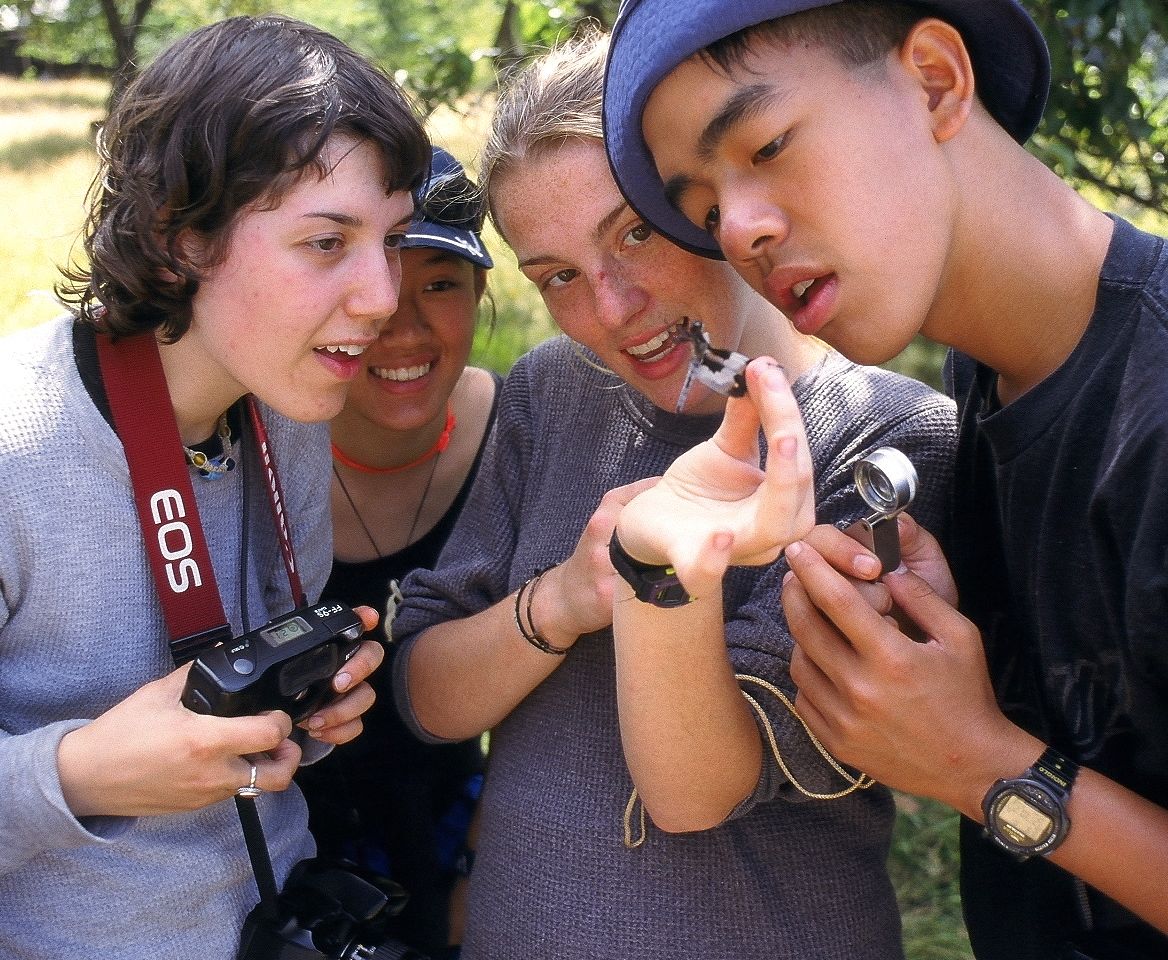
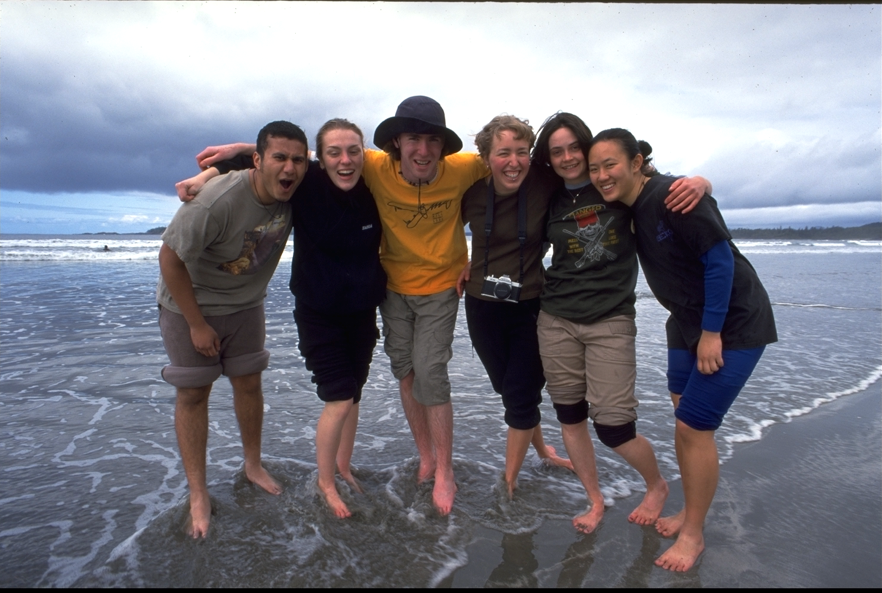
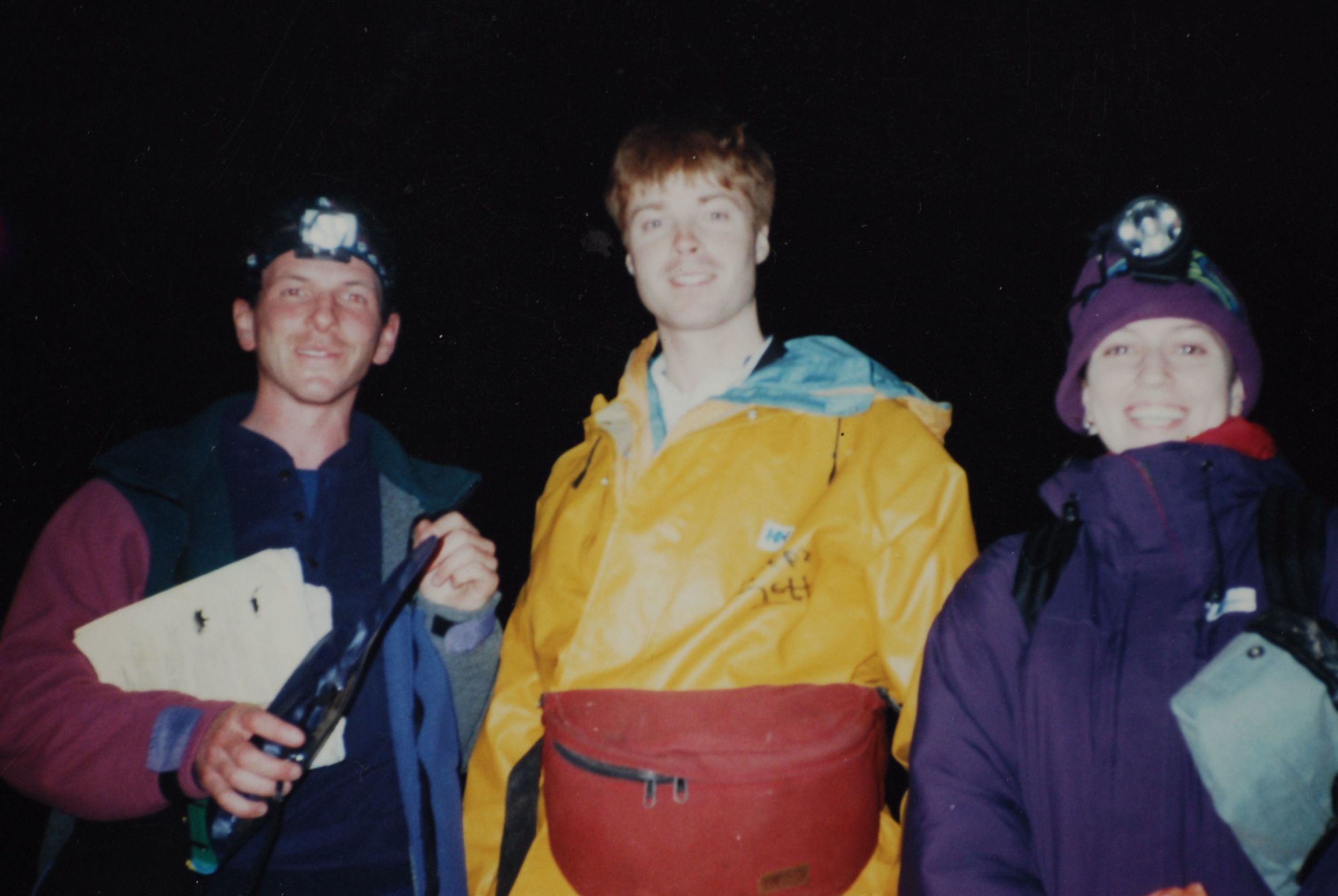

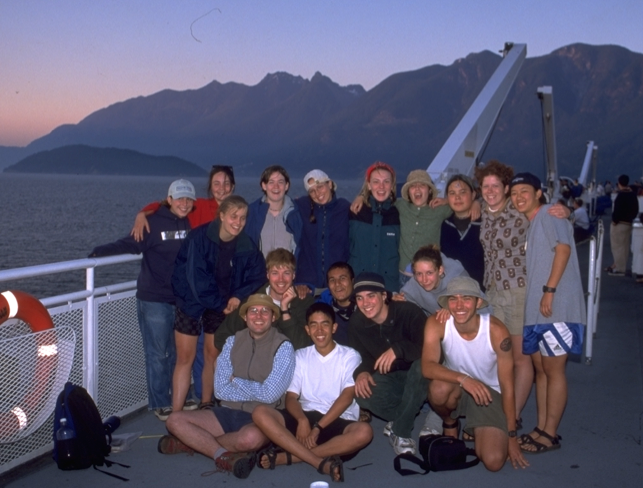
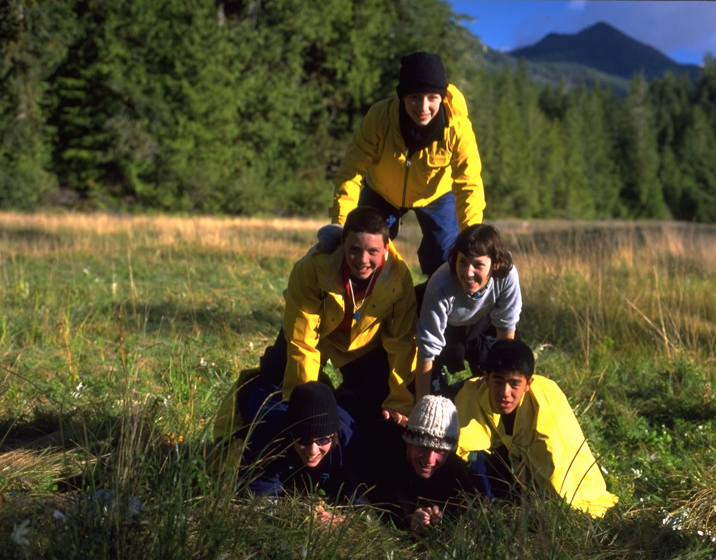


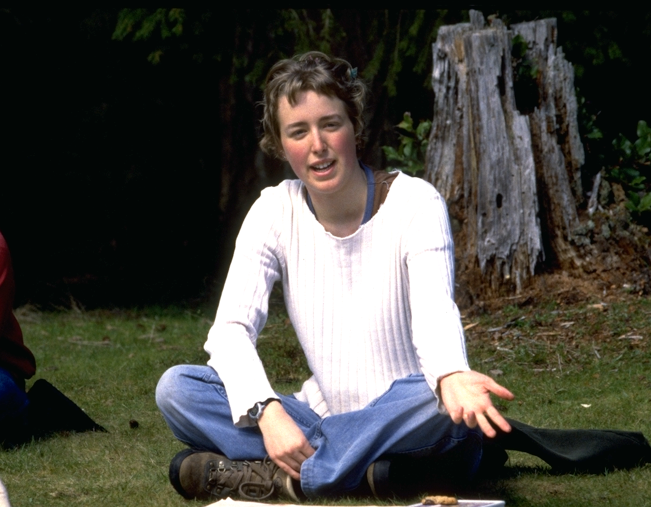
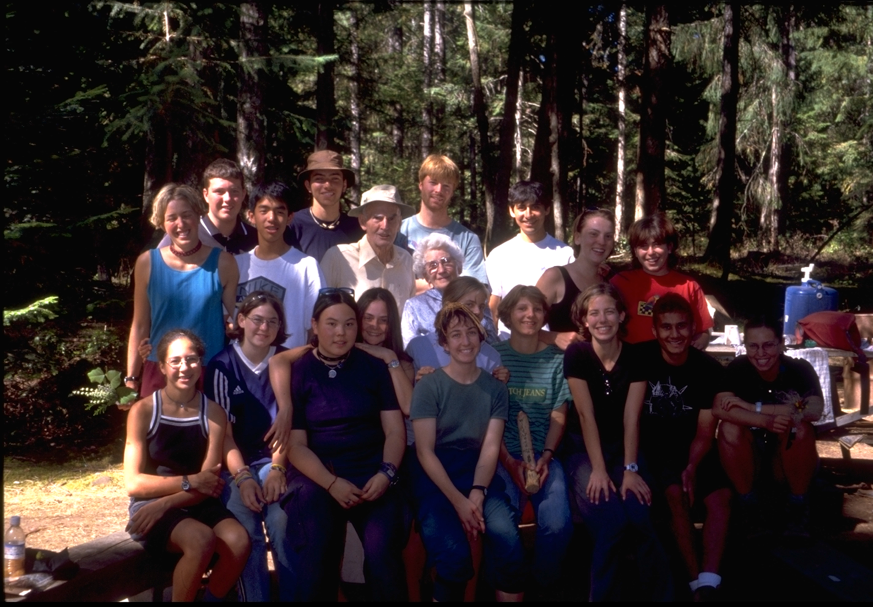
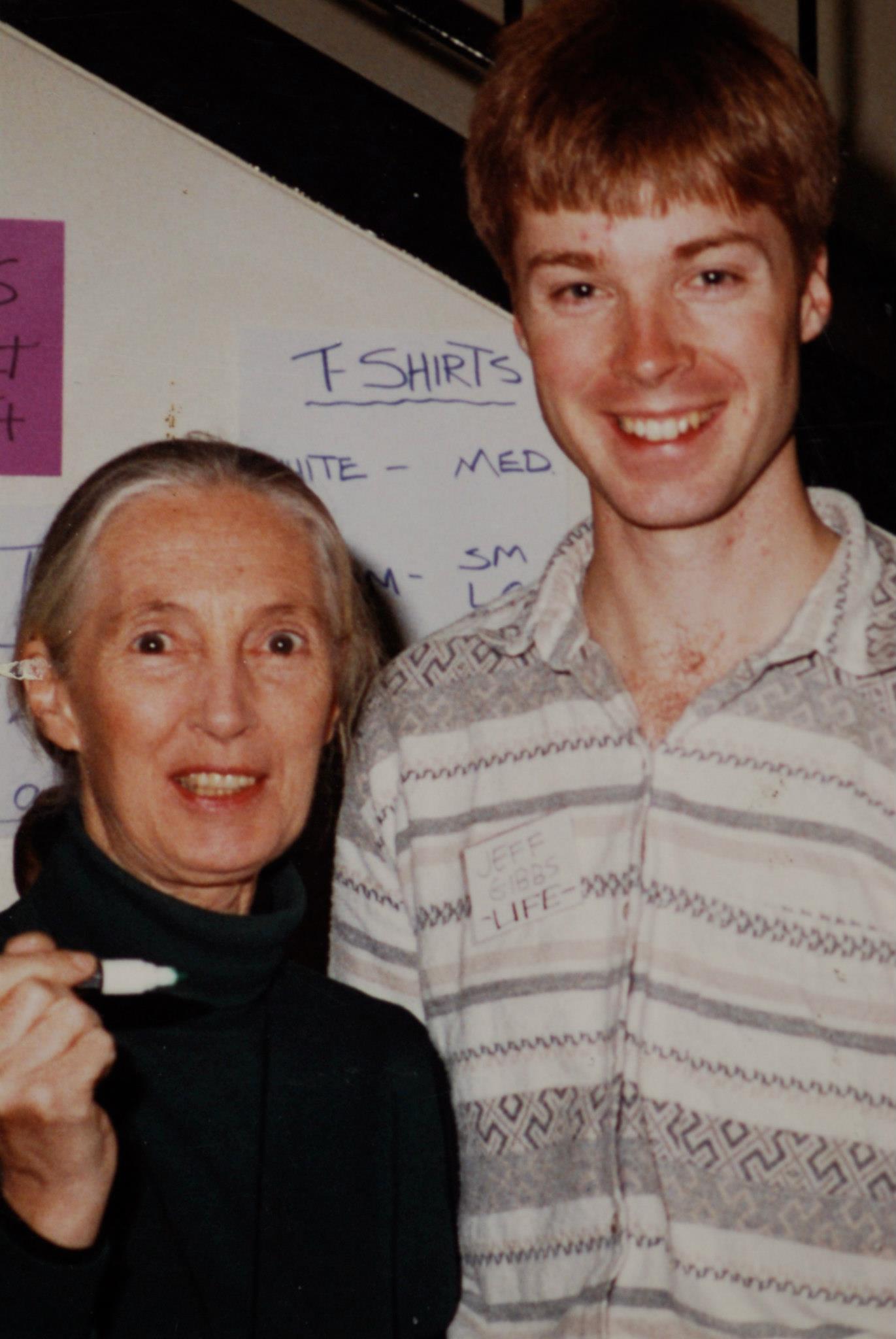
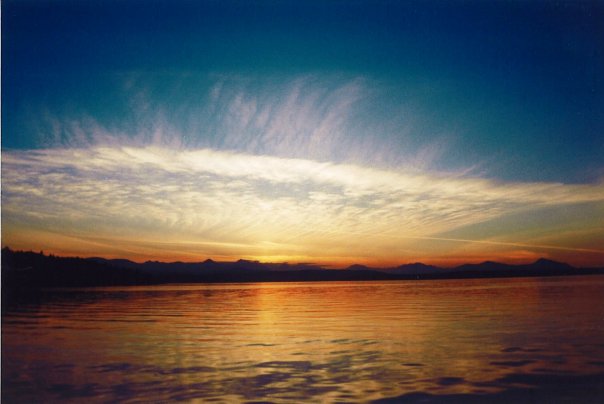
The flagship program of LIFE was his brainchild called the LIFEboat Flotilla. Two-hundred teenagers plus 100 educators and crew were brought together annually on a flotilla of 15 small ships for a week of exploration through a sheltered archipelago on Canada's Pacific coast. The LIFEboat Flotilla enabled participants to experience the enchanting sense of adventure and group bonding inherent in travel on a small, cramped boat. Yet, uniquely, the LIFEboat Flotilla also created the conditions for experiencing the euphoric social dynamic of a conference of two hundred like-minded teenagers.
During the daytime of a Flotilla journey, the 15 boats would fan out to different islands and the young people (organized in groups of 10) participated in hands-on workshops held on beaches, in forests, or from the deck of their ship. These workshops were led by experts in the given subjects, which included marine biology, First Nations culture, sustainable forestry, and ocean conservation. During the evenings, the ships would rendezvous and anchor, enabling everyone to go ashore to rural community halls for plenary sessions from such internationally renowned presenters as Jean-Michel Cousteau, Robert Bateman, Dr. Joe MacInnis, and Dr. Jane Goodall.
“I strongly suspect the whole LIFE experience has impacted on my choice of discipline and sub-field. To be simultaneously exposed to a place as beautifully alive as the Gulf Islands and such a group of committed and motivated people is a powerful combination, as Gibbs must have anticipated. I am sure my fellow participants are also grateful for his imagination and initiative.”
The logistics of the LIFEboat Flotillas were immense and required a team of staff and volunteers months to organize. On any given day there could be 40 site-specific workshops and a plenary session, repeated in different locations every day for a week as the Flotilla traveled throughout the islands. Storms and tides often played havoc with the logistics of keeping the Flotilla together and safe. The LIFEboat Flotilla was the only program of its kind in the world and it attracted the patronage of the United Nations Environment Programme (UNEP). There were five LIFEboat Flotilla sailings, while a similar program for WWF sailed in 2008. As Jeffrey had hoped, the Flotillas were enormously inspiring and educational for the 800 young people (plus hundreds of adult crew and staff) who participated. Young people gave him the moniker "Captain Adventure".
“What a tour de force. What an idea. I was so excited to be a part of it, to meet so many wonderful, focused young people — and older people!”
The third LIFEboat Flotilla — consisting of 17 ships — on its "journey to a new horizon" in March 1998.
“After the Flotilla, after this rite of passage, I knew where I wanted to go with my life, and I had a new group of people that I felt I could do that with. I felt I had the ability to live out my dreams, to discover the world around me, and to really forge my place in it.”
Further Innovations
Buoyed by the success of the LIFEboat Flotillas, the LIFE organization spearheaded a sister program, the LIFEtrain, in which young people traveled on a train throughout a rural part of Canada, stopping for educational workshops and plenaries en route. However, Jeffrey's most ambitious project during the LIFE years was one that never happened. He envisioned young people and professional shipwrights building a wooden tall ship from timbers harvested from the world's most ecologically managed forests. The LIFEship would then have been used for youth expeditions in ecological hotspot locations globally. Despite two years of effort in which he recruited an esteemed tall ship builder and $600,000 in pledges, the LIFEship project proved to be too complex to undertake and was abandoned while still on the drawing board.
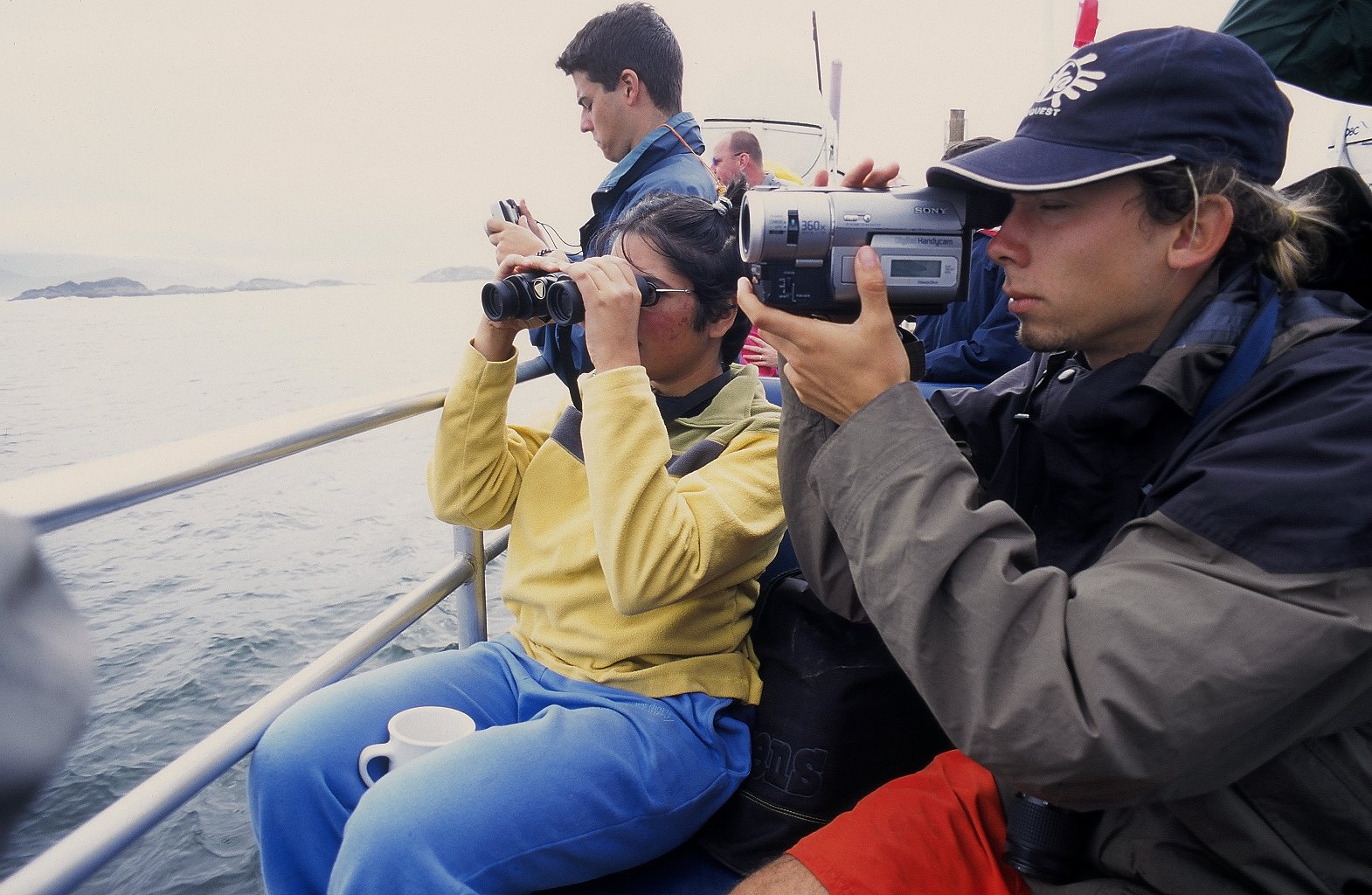
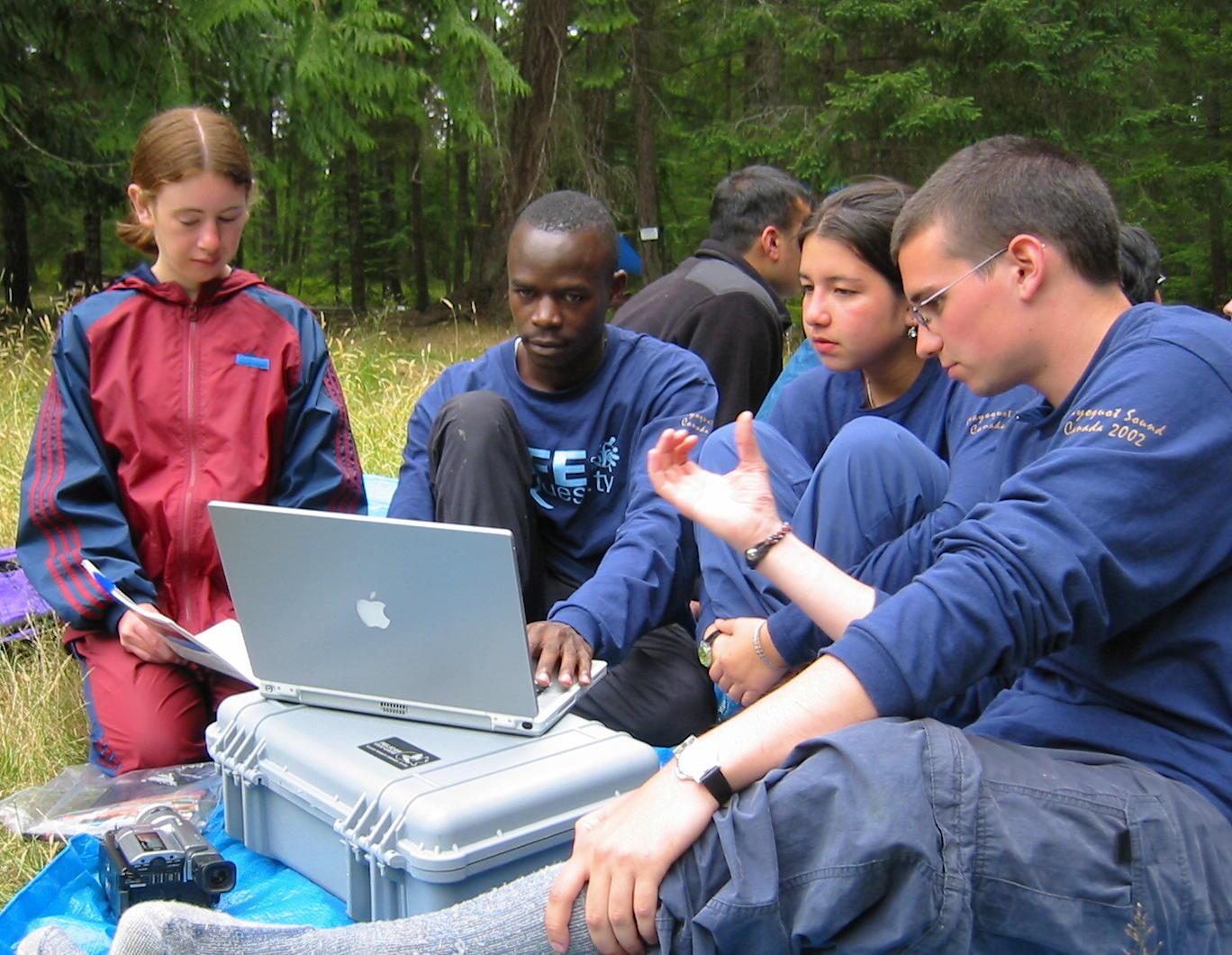

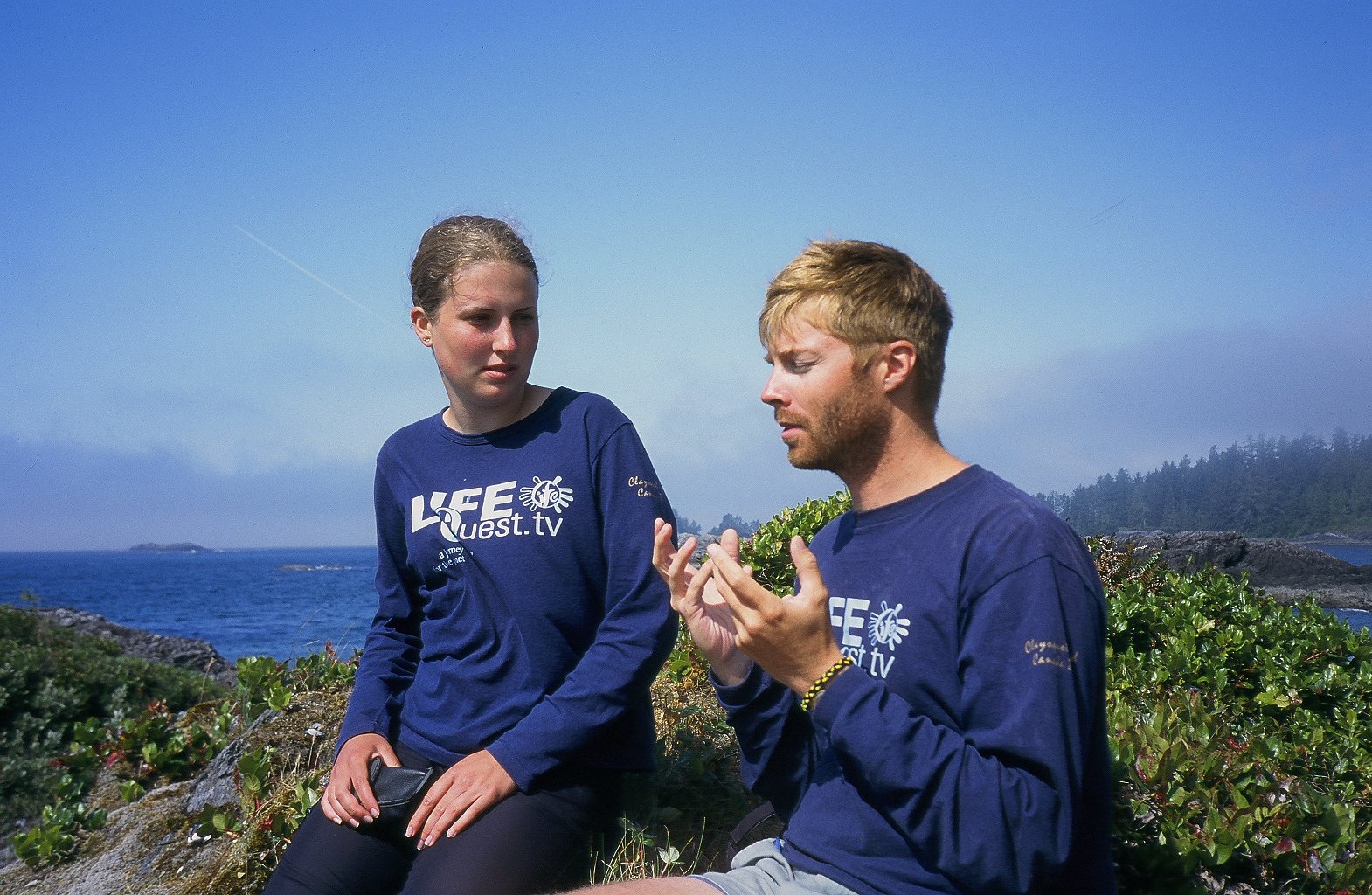
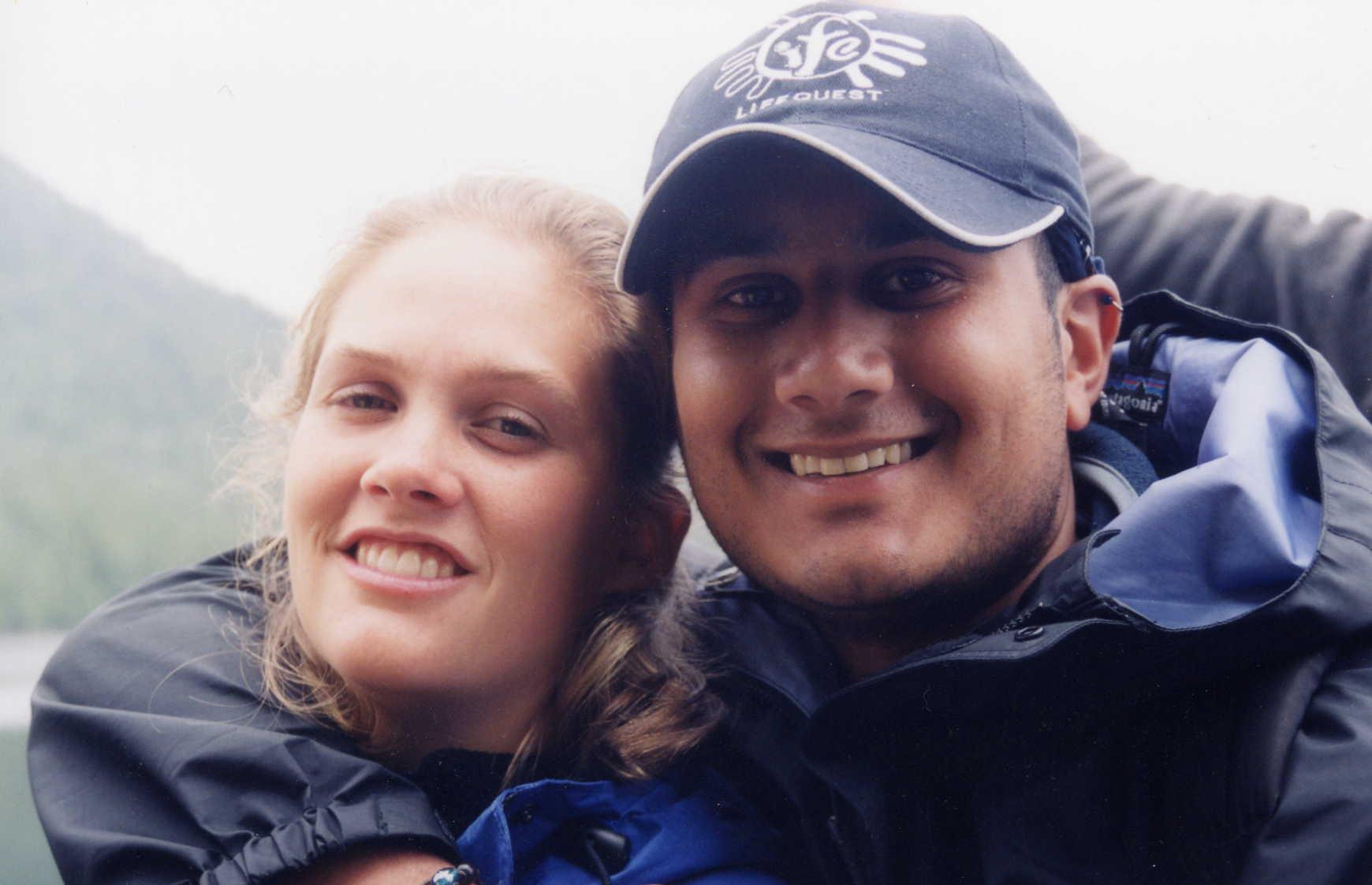
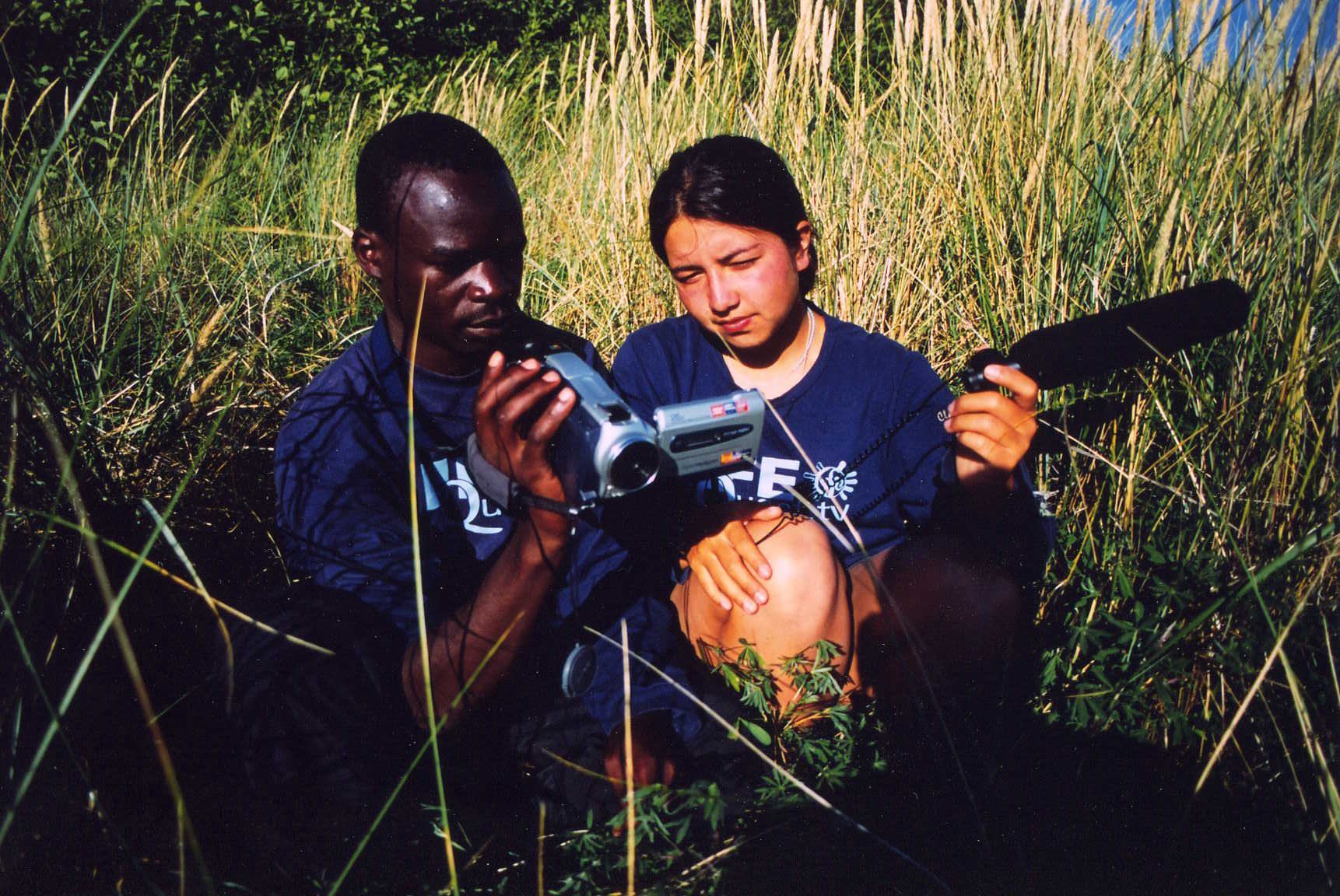
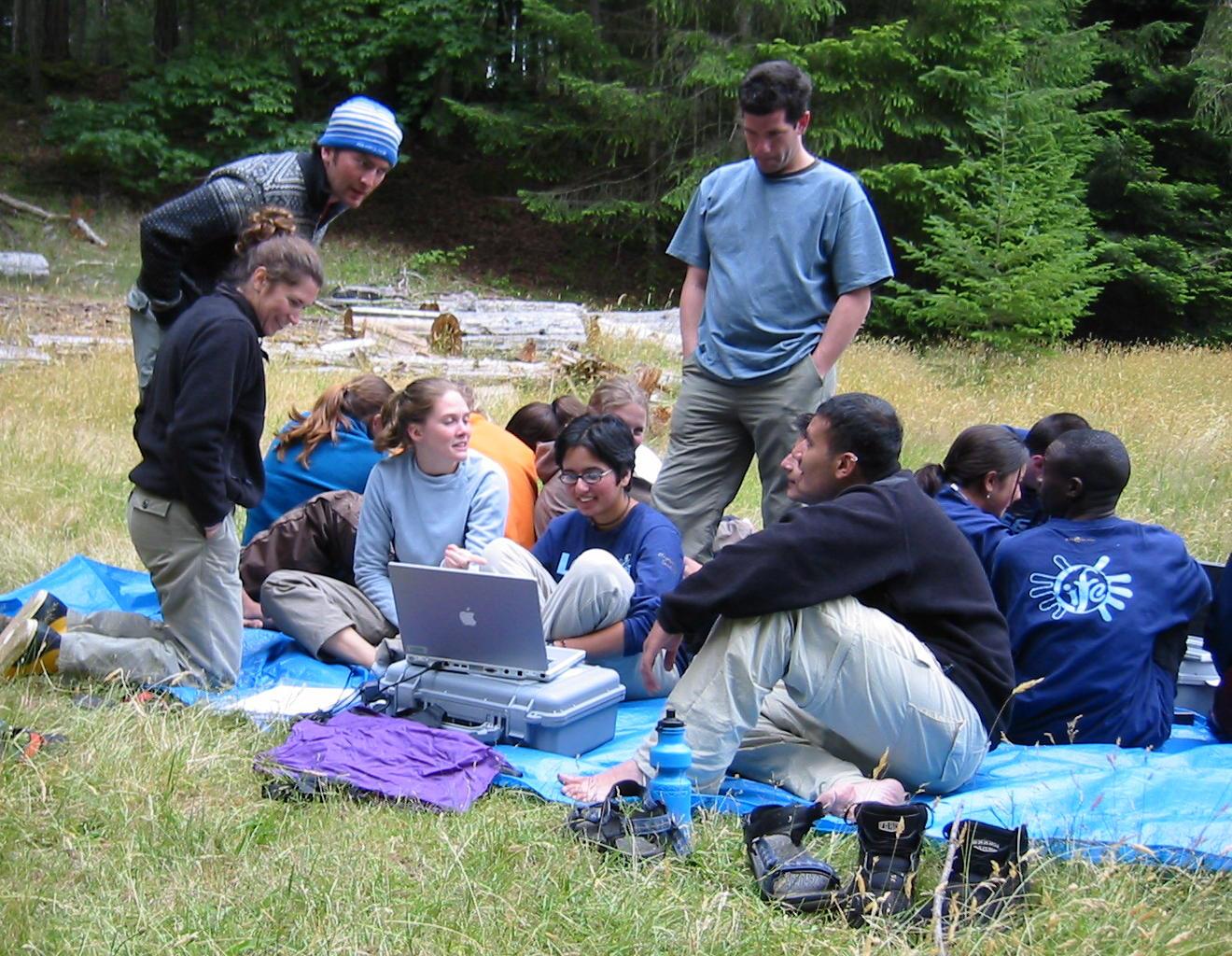
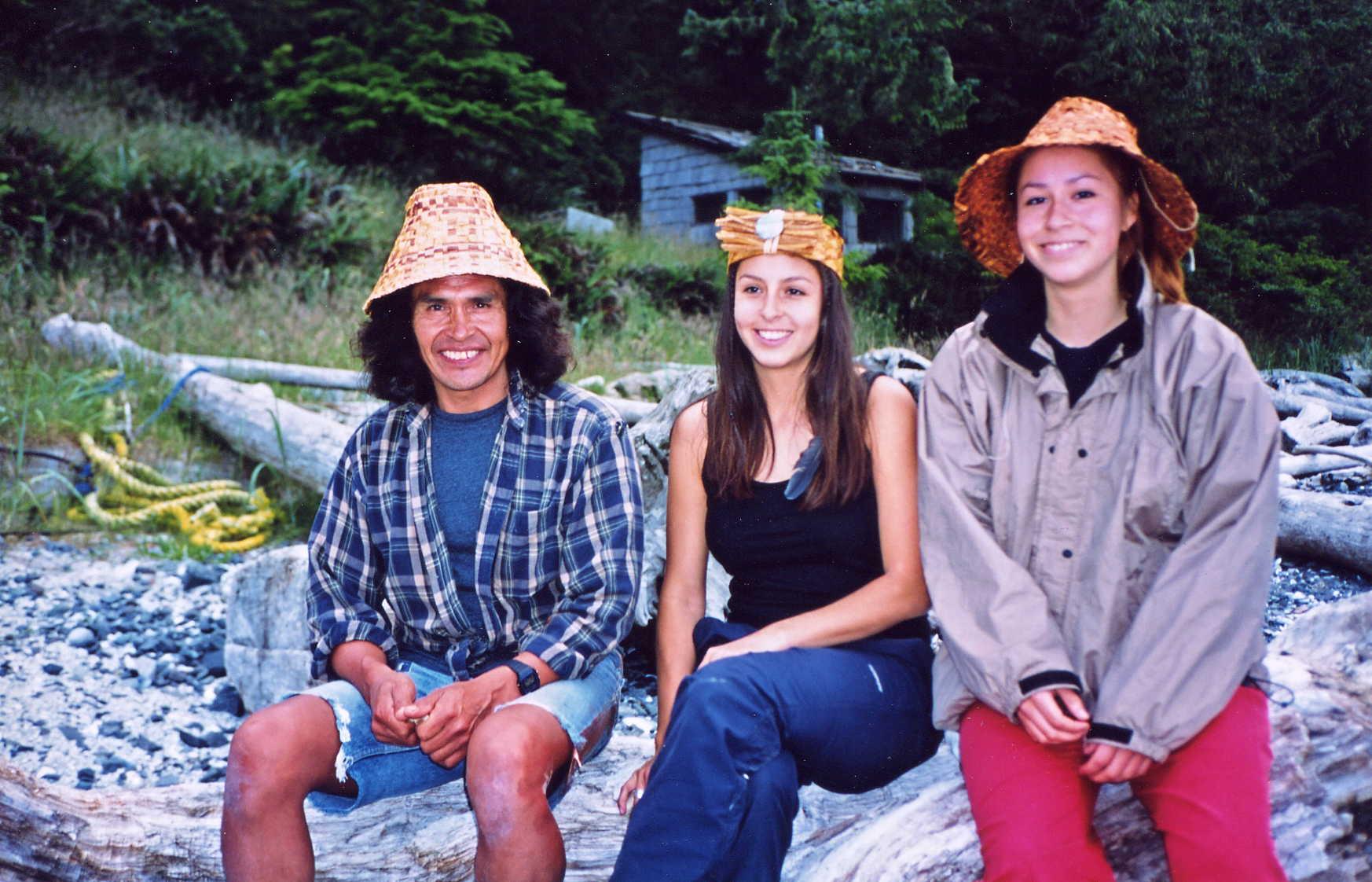
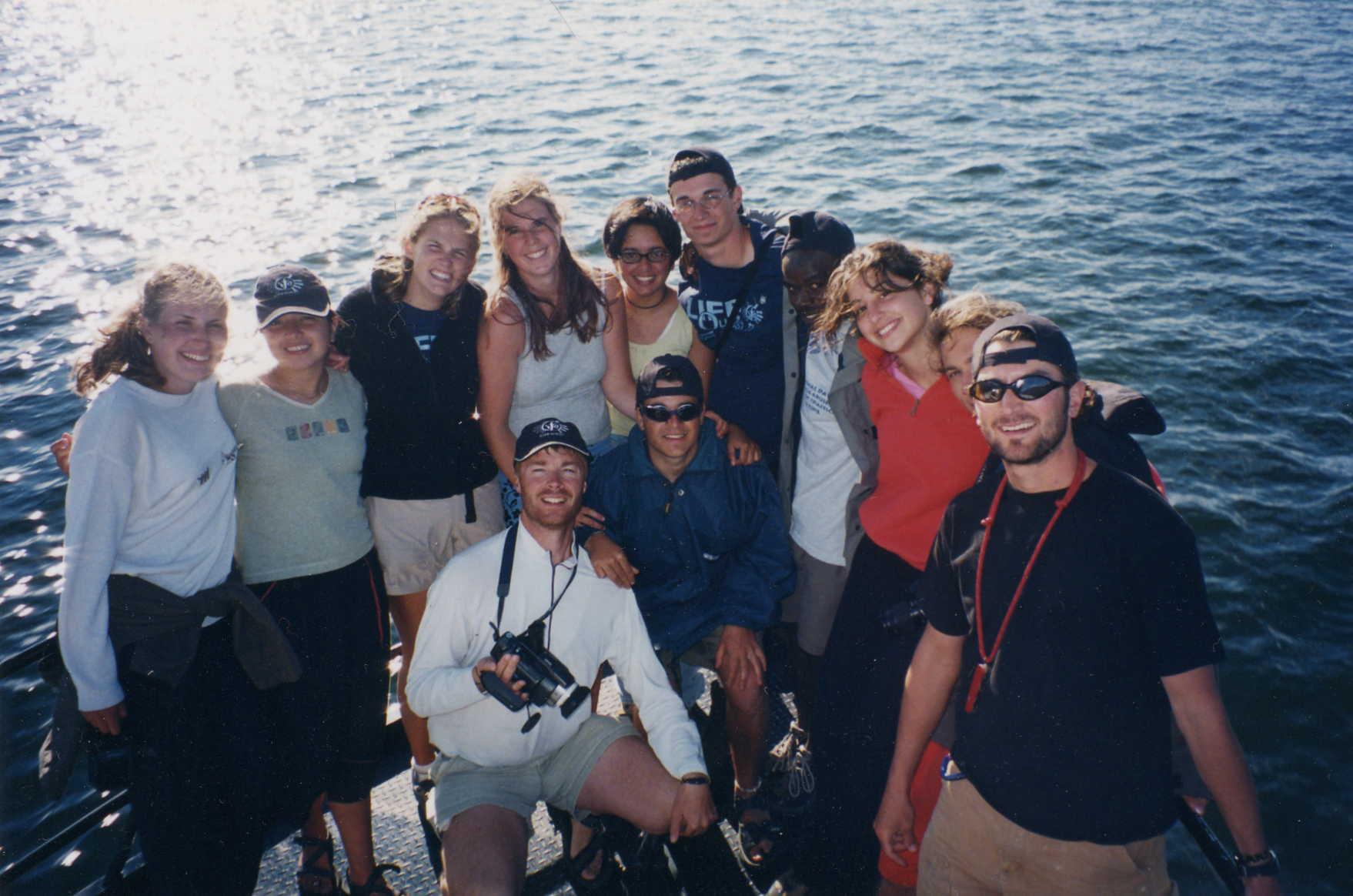
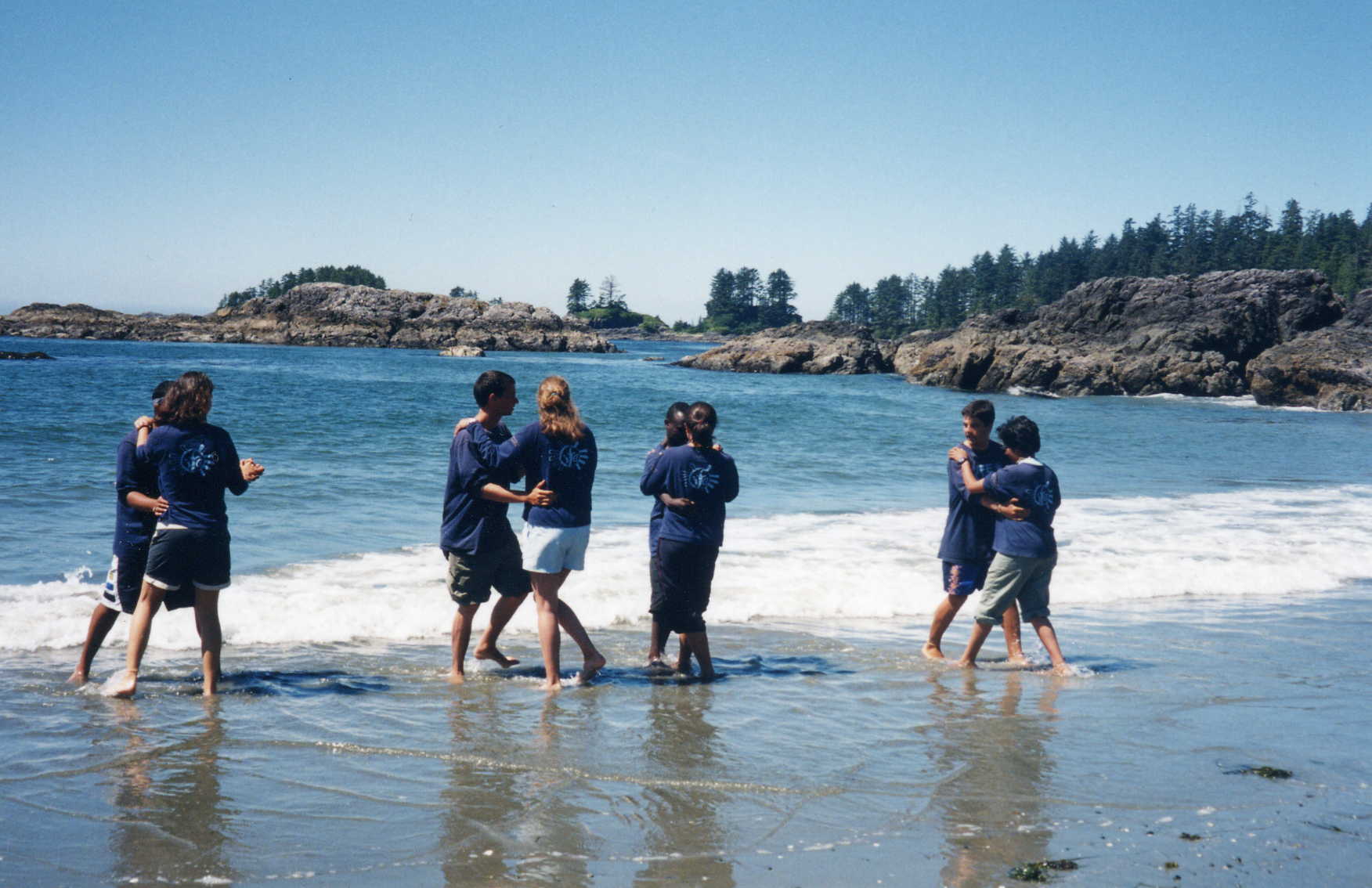
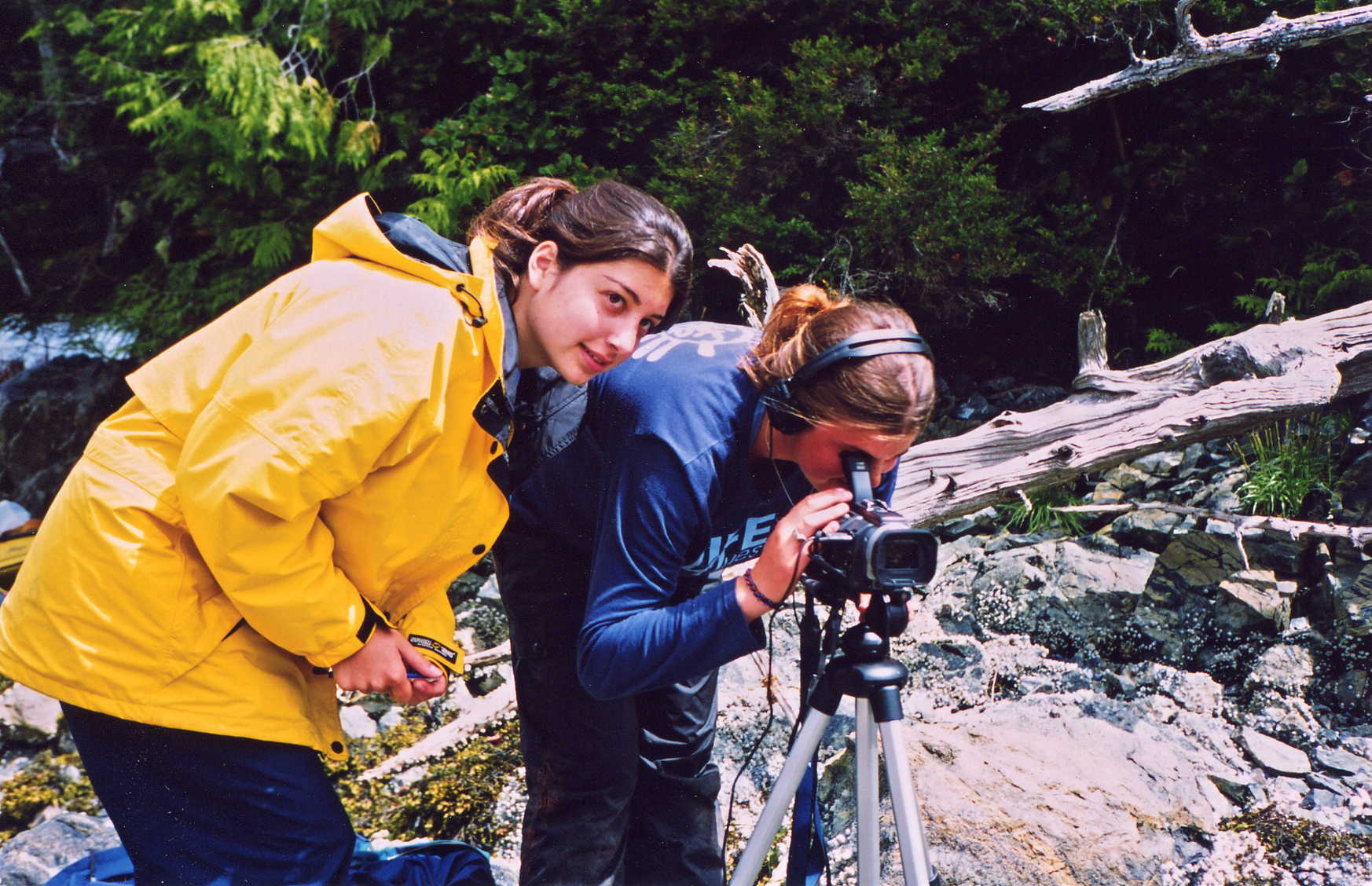
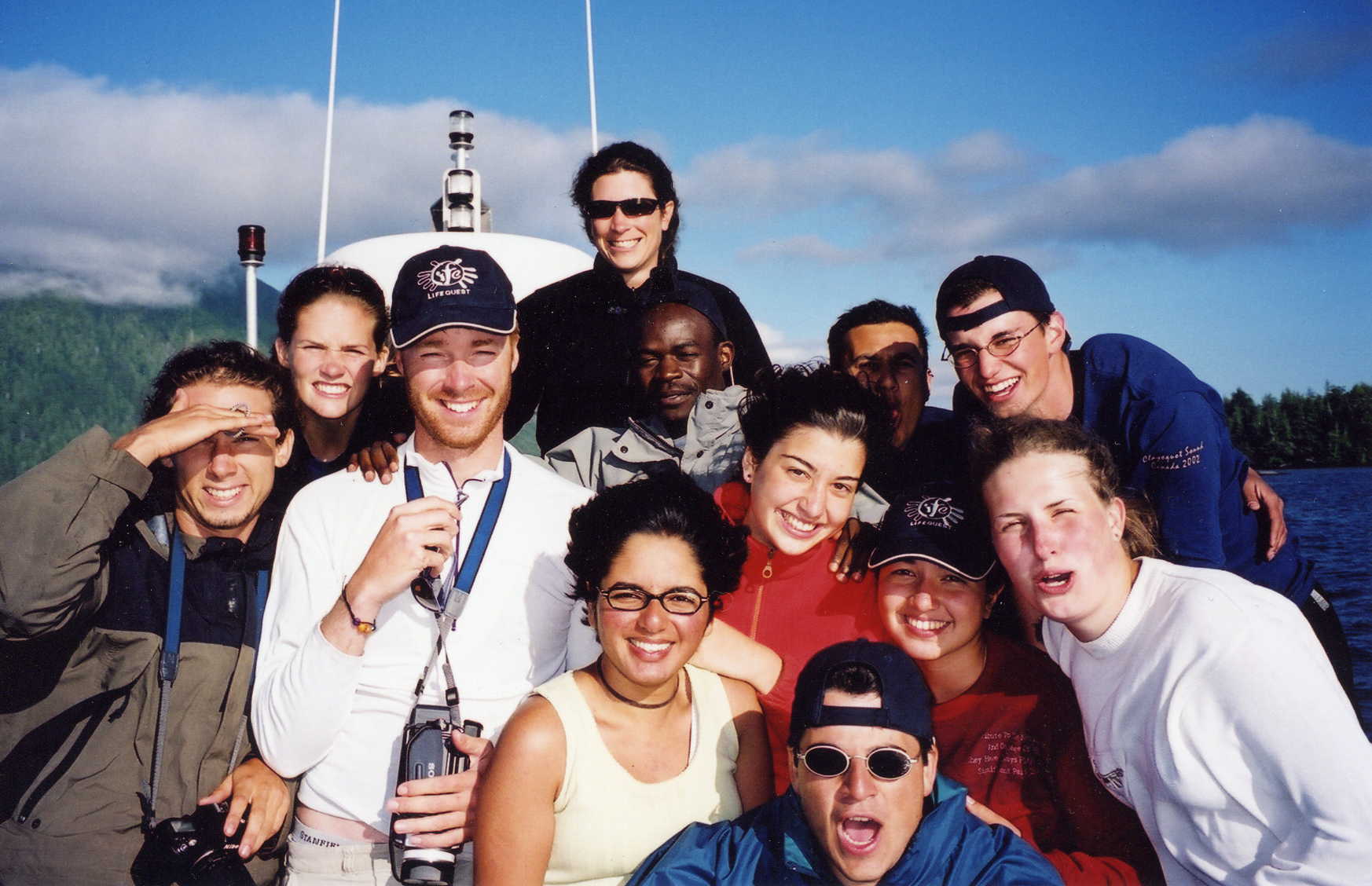
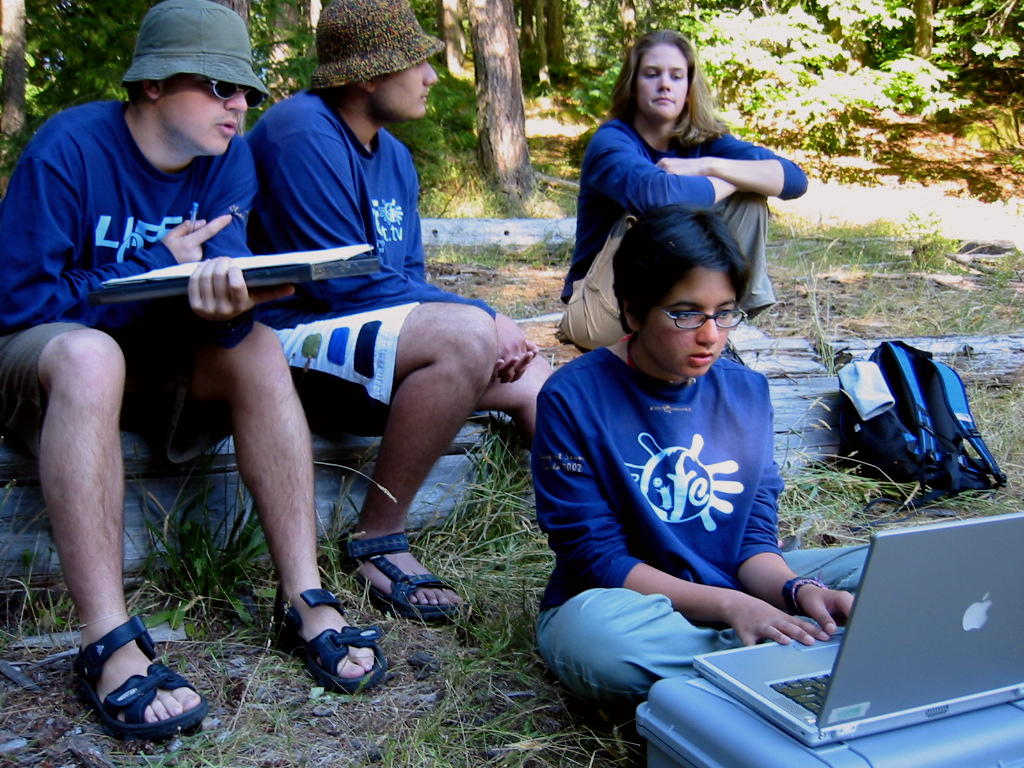

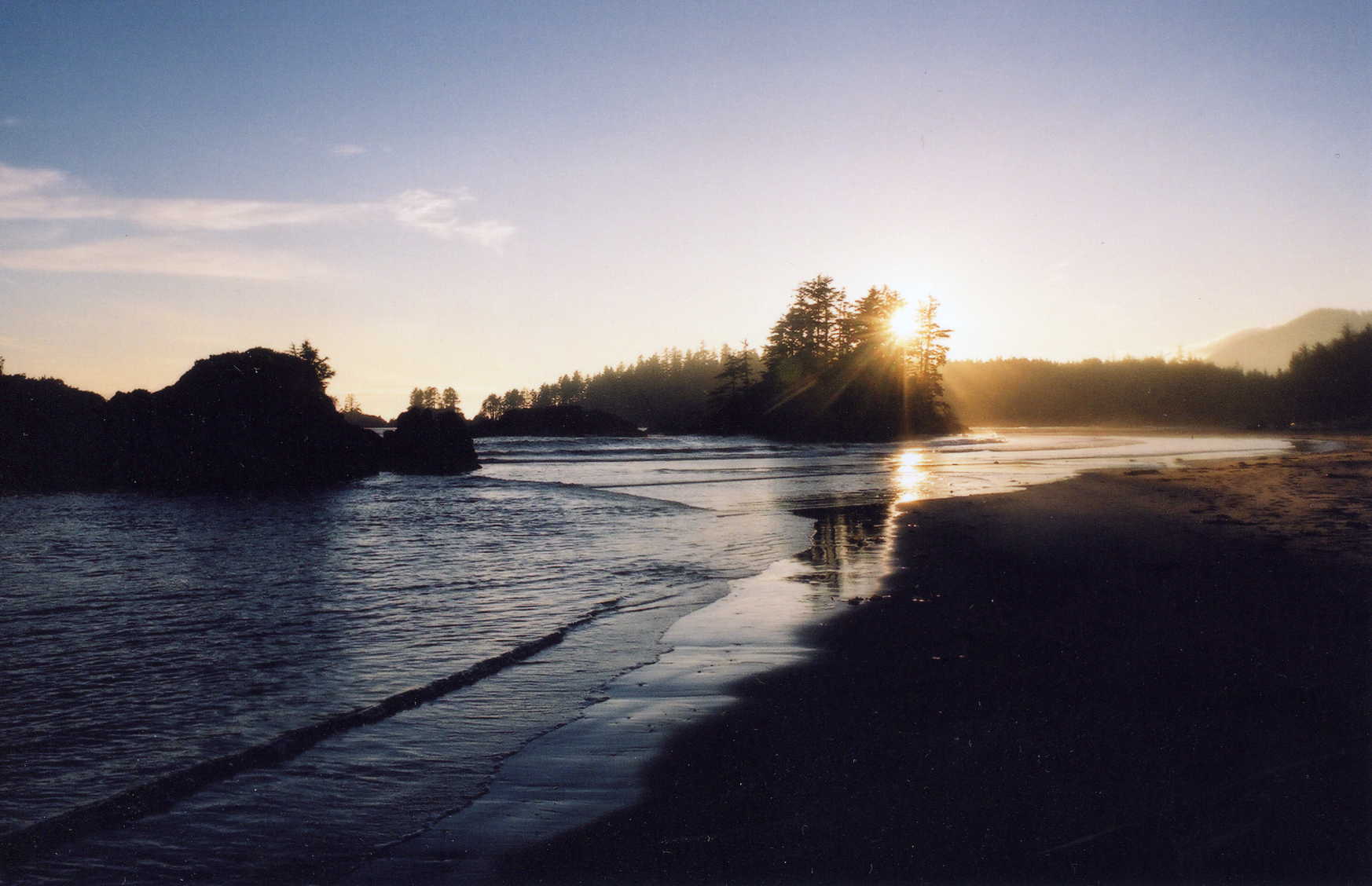
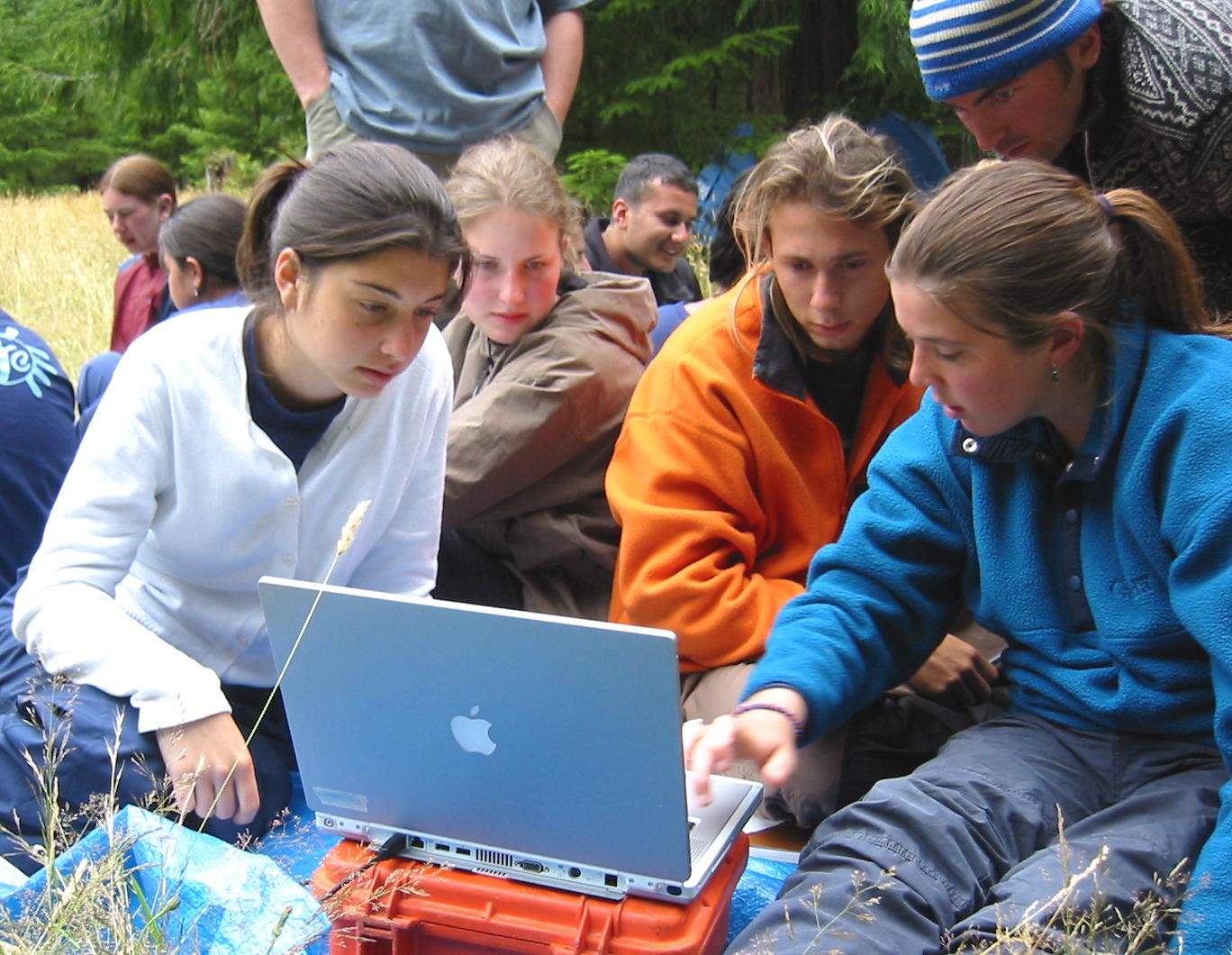
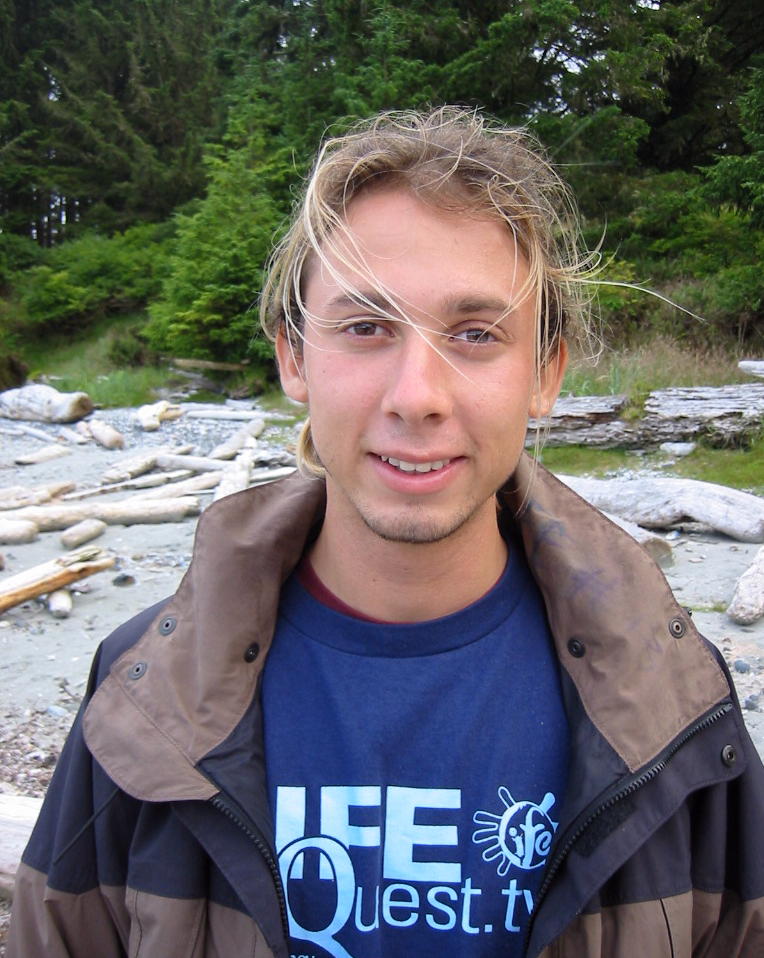
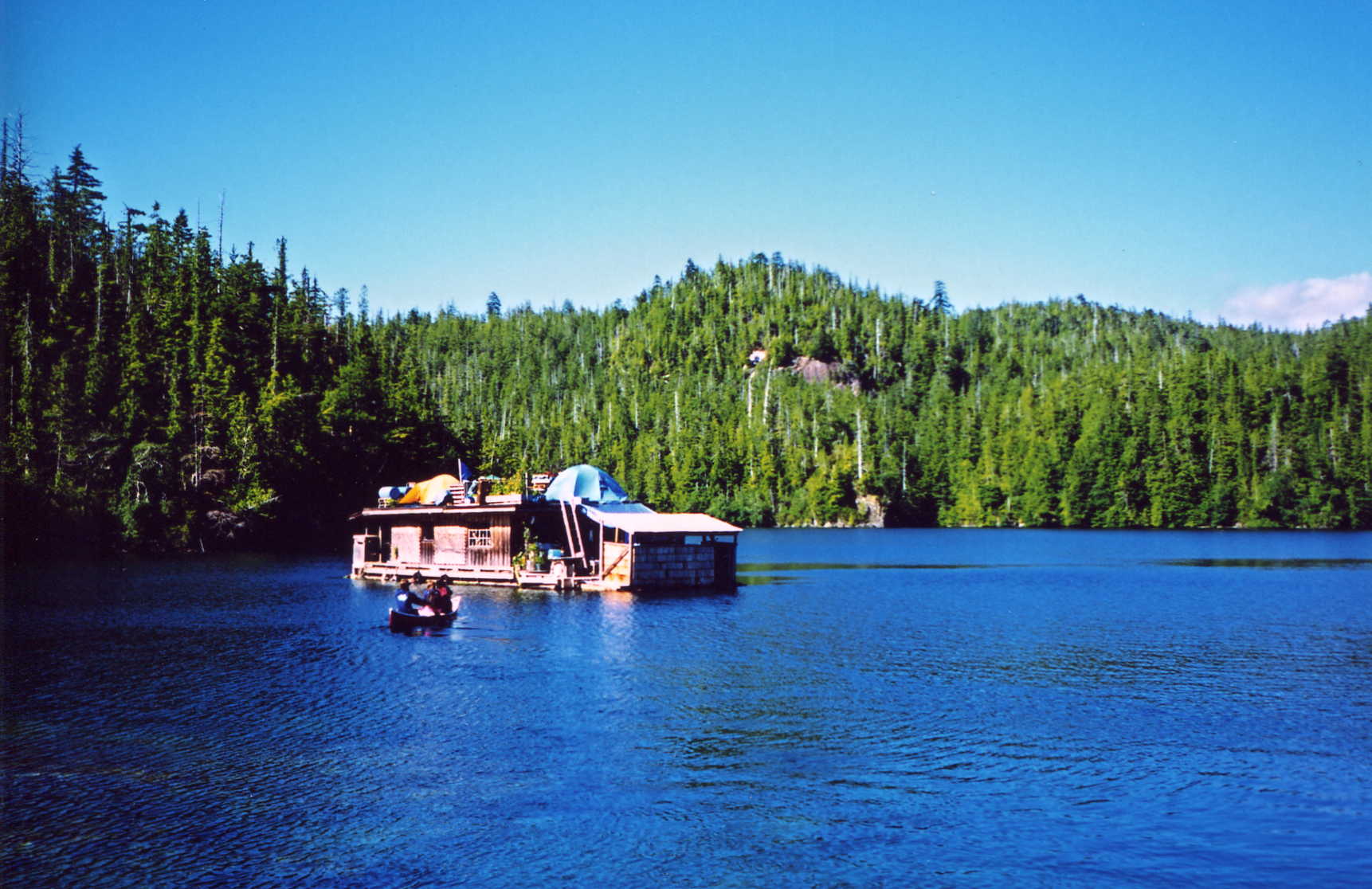



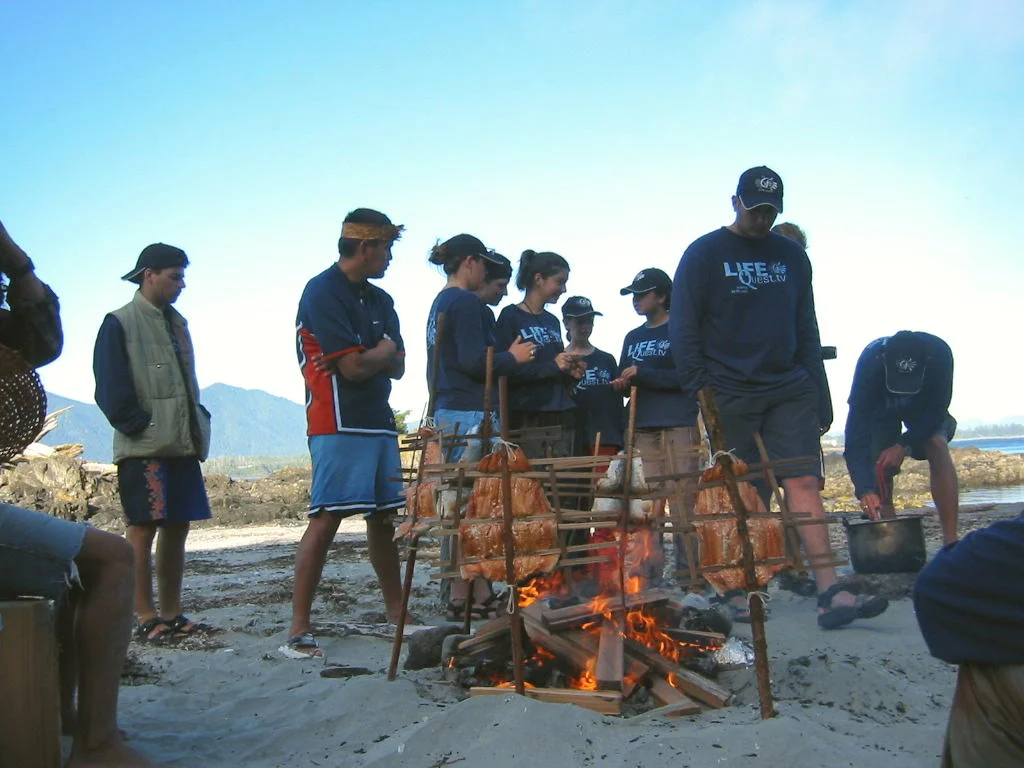
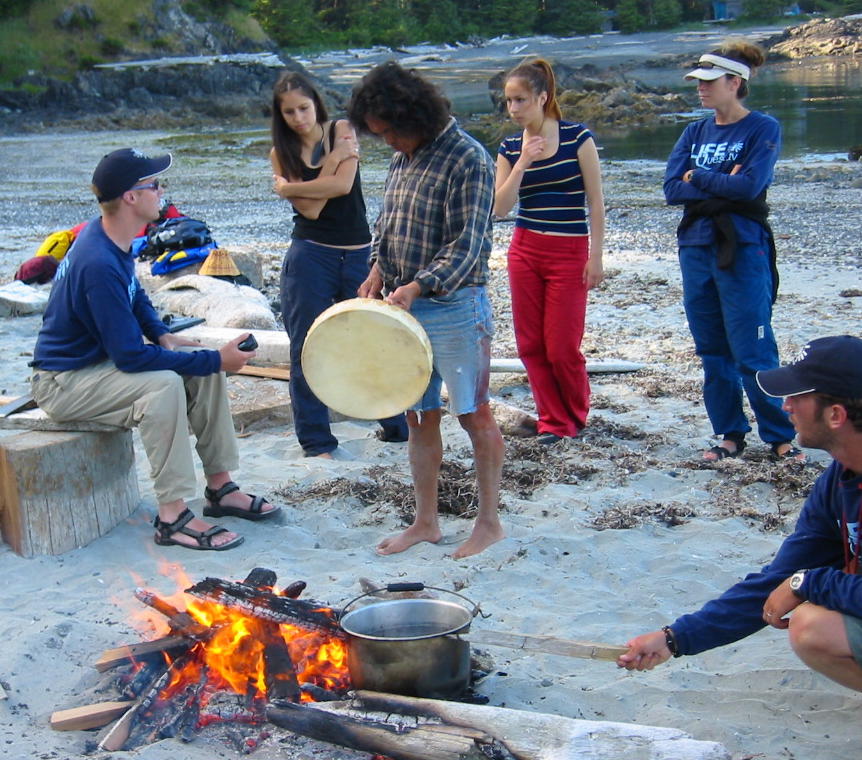
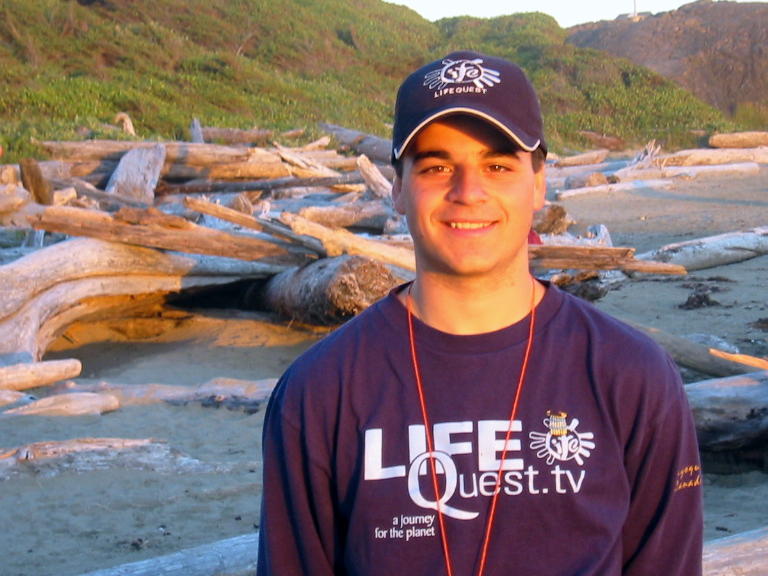

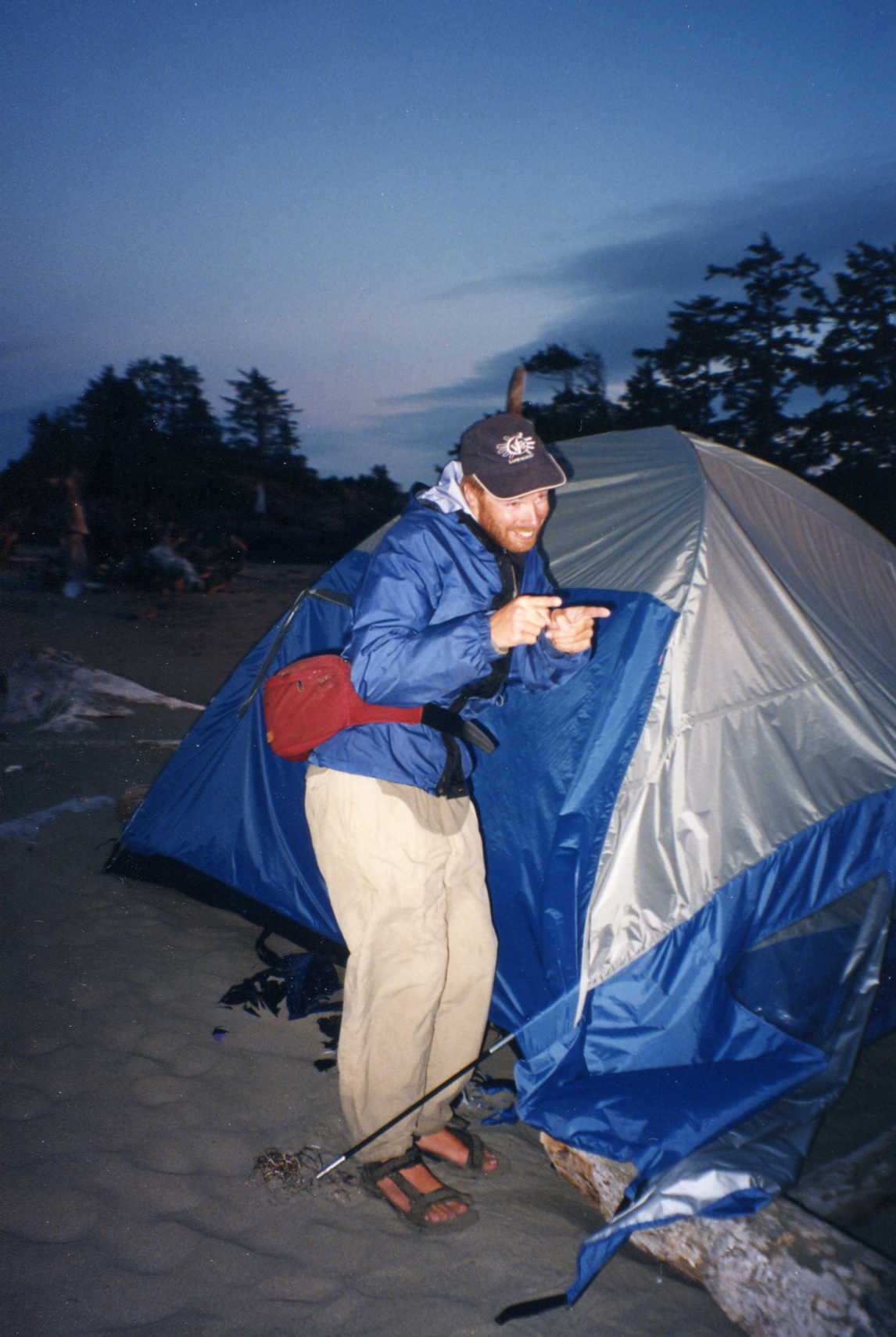
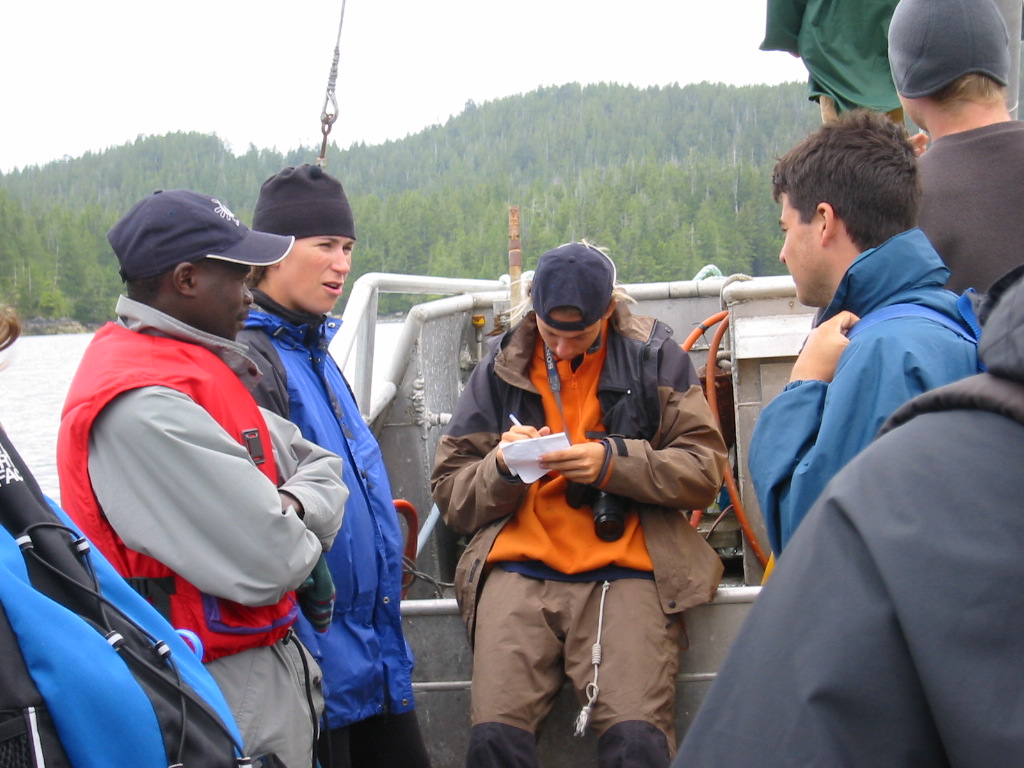

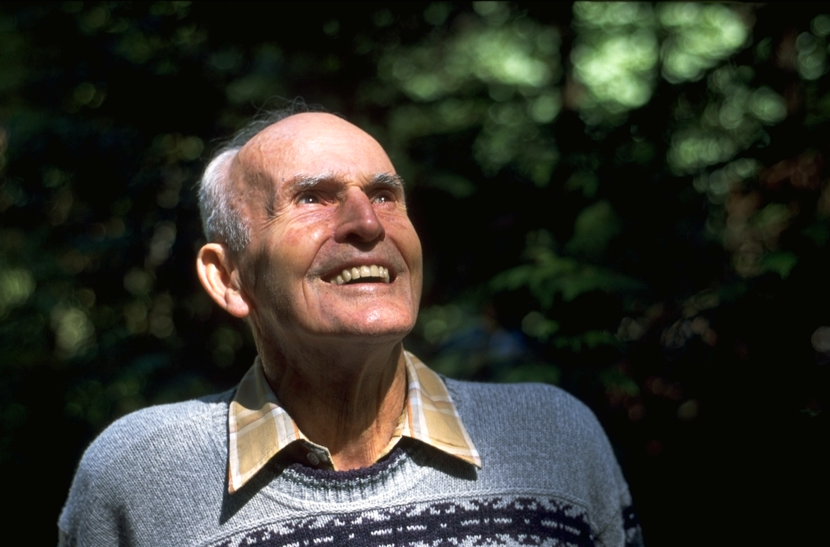
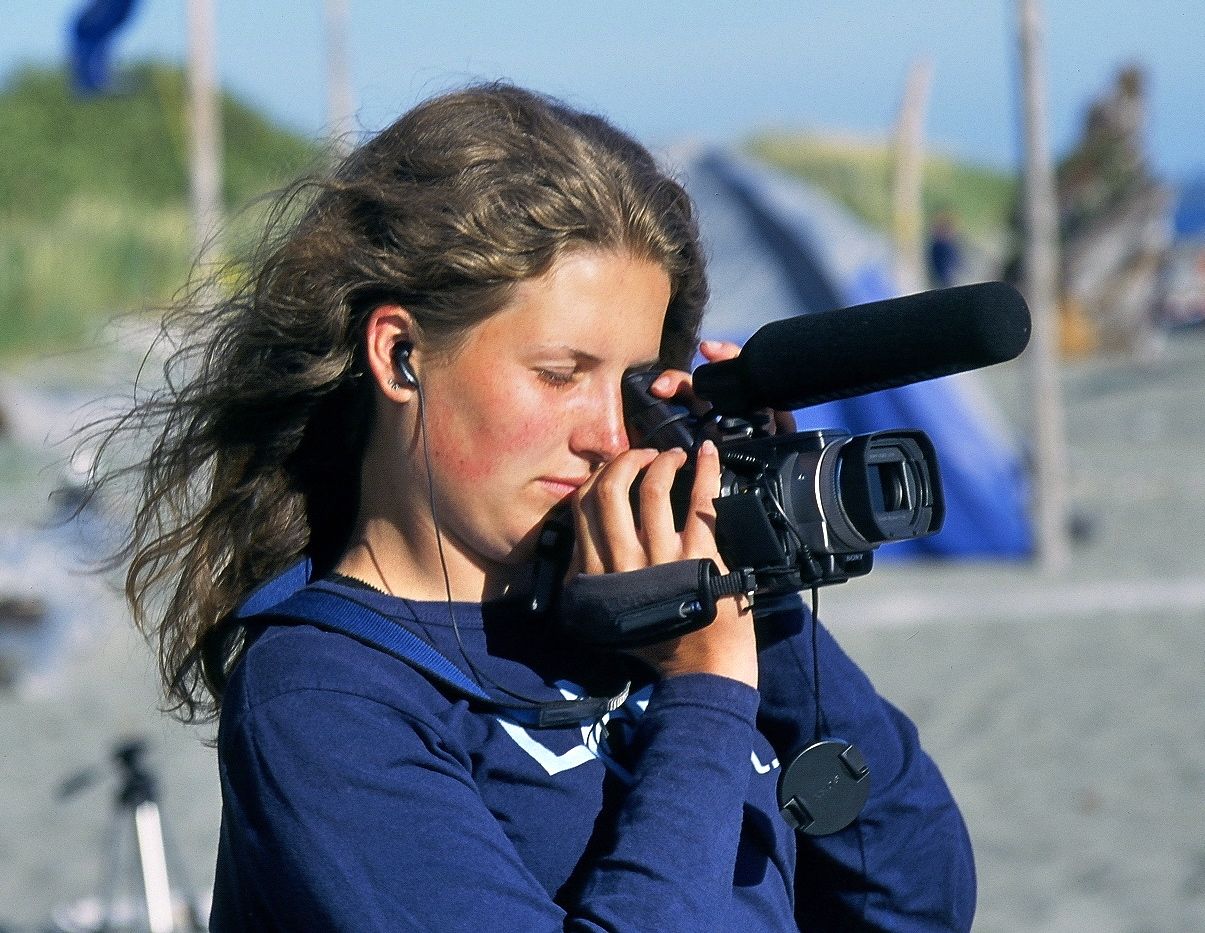
LIFE programs were made feasible by a funding formula that involved the participants raising about half of the funds within their communities while LIFE's fundraising success with foundations, governments, and companies provided the balance. Many charities discover that their institutional funders cease supporting them after a few years and move on to other organizations (hence the charities are perpetually cultivating new potential donors). This pitfall happened with LIFE and it was not possible to sustain the organization with funding from the young participants alone.
The swan song for LIFE was one of its most innovative programs, called LIFEquest. An international team of young people spent an extraordinary month creating documentary films in several languages while camping on remote islands on Canada’s Pacific coast. At the time, Apple Inc considered the utilization of laptop computers to edit video in a wilderness setting a pioneering activity and they donated the hardware and software for LIFEquest.
Jeffrey received significant recognition during the LIFE years including CBC Television’s The National “Canadian Hero”, Maclean’s Magazine's “100 Canadians to Watch”, and The Vancouver Sun newspaper's “B.C.’s 25 Most Influential: Next Wave”. He was also the subject of the television documentary "Jeff Gibbs: Life Voyages".
A TV news profile of LIFEquest 2002.
CBC Television's "Canadian Hero" profile (two minutes in duration) featuring the inaugural LIFEboat Flotilla

Traveling With The Panda
Traveling With The Panda
“You can fail at something you don’t want, so you might as well take a chance doing what you love.”
Jeffrey's Years With WWF
During his time with LIFE, Jeffrey came to believe that he could greatly magnify the impact of his projects if they were implemented through one of the world's large environmental organizations instead of a small charity that he managed himself. For several years while running LIFE, he wrote letters outlining his proposal to the leader of WWF International, the Switzerland-based secretariat for the world's largest environmental conservation organization (the one with the panda logo). Year after year, he would receive polite declines from WWF. Finally, in a fit of frustration and determination, he boarded a plane for Jordan to attend an international gathering of nature conservation scientists — his sole purpose was finding and confronting face-to-face Dr. Claude Martin, the leader of WWF International (whom he knew would be present as a speaker). Their somewhat stressful encounter ultimately proved fruitful as it set in motion further dialogue that eventually led to the creation of the WWF Young Adult Volunteer & Internship Programme. Claude Martin raised the funds and provided the required political will within WWF for the program to be created, while Jeffrey traveled the world from 2004 through 2006 organizing it from the ground up.
Participants of the program (who are in their twenties and selected from an international pool of applicants) spend several months in remote areas of developing nations, living with villagers and working alongside local WWF staff on a gamut of community assistance and nature conservation projects. This immersion experience helps participants understand the links among poverty, human development, and the protection of nature. They share what they have learned through multi-media storytelling. For three years, Jeffrey circled the globe on behalf of WWF — visiting remote forests in Madagascar, the Himalayan Buddhist Kingdom of Bhutan, the humid shores of the Coral Triangle in the Solomon Islands, tiger reserves in India, and jungles and wetlands of Brazil's hinterland. His role was bringing the best practices of volunteer-sending organizations to WWF, as well as providing on-site planning and staff training for the program. The WWF International Young Leaders Program has thrived long after he completed his task. As of 2016, about 300 young people from 50 nations have participated in this highly formative experience.
Short film made by the first group of WWF International Young Volunteers (Explore Programme) in Madagascar in 2006.
“Back from Madagascar, I noticed that I went there wanting to give a lot but I came back noticing that I’ve received much more! The people are very welcoming and I was easily integrated into community life. I learned the basis of Malagasy language with patience and naturally they showed me their everyday life. I was like an apprentice and I could discover a life simpler than mine, close to nature and where time was stopped. Through dances and songs, walks everyday in the wild nature to meet amazing lemurs or just be sat around a fire at night under a starry sky, I'll keep in mind the unique moments shared with communities and the volunteer team…” Antoine Beaulieu, participant.
Jeffrey's years with WWF shaped him significantly. It was a time when he was able to greatly expand his knowledge and the scope of his work. His repeated visits to the wondrous country of Madagascar made the most lasting impact on him. Although his work with the WWF International Young Volunteers Program is completed, he keeps in contact with a large number of scientific researchers, nature conservationists, human development practitioners, travel guides, and photographers working throughout Madagascar. He envisions returning in the future to conduct initiatives in the areas of filmmaking, educational travel, and support of nature conservation projects.

Spotlight Earth
Spotlight Earth
“There is nothing wrong with hardships and obstacles, but everything wrong with not trying. Even a defeat is better than nothing at all.”
In 2008, Jeffrey became focused (perhaps even obsessed) with organizing decentralized events that were designed to harness the energies of volunteers in their communities. He led a pilot program called the "Beat Global Heat Backyard Festival" in which citizens planned and hosted events in their backyards on a designated weekend across Canada. Each event featured local musical talent and speakers on climate change. The results of the pilot program were disappointing but he still believed in the potential of the idea. He envisioned that such a concept could be built to the point that, one day, such an annual decentralized festival would mobilize people by the thousands to organize and host their own small events in their homes, schools, and community spaces around the world — attended by their friends, neighbours, and peers. Collectively, these thousands of small events would involve millions of people in awareness raising, fundraising, and advocacy actions for major global challenges like climate change. To pursue this goal, he gathered friends and then set out to form partnerships with a number of international organizations and esteemed individuals. The festival program was renamed Spotlight Earth. The next three and a half years were the most discouraging and frustrating of his long career. Despite making contact with heads of major international corporations, leaders of global climate campaign groups, United Nations officials, and even a former Canadian Prime Minister, the partnerships Spotlight Earth needed to promote itself on a large scale did not come together. Meanwhile, every effort to launch Spotlight Earth in the absence of such heavyweight collaborators was met with meagre results or outright failure. Finally, in 2013, Jeffrey faced his defeat with Spotlight Earth and decided to give his efforts a rest in order to learn from the experience and regroup.
“Far better is it to dare mighty things, to win glorious triumphs, even though checkered by failure... than to rank with those poor spirits who neither enjoy nor suffer much because they live in a gray twilight that knows not victory nor defeat.”


















